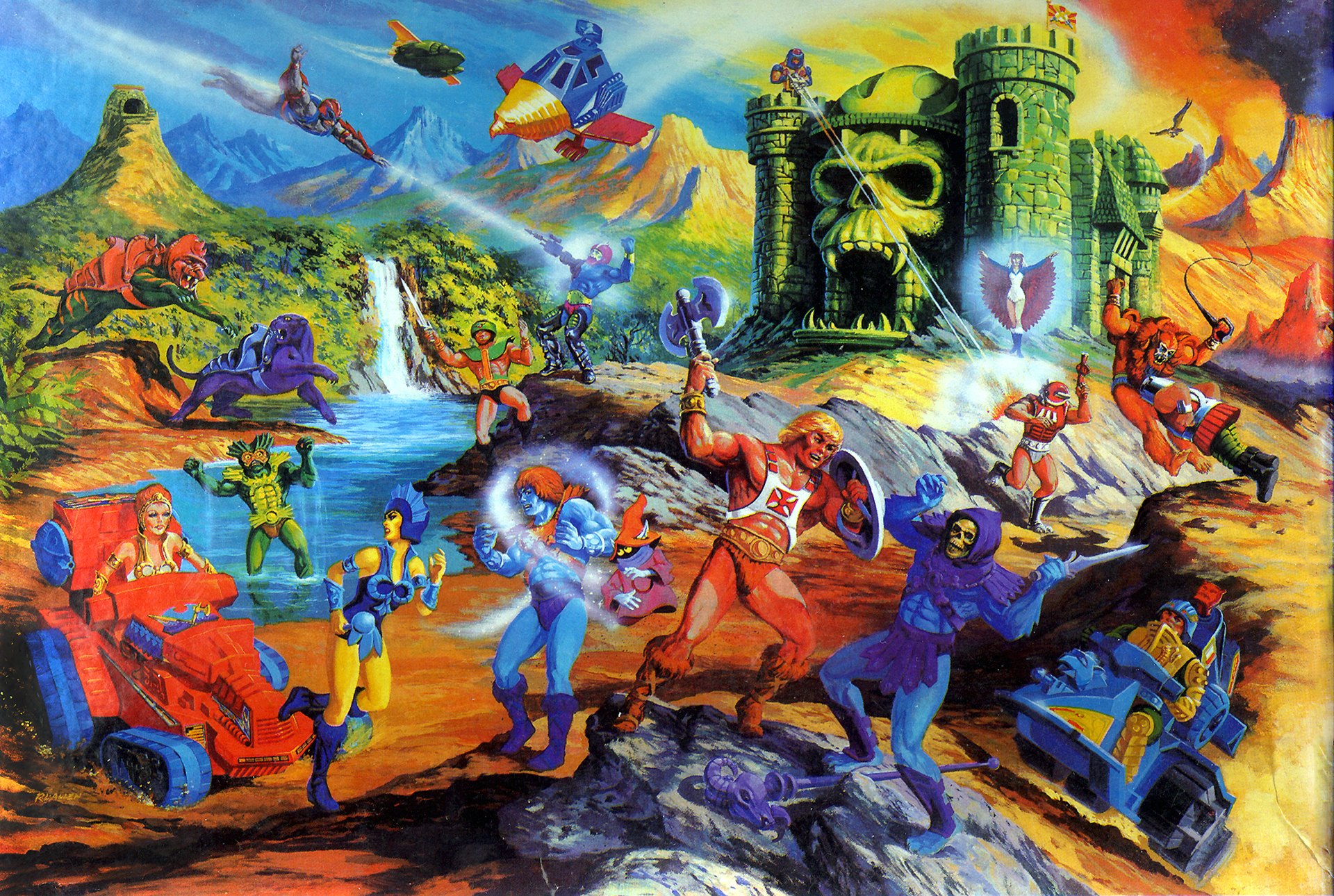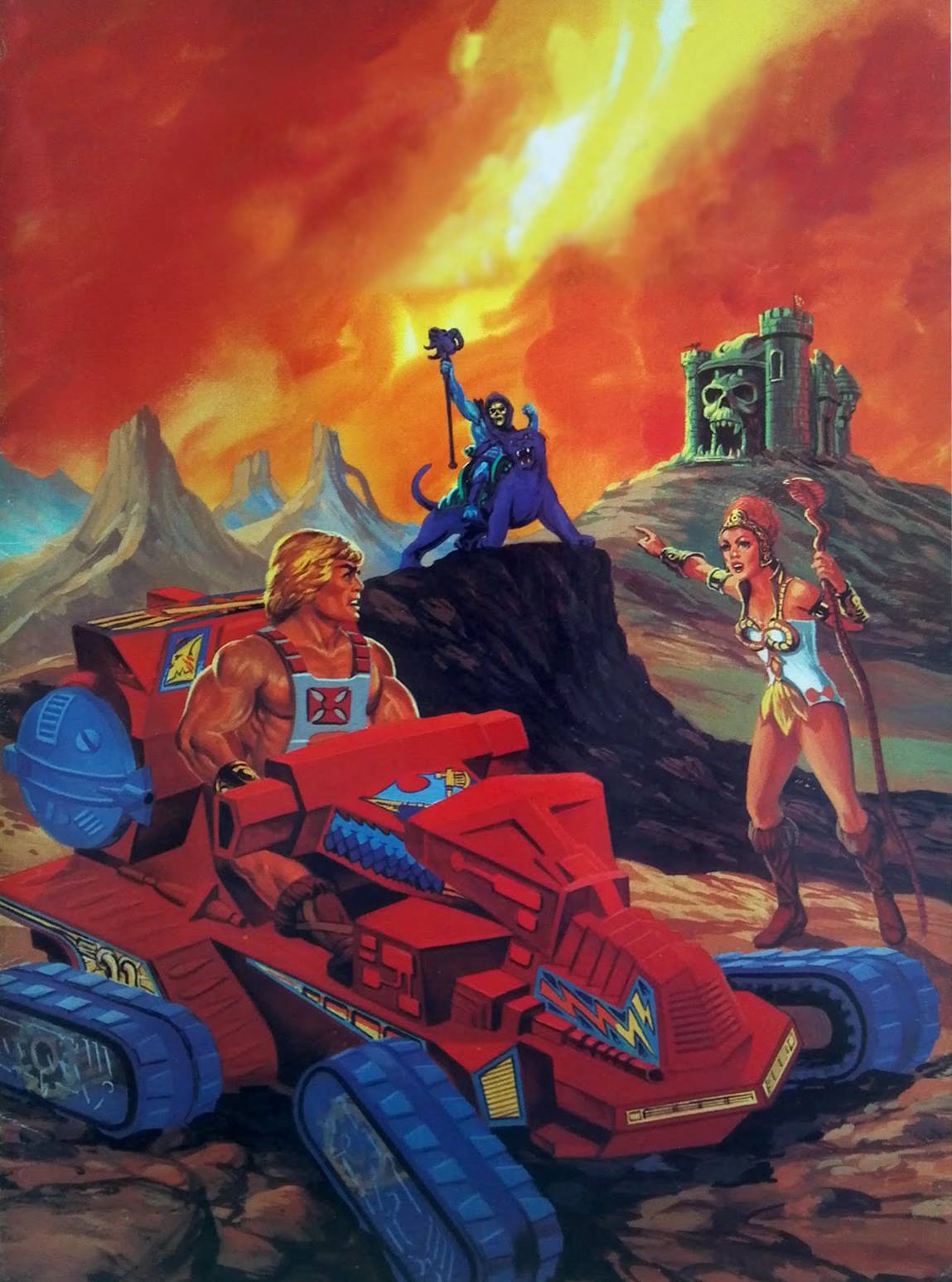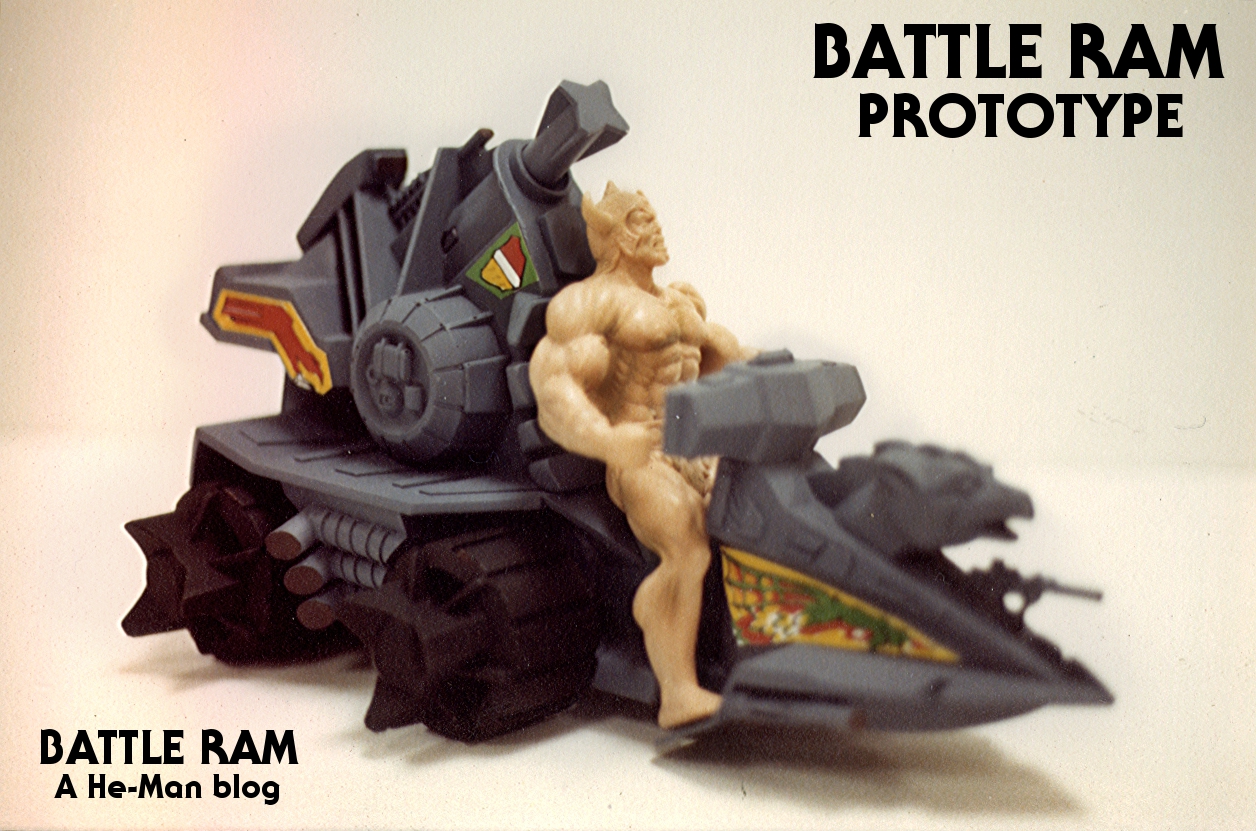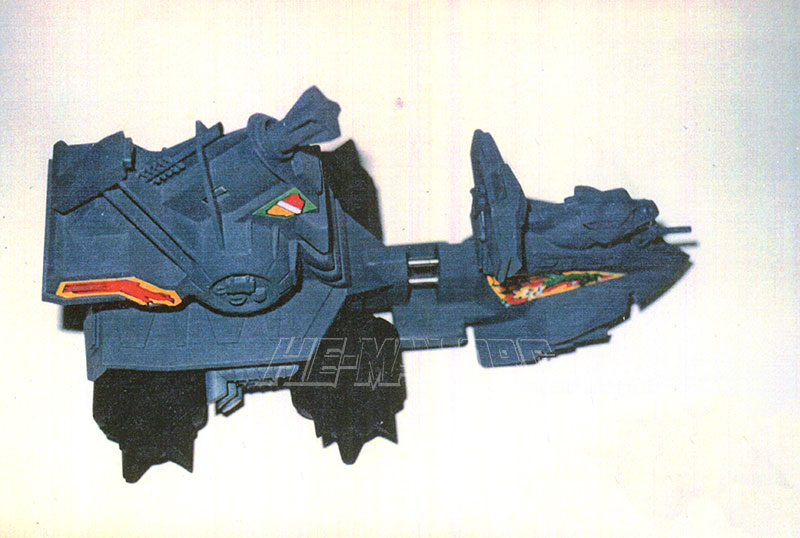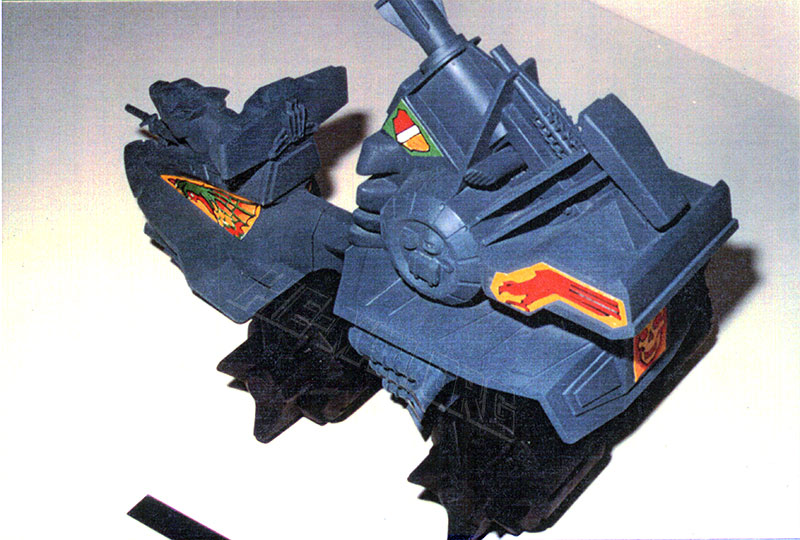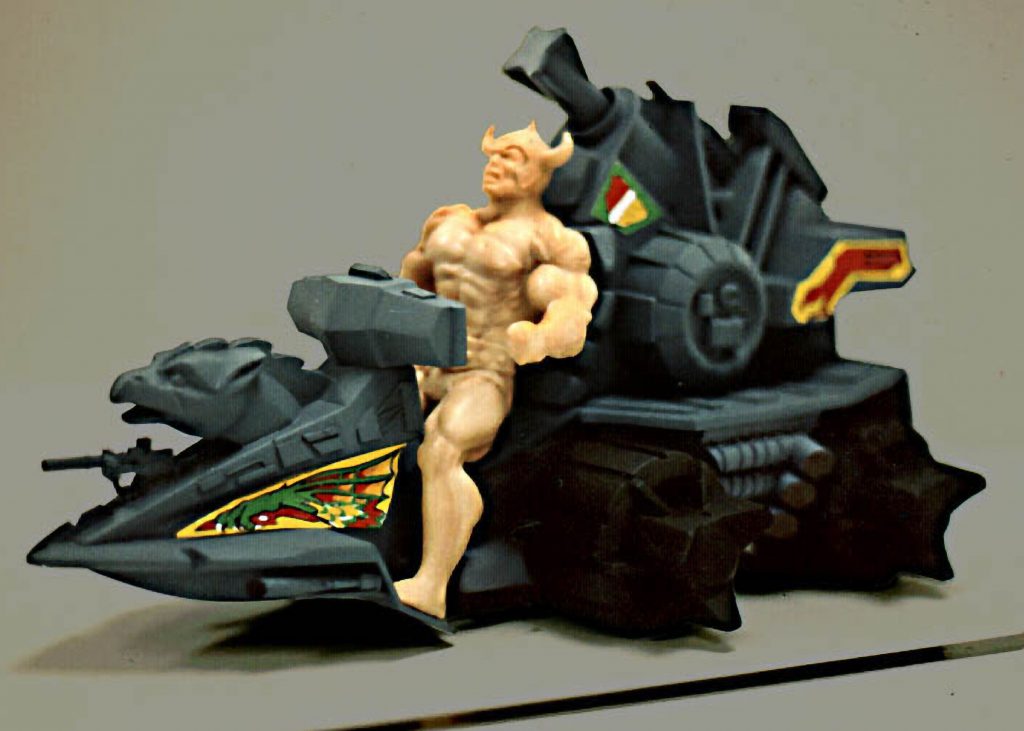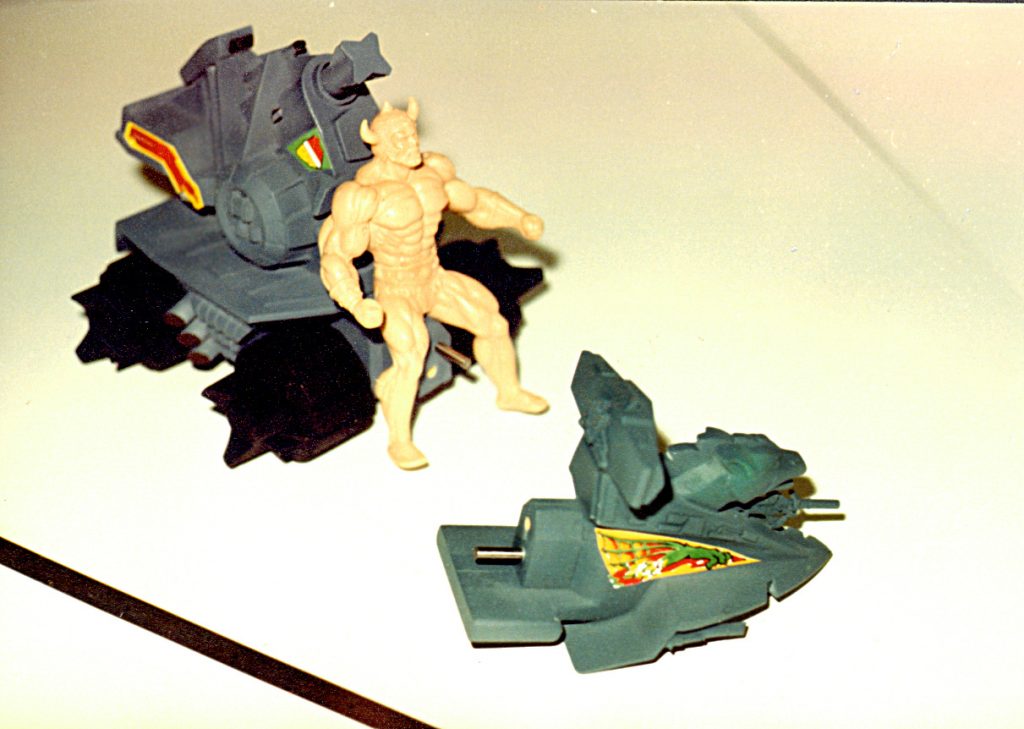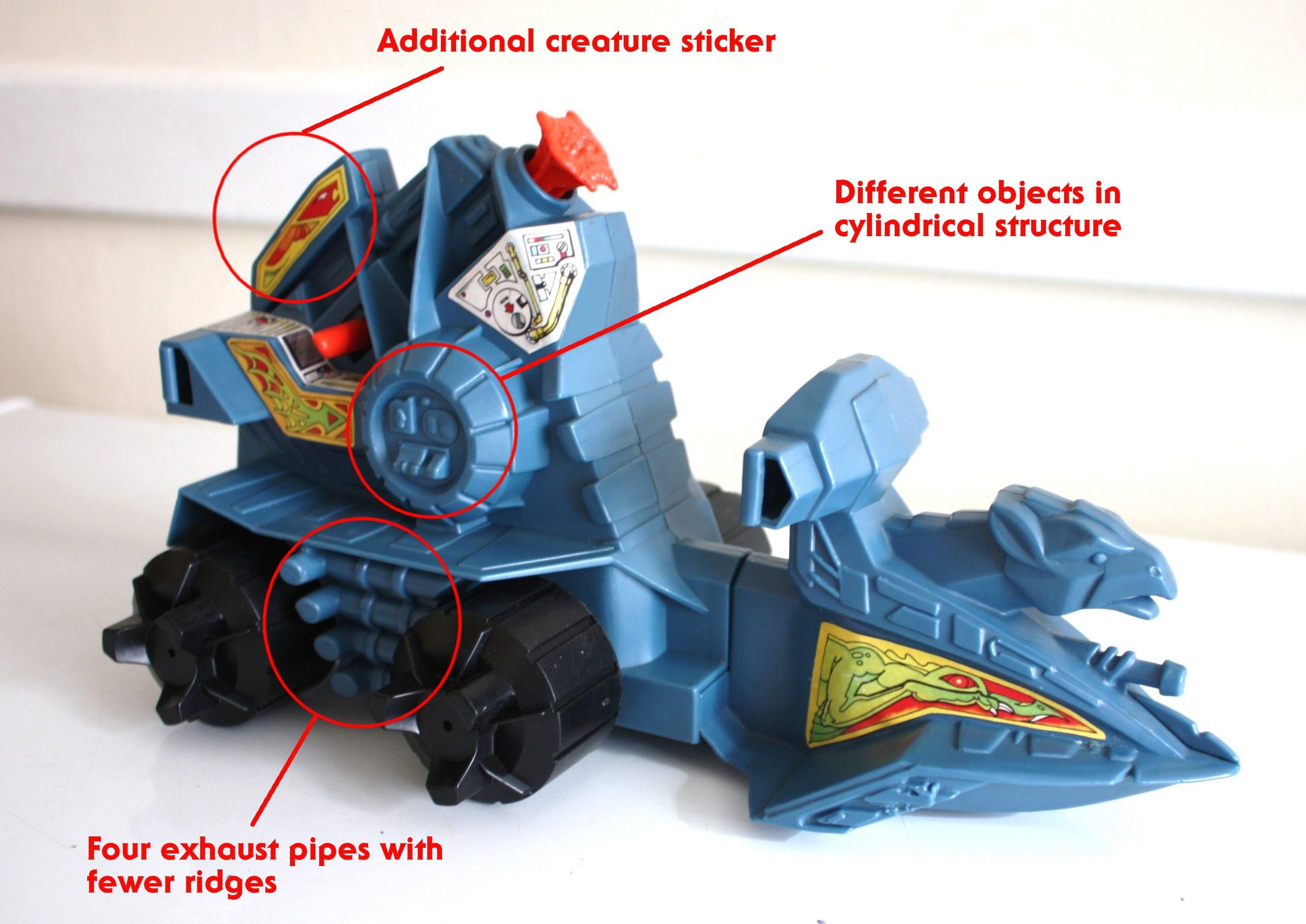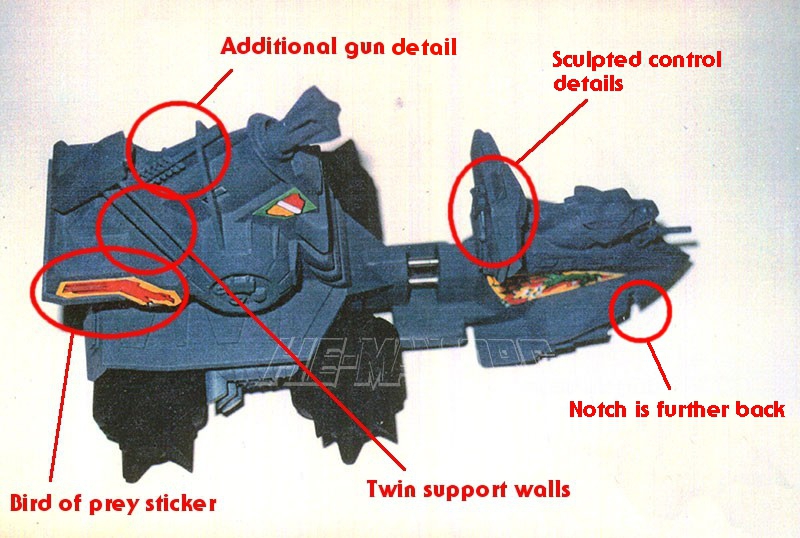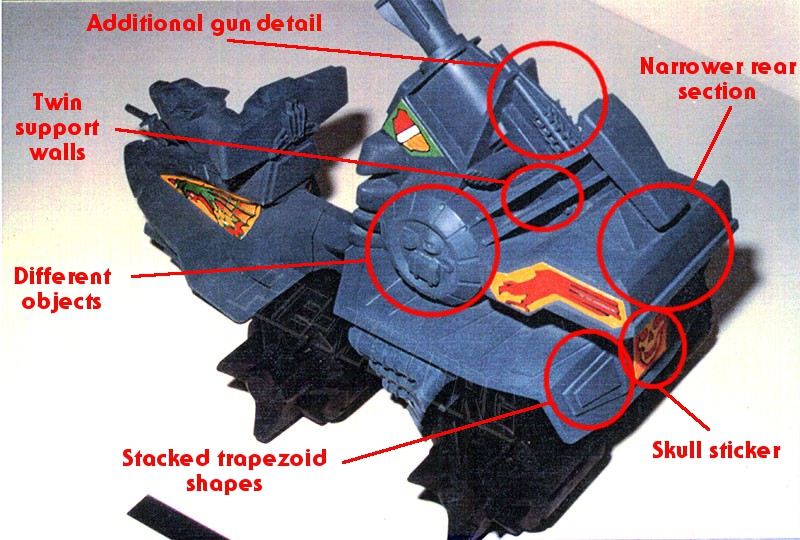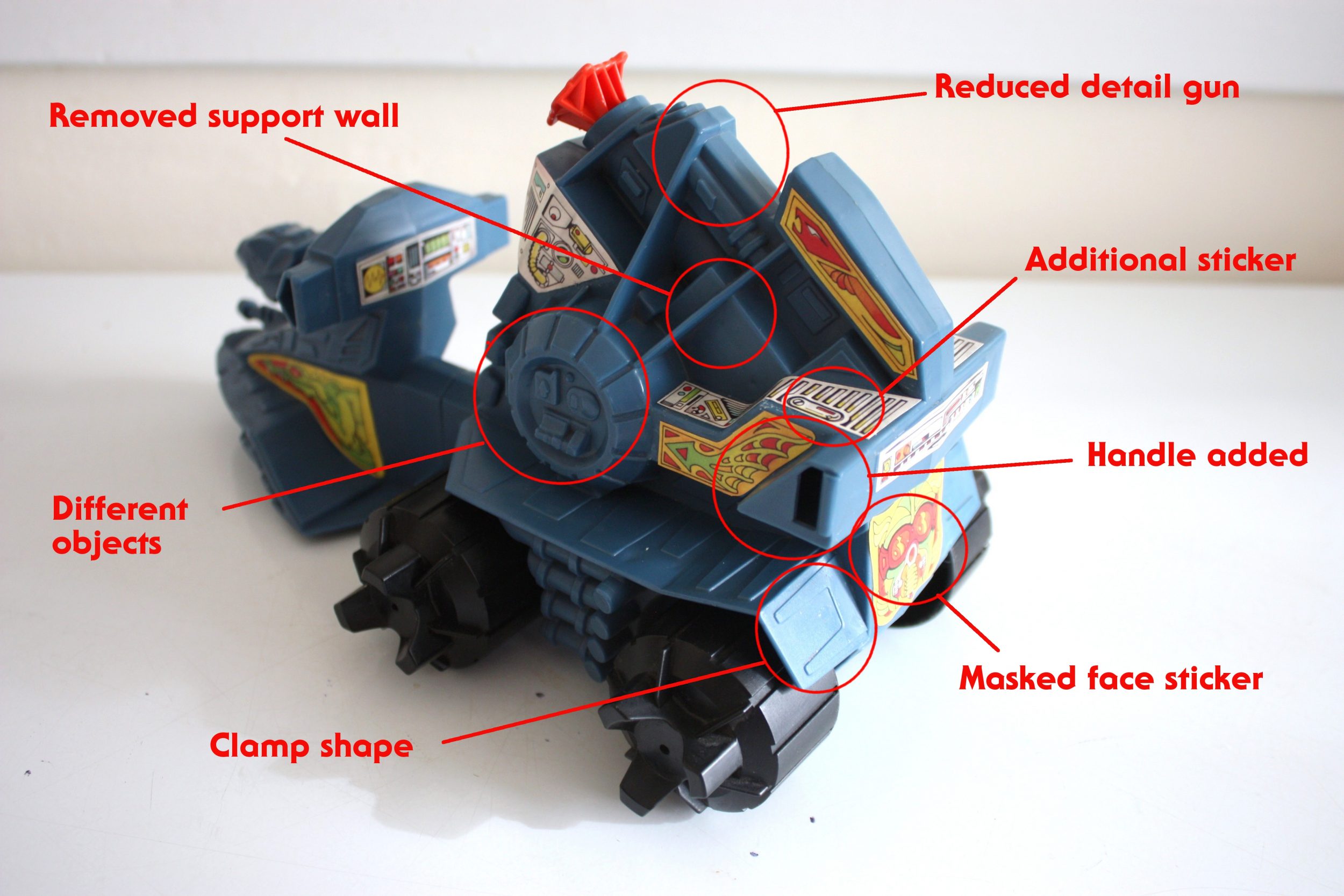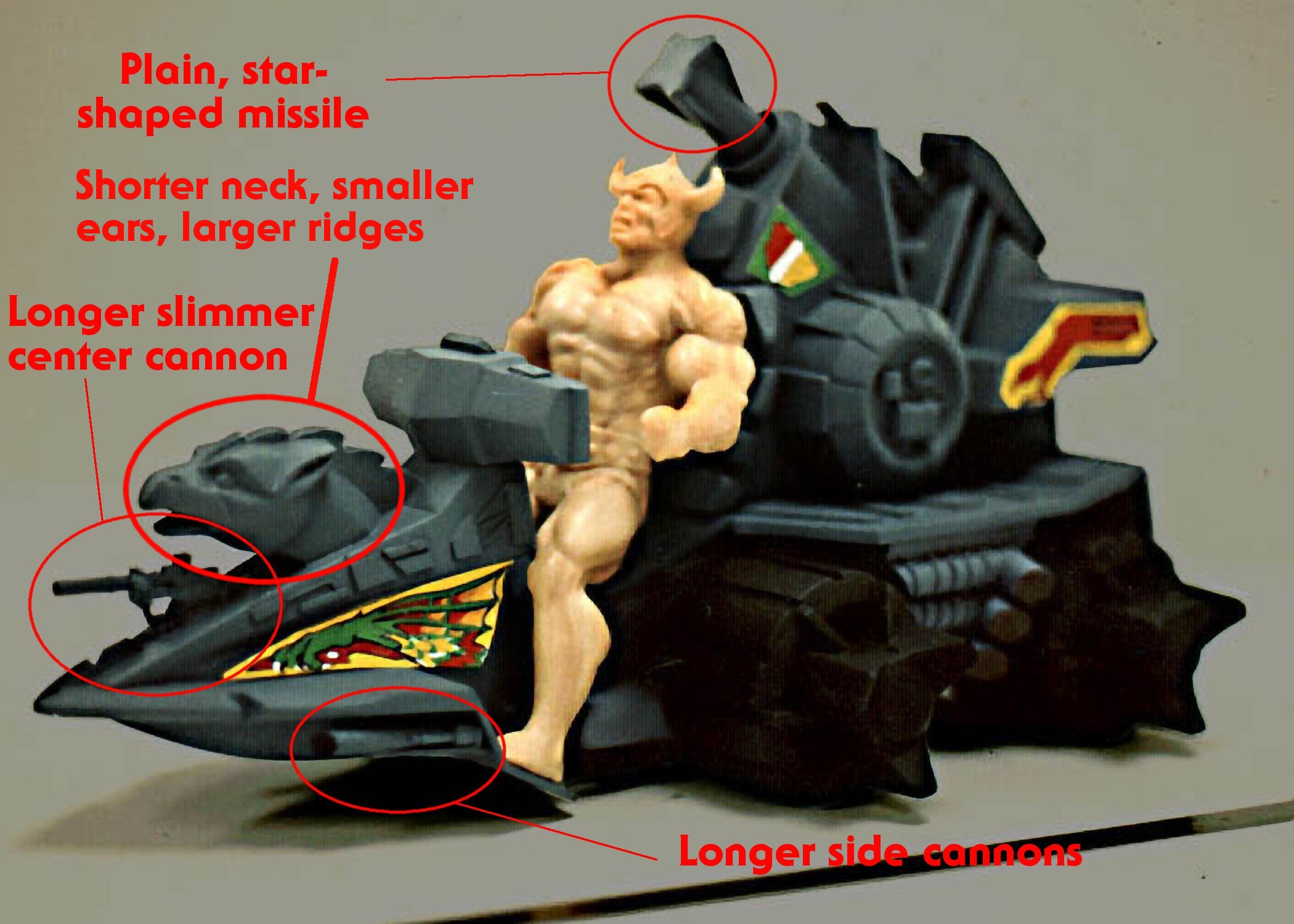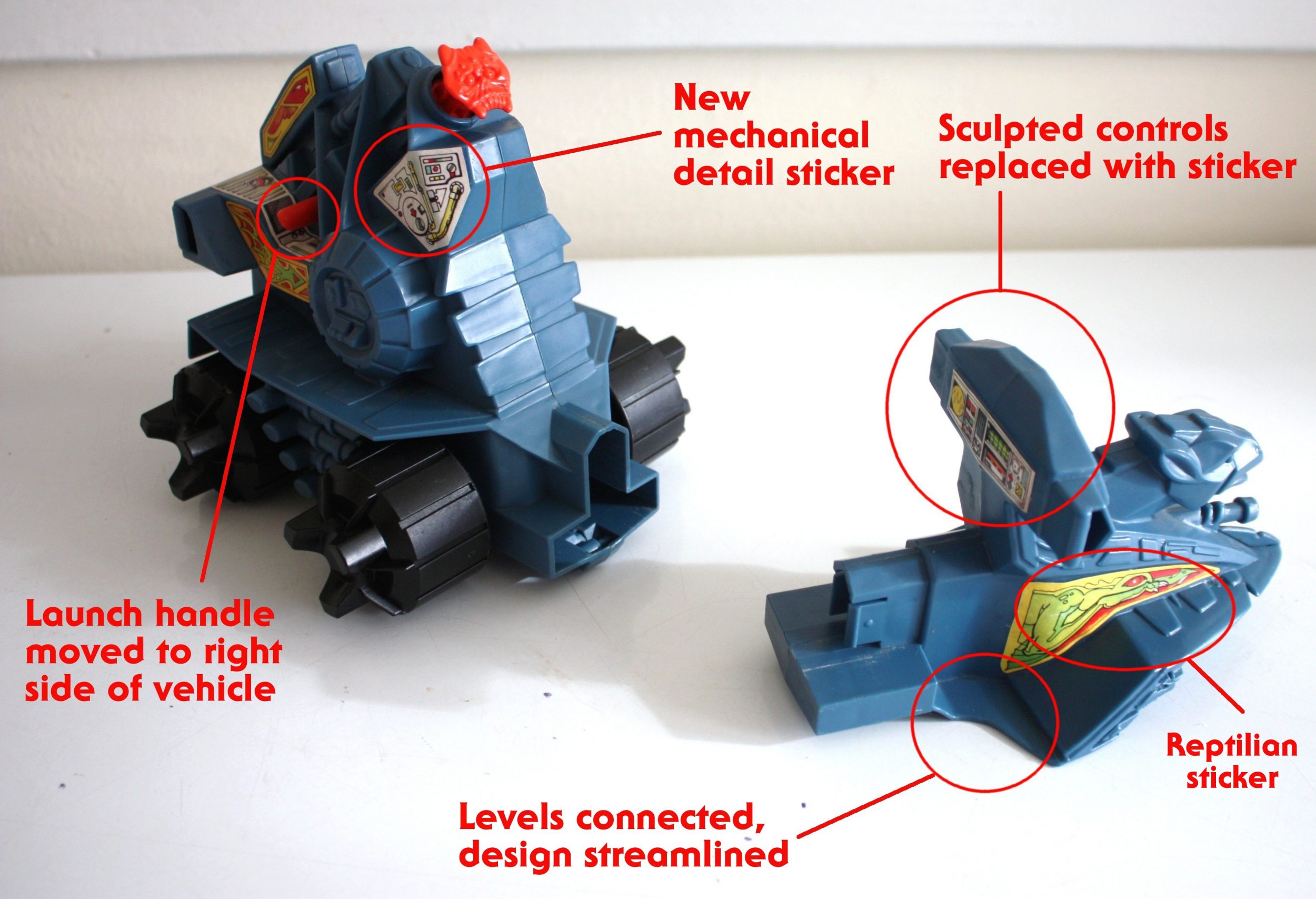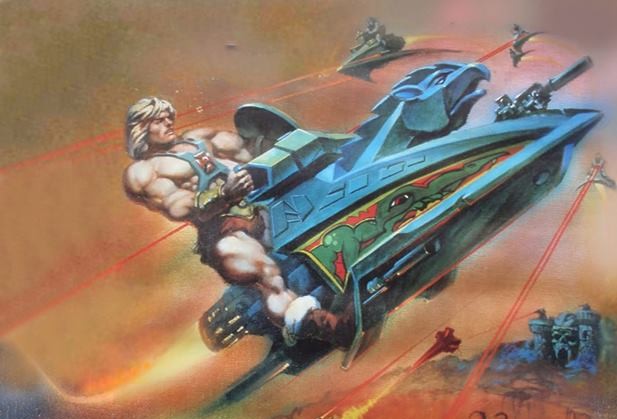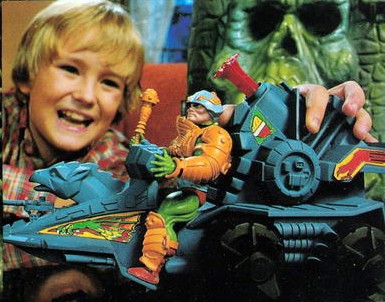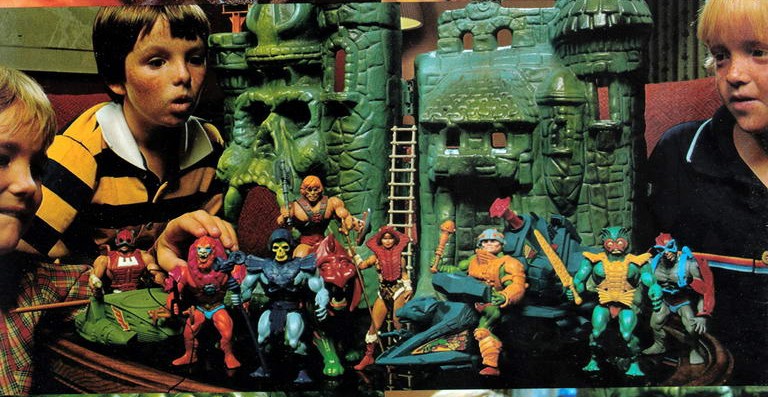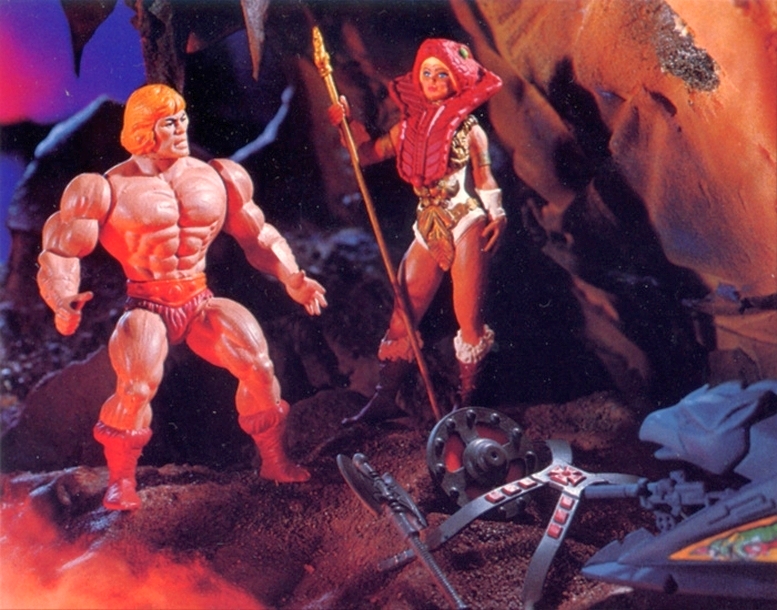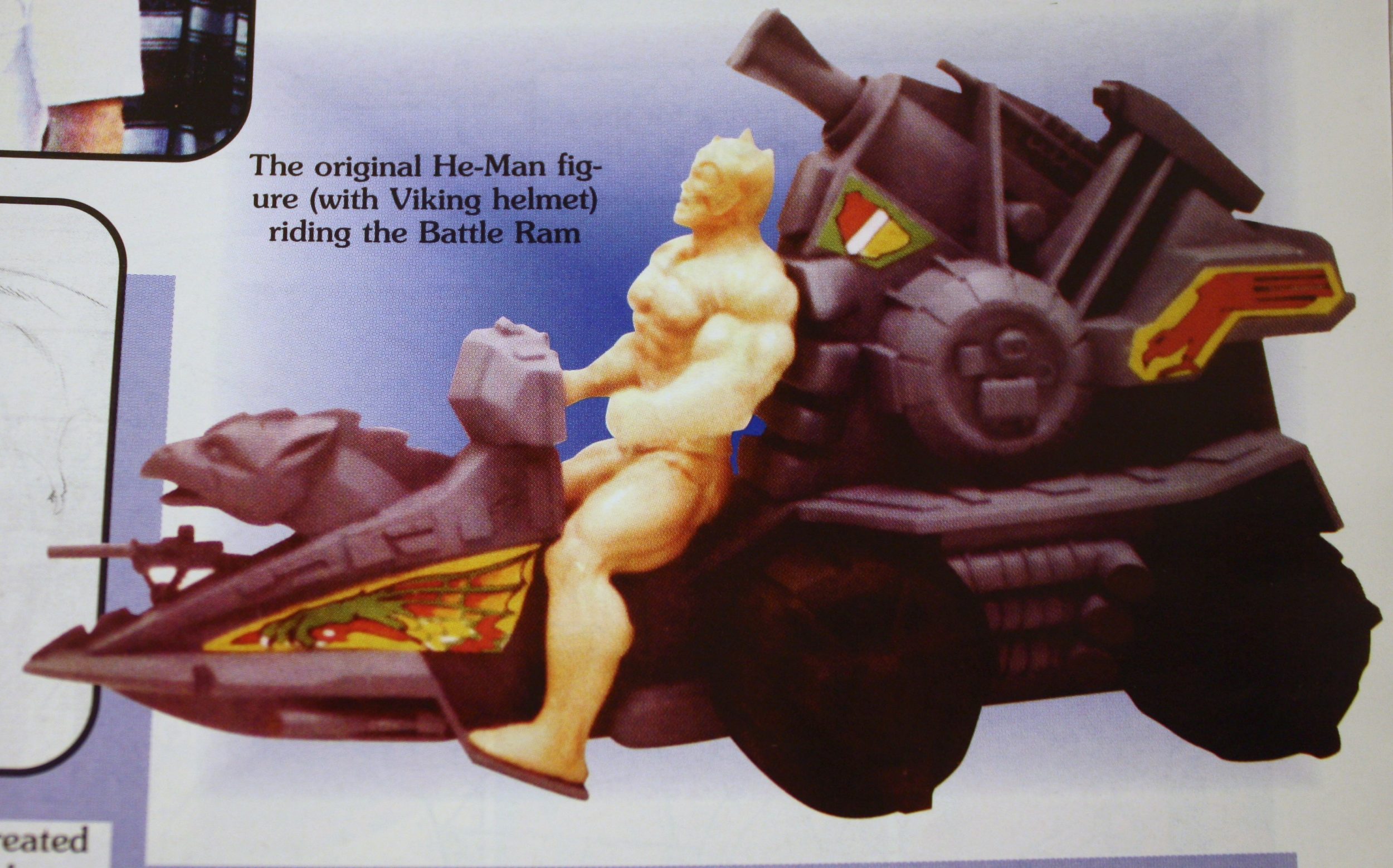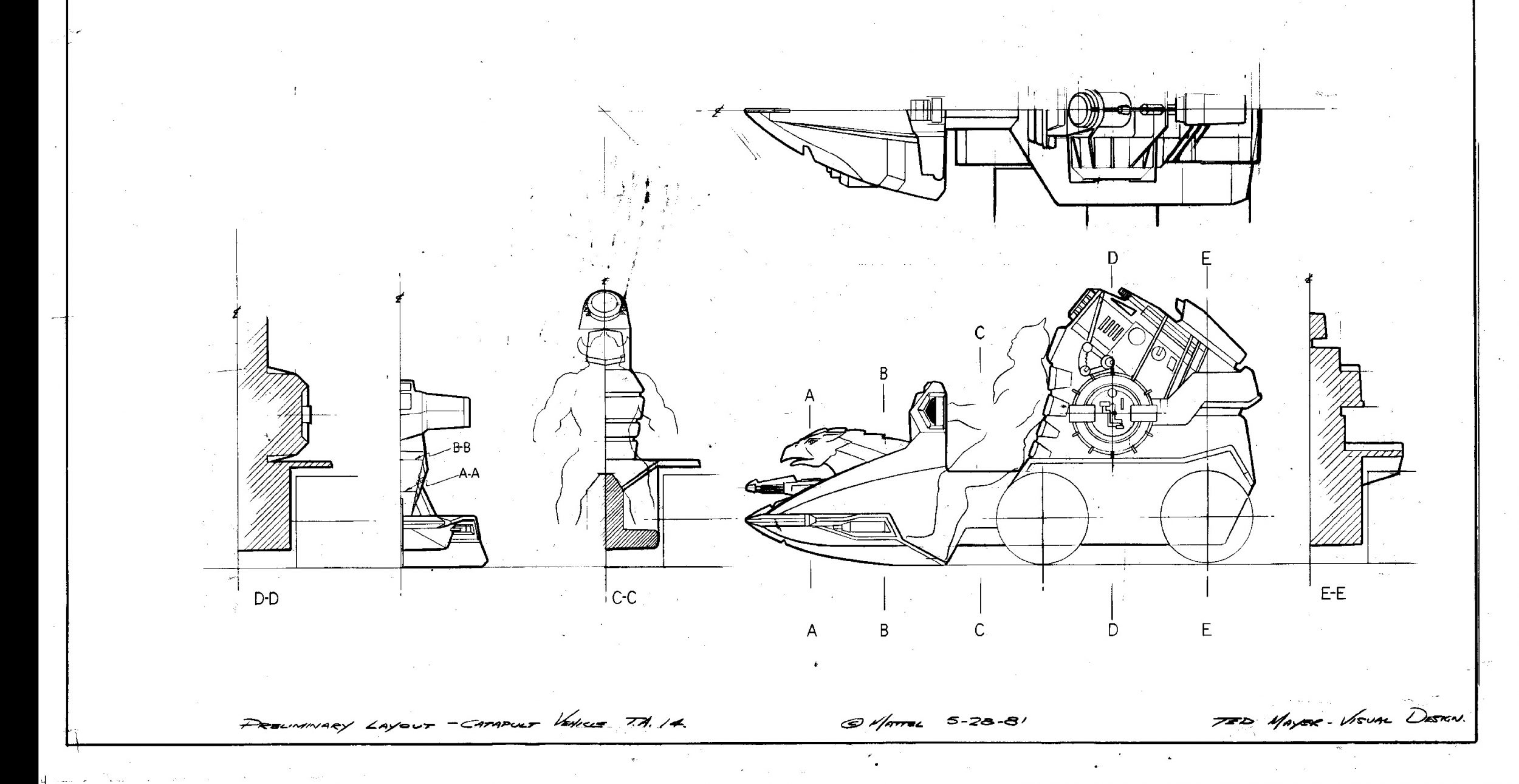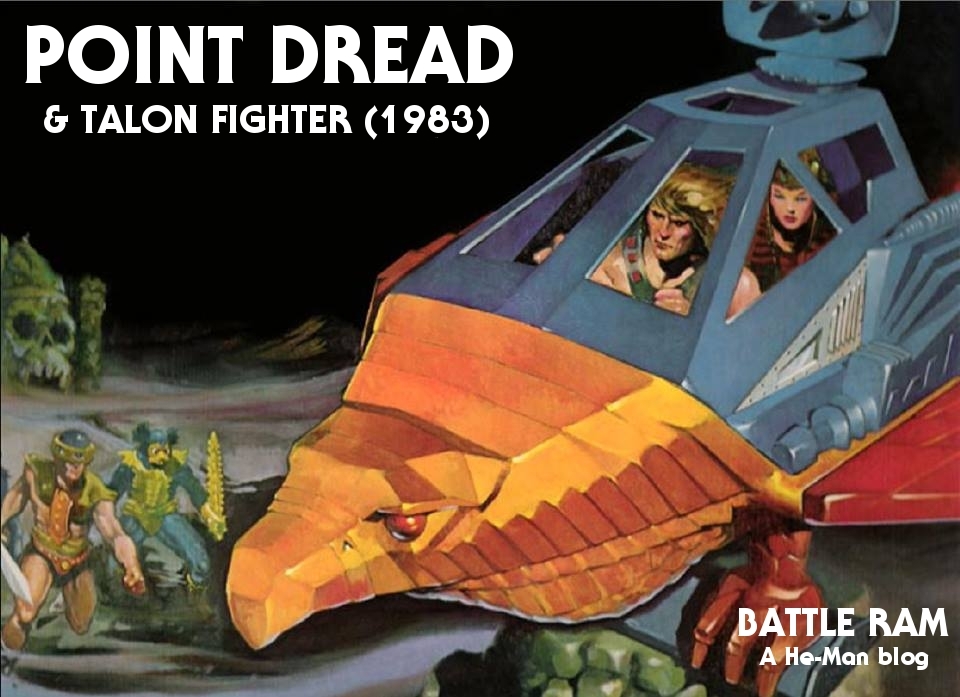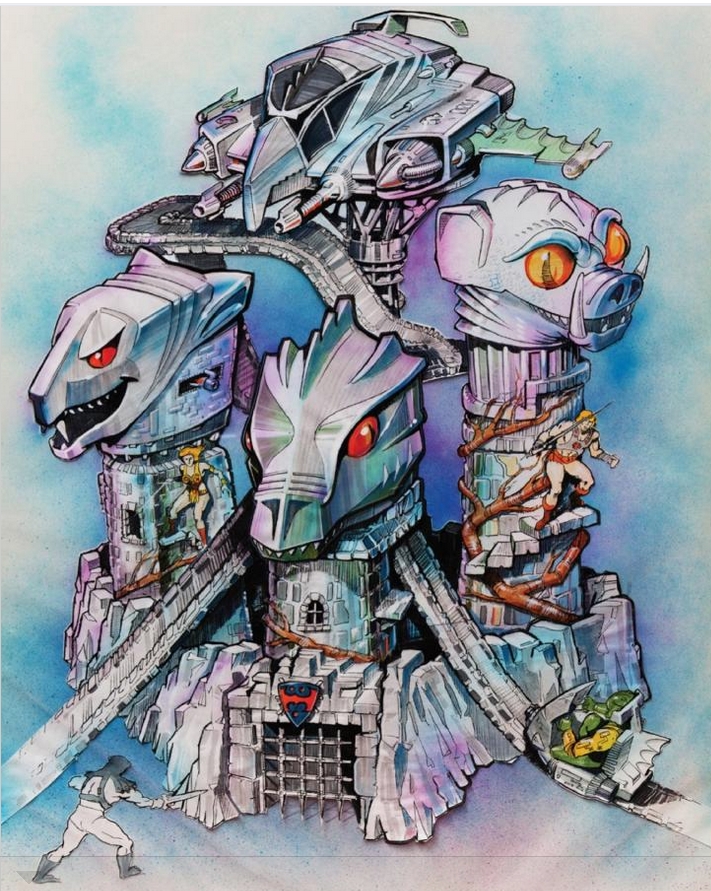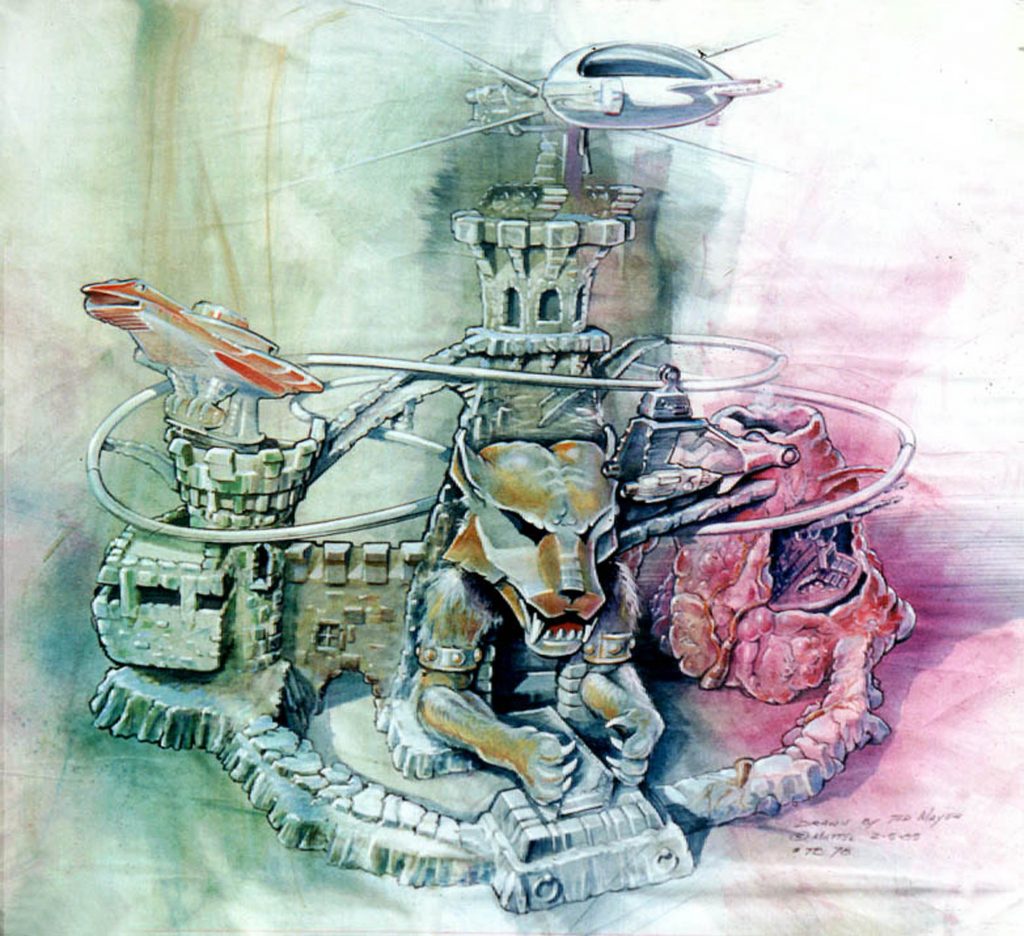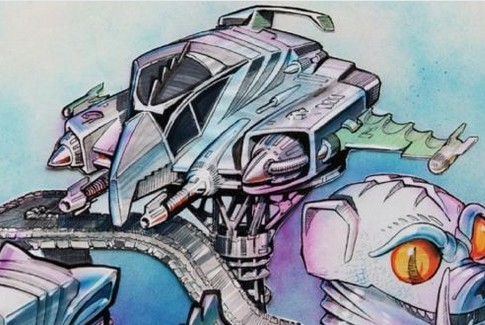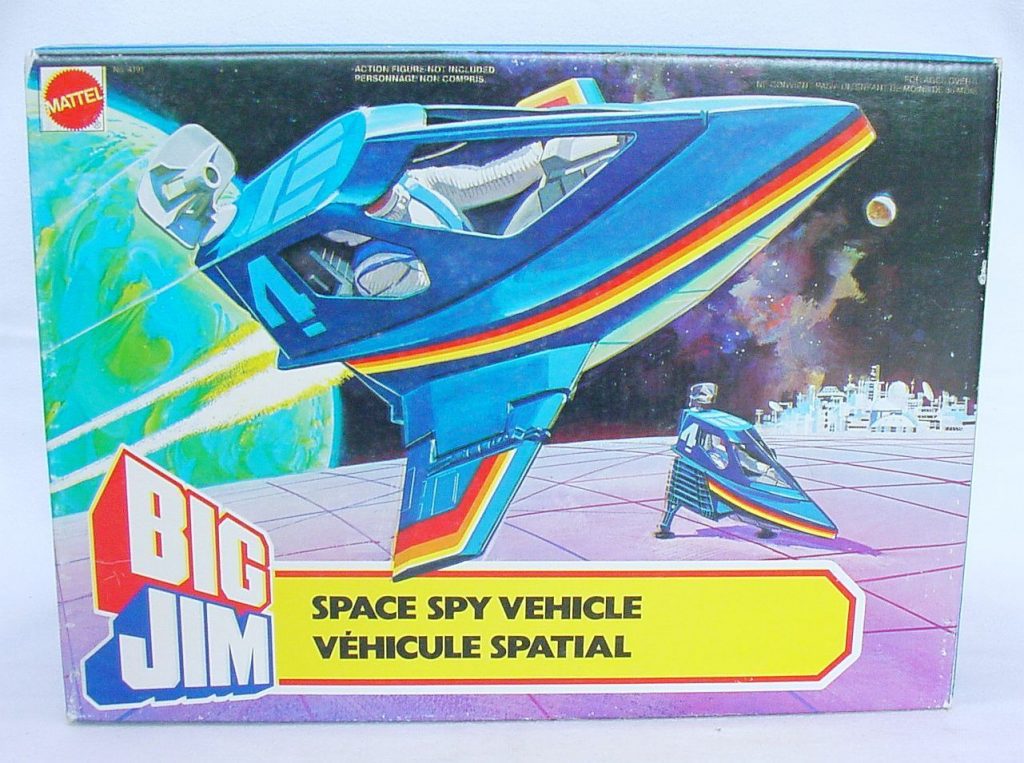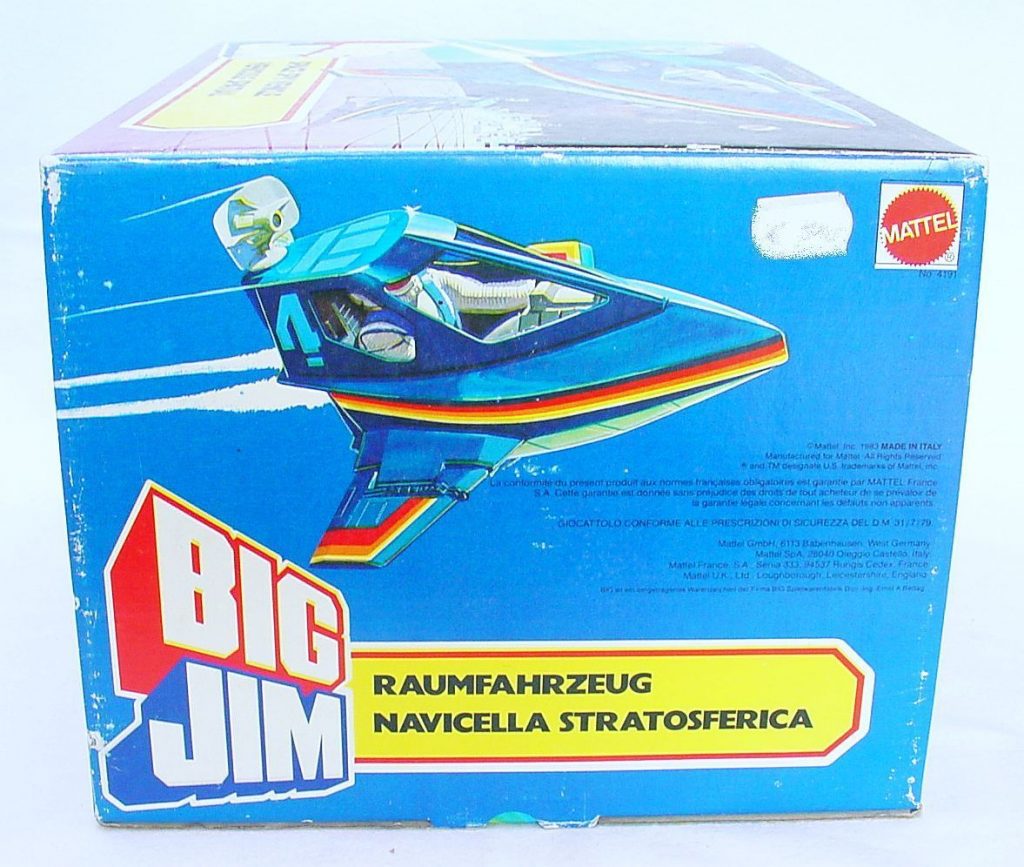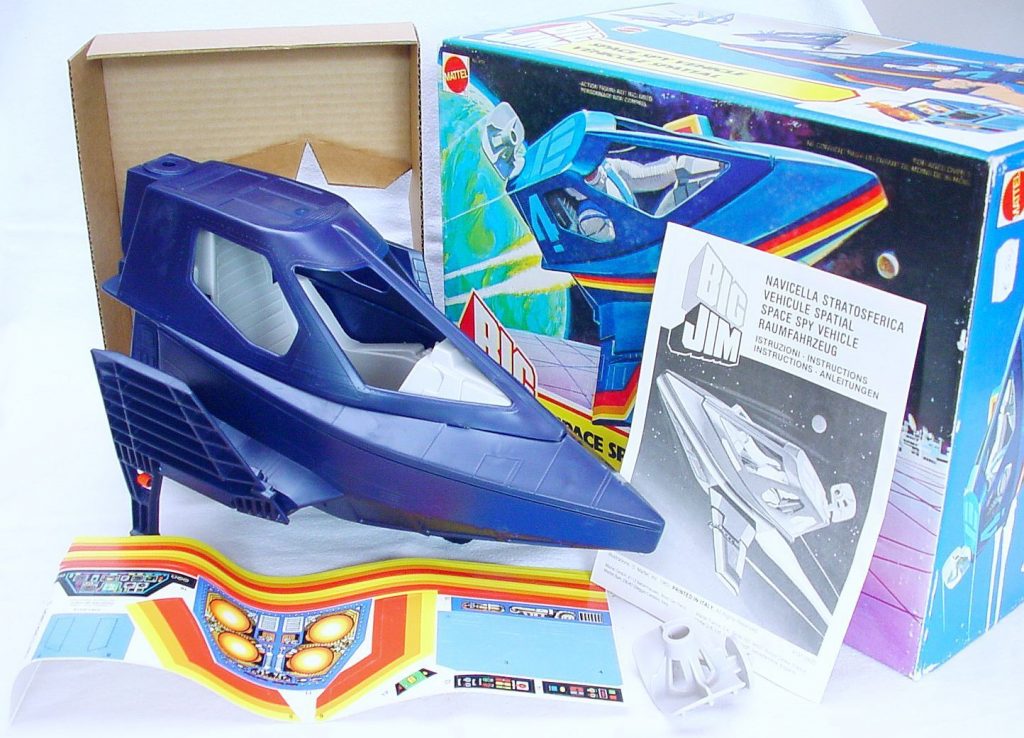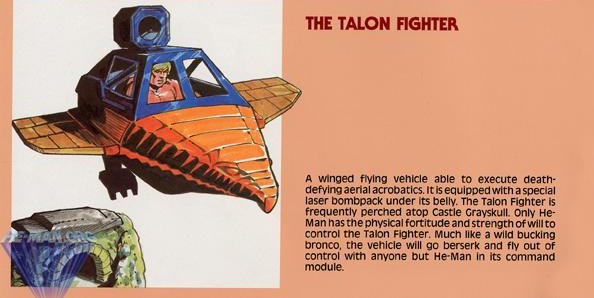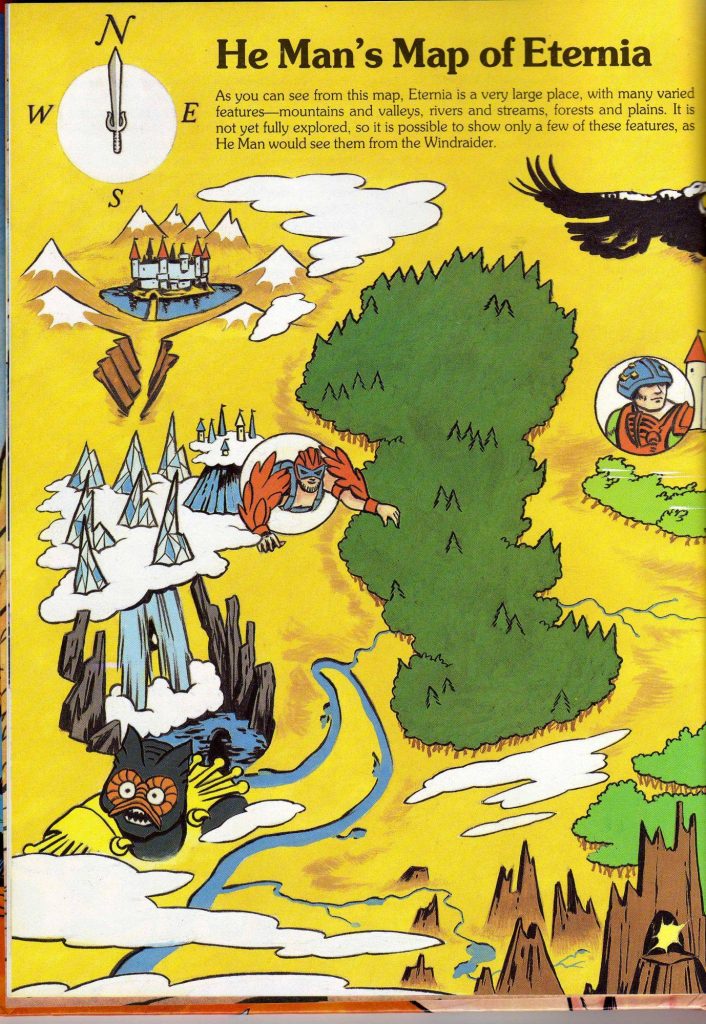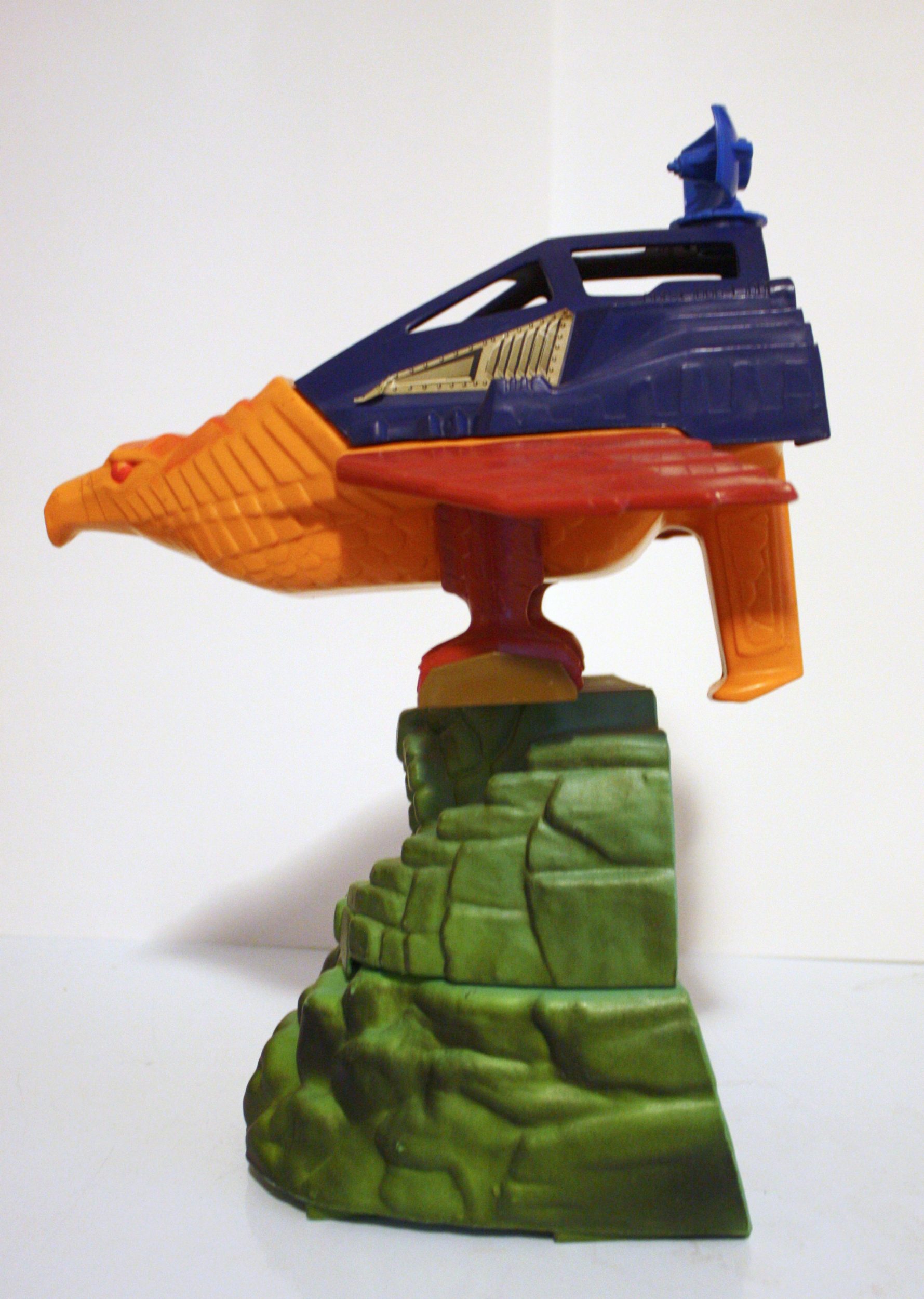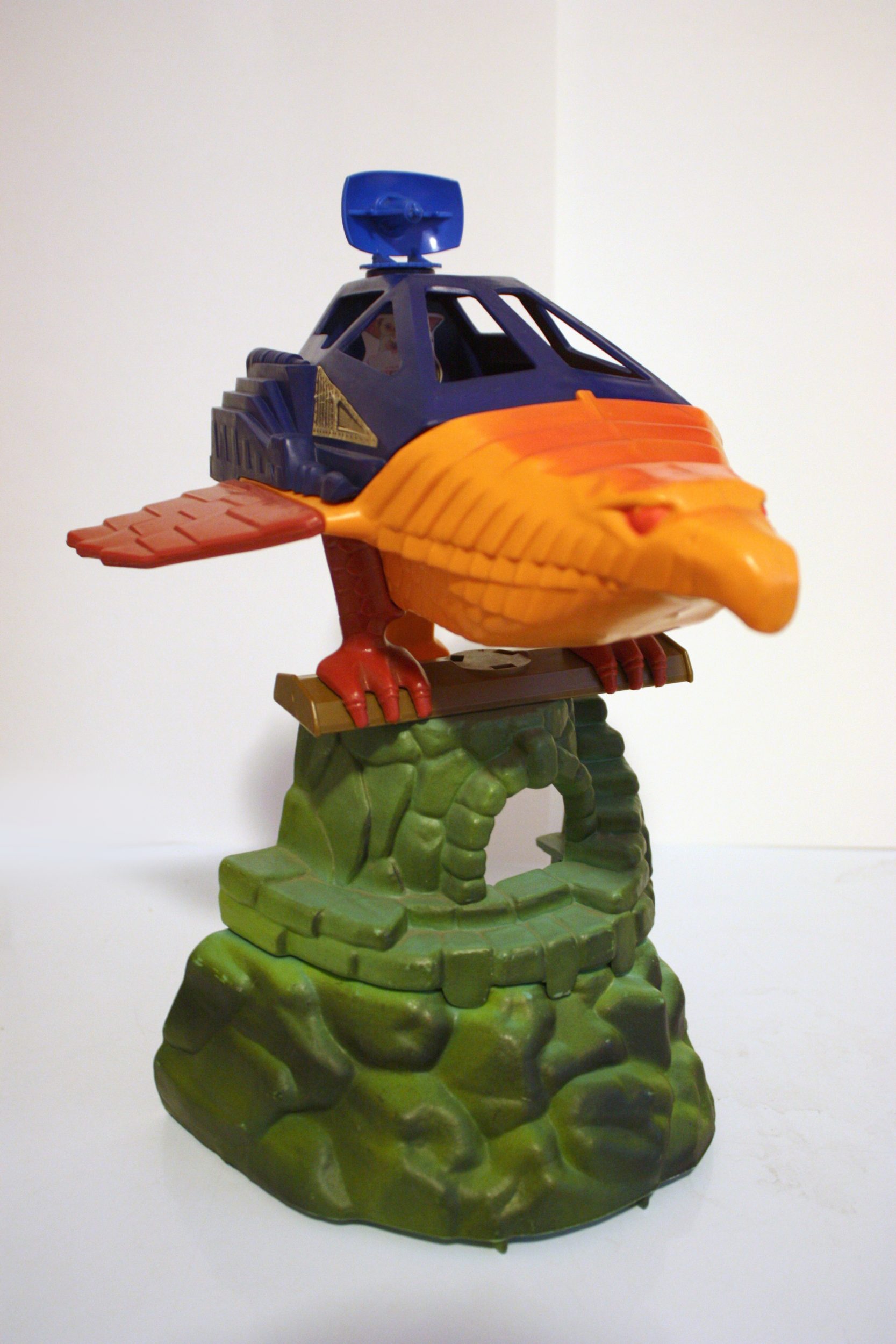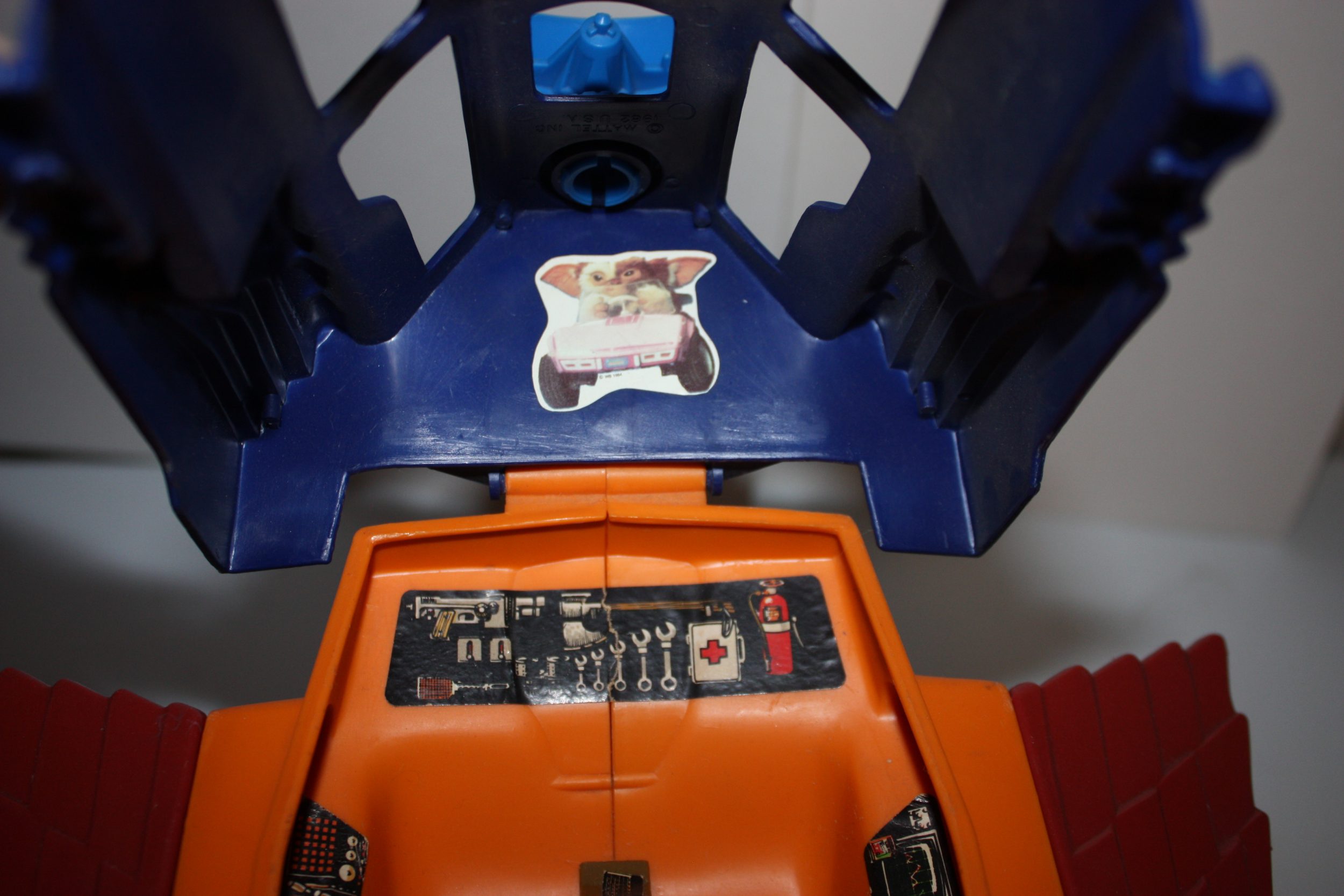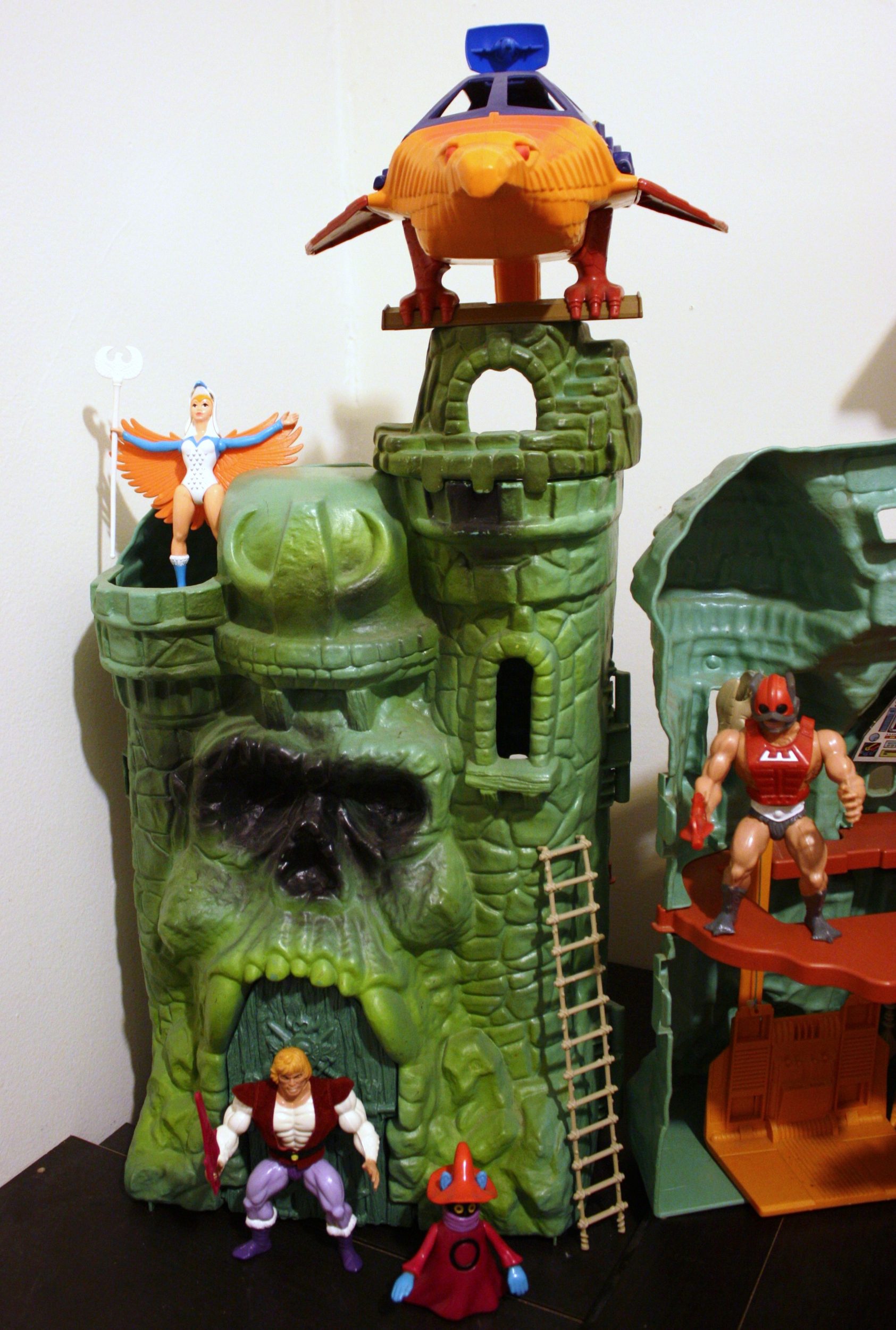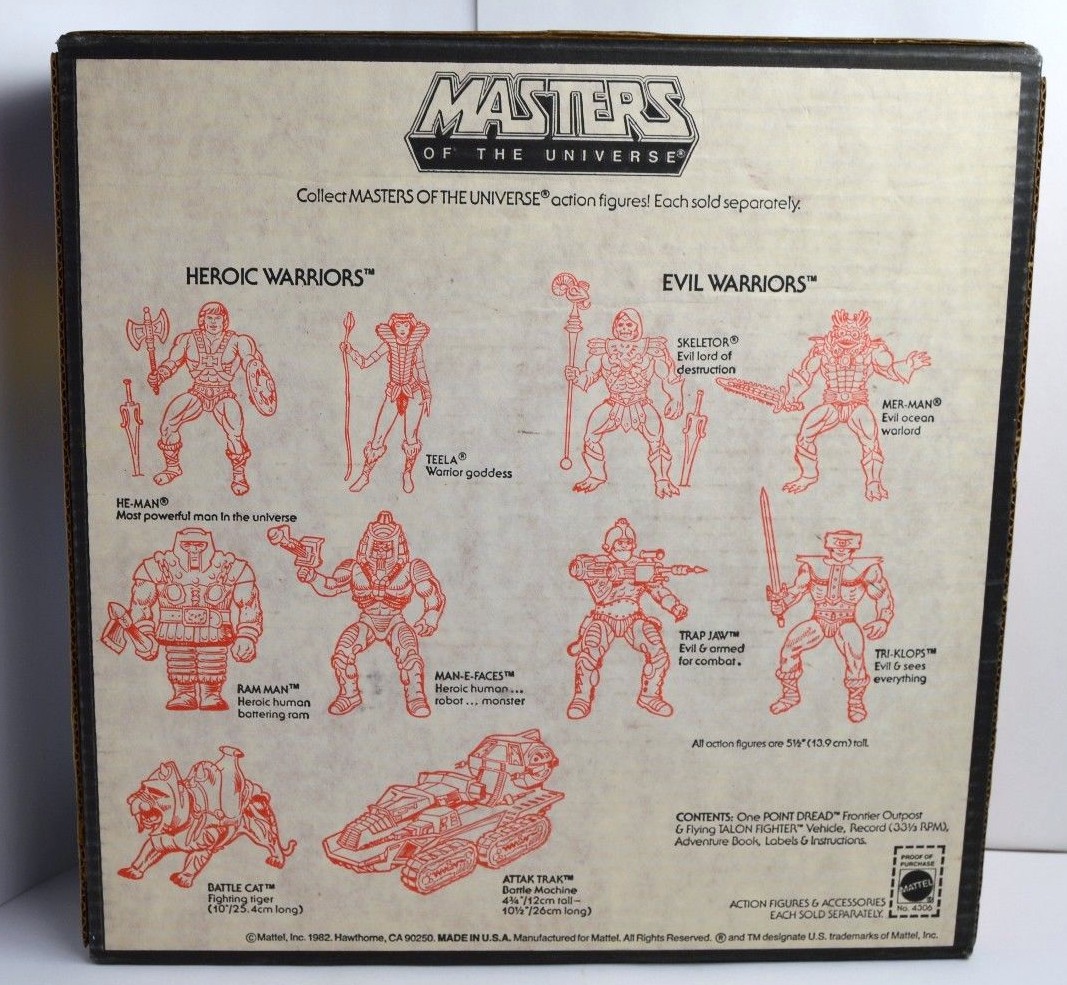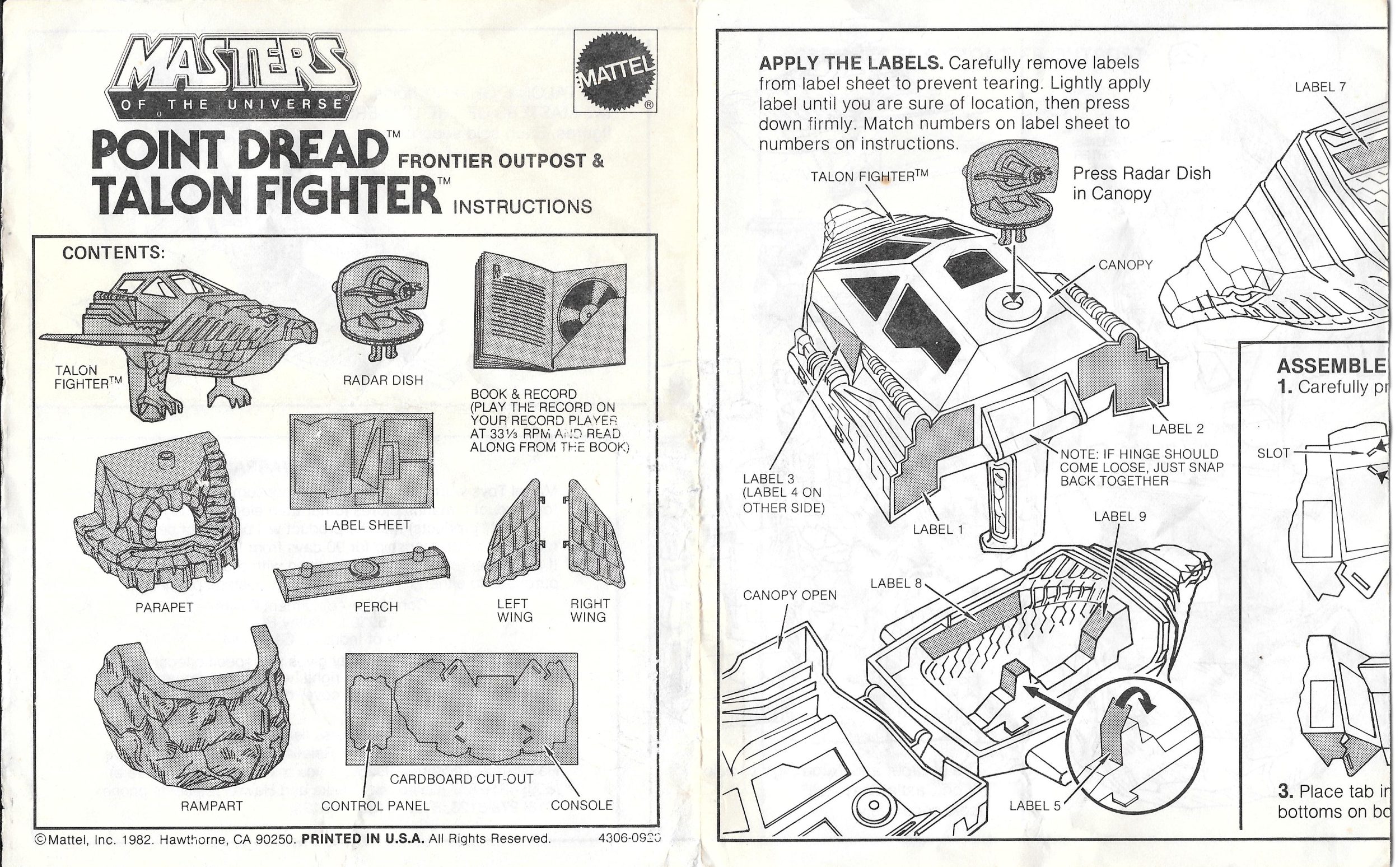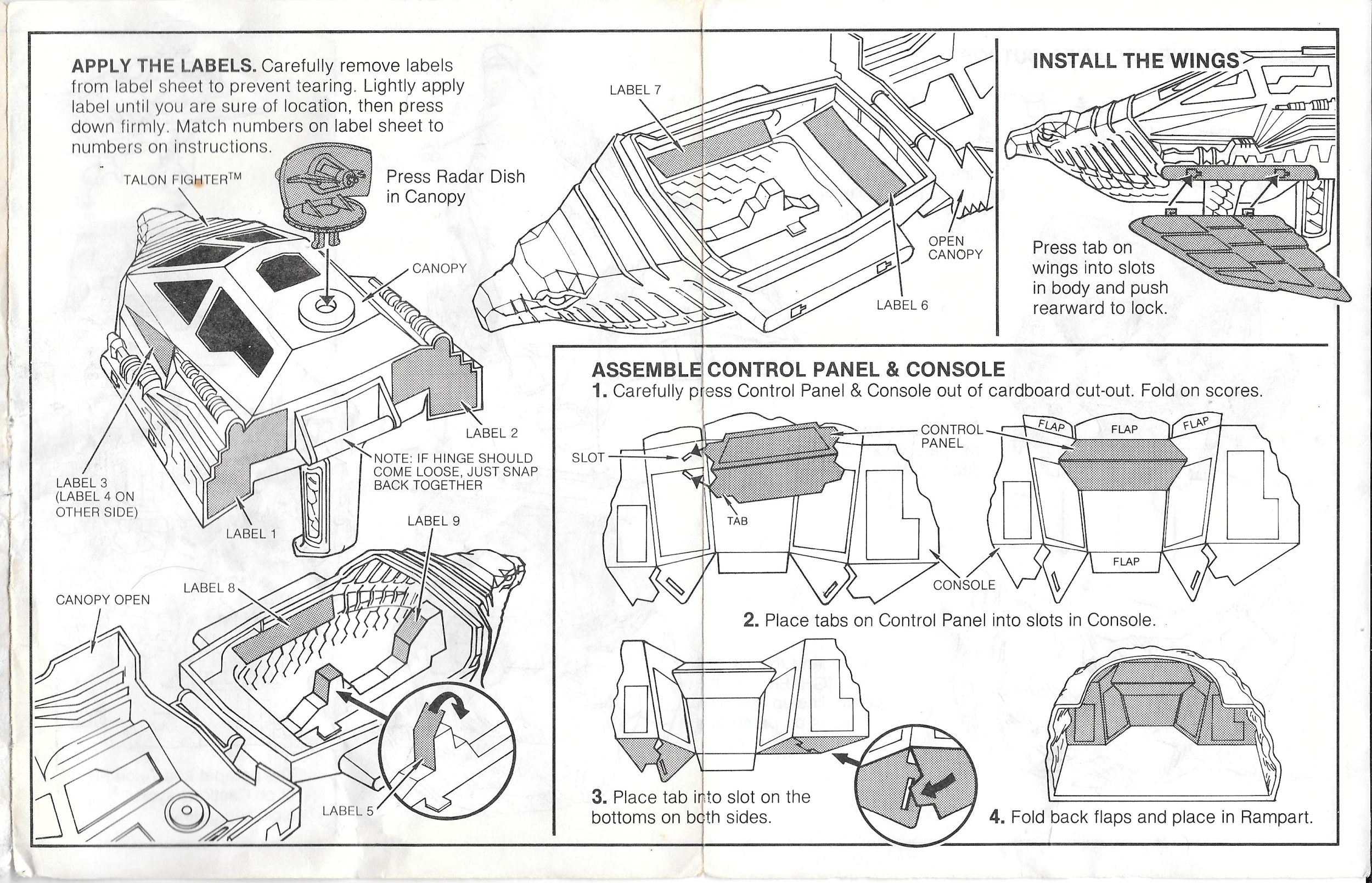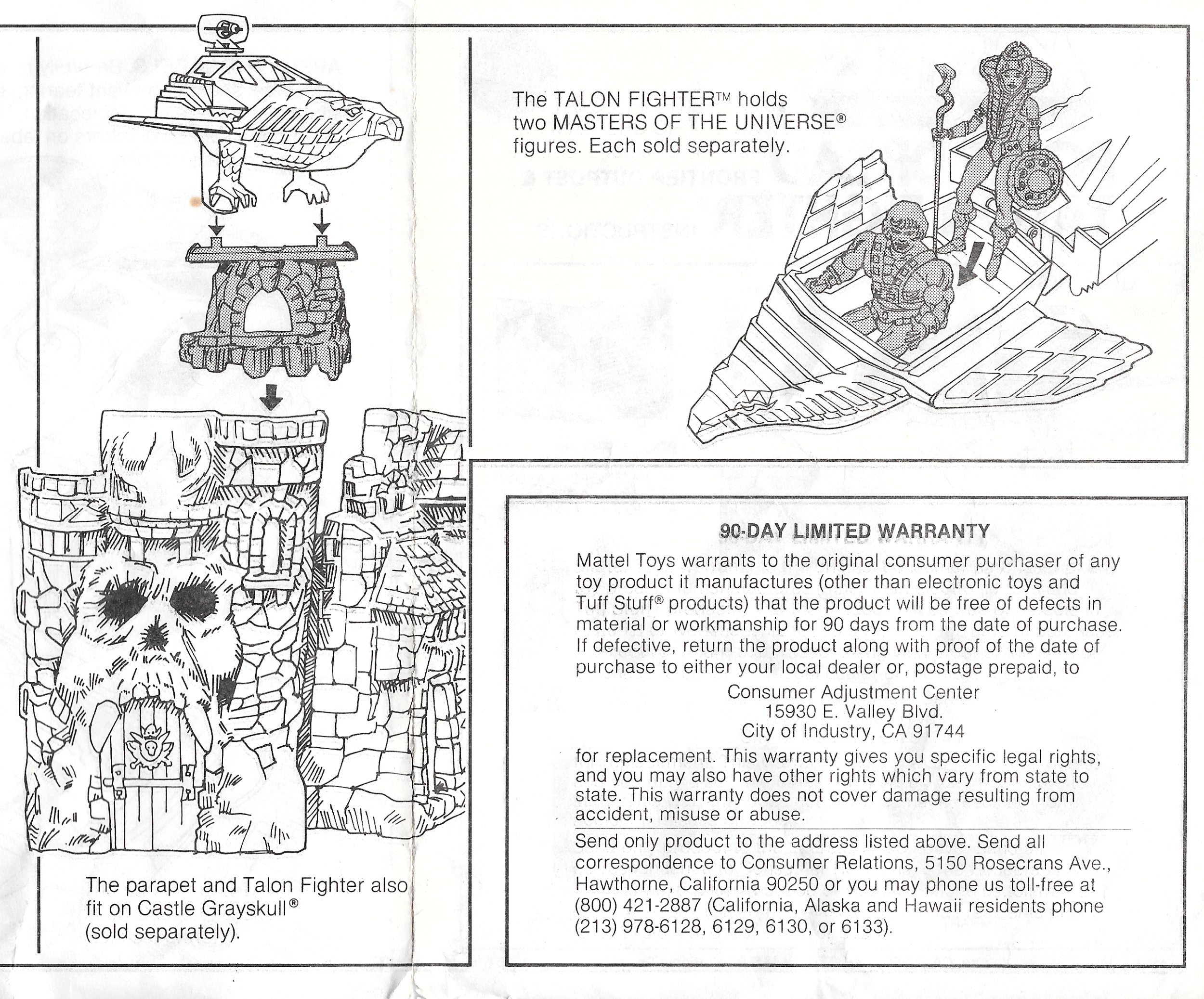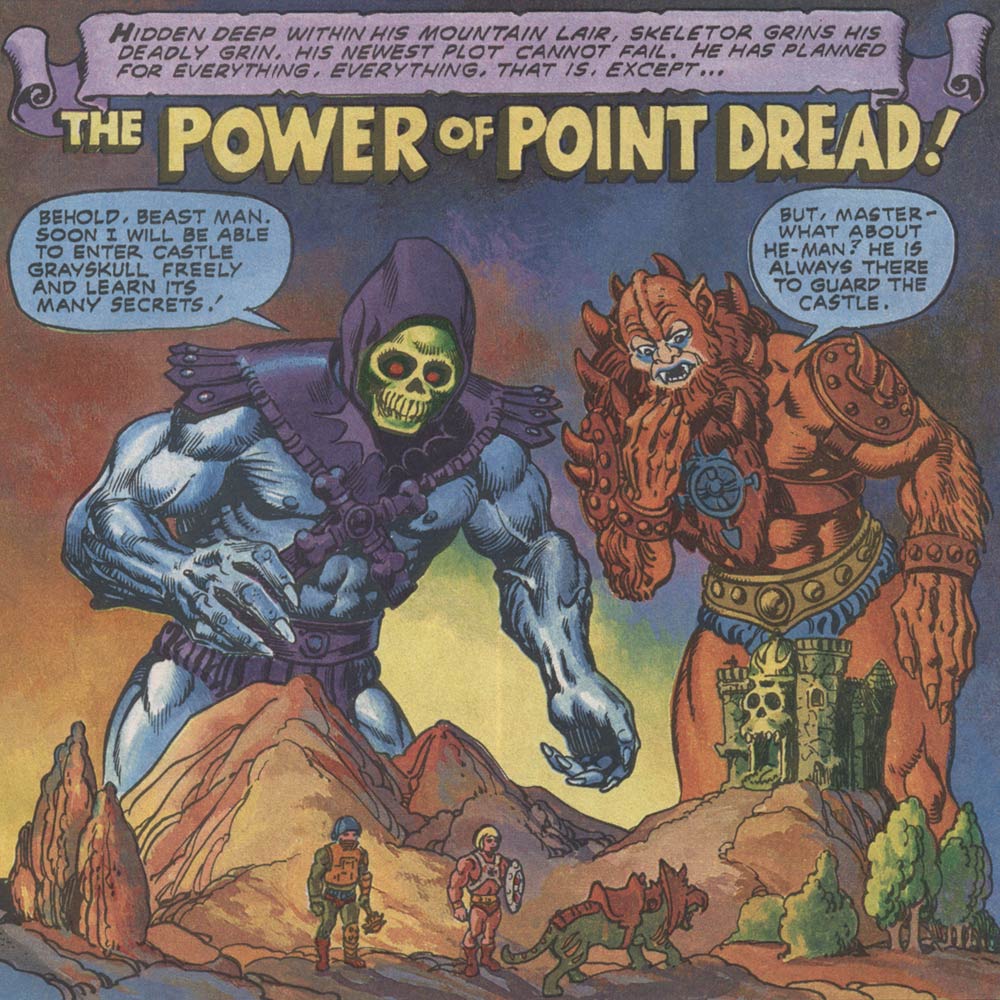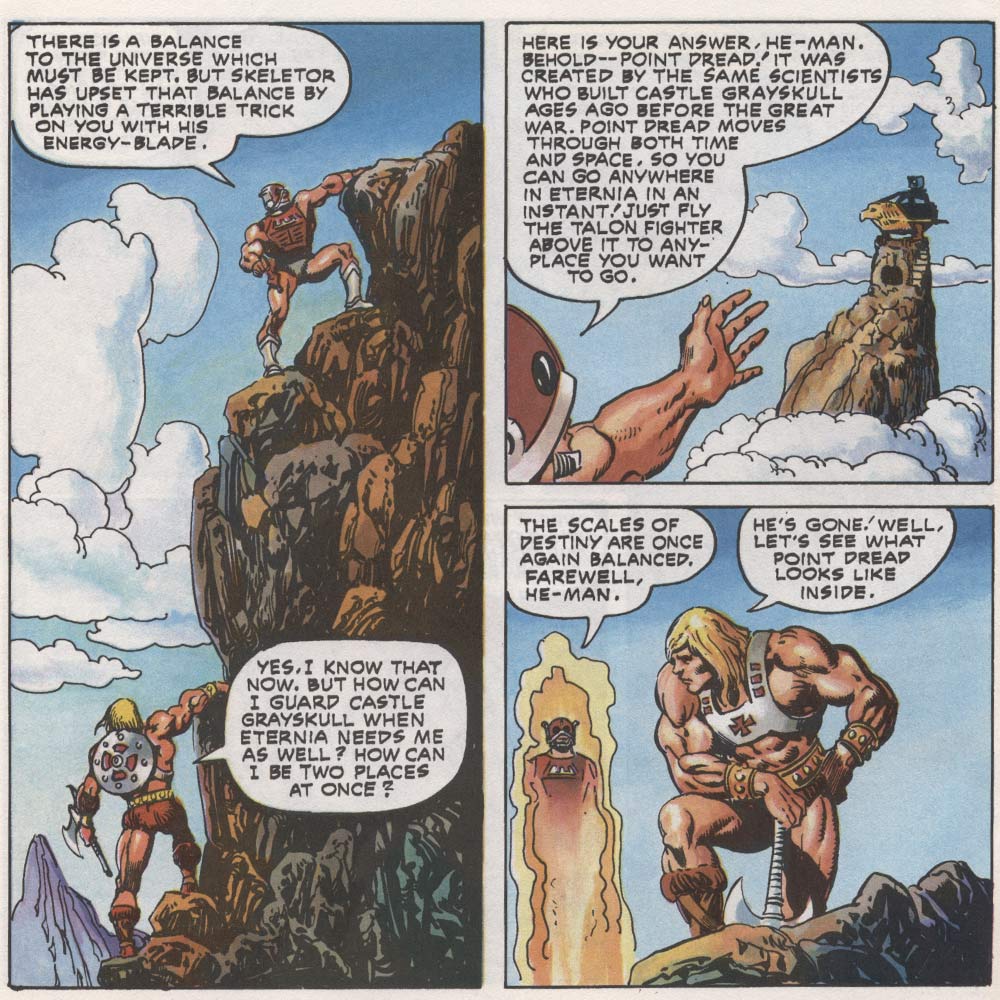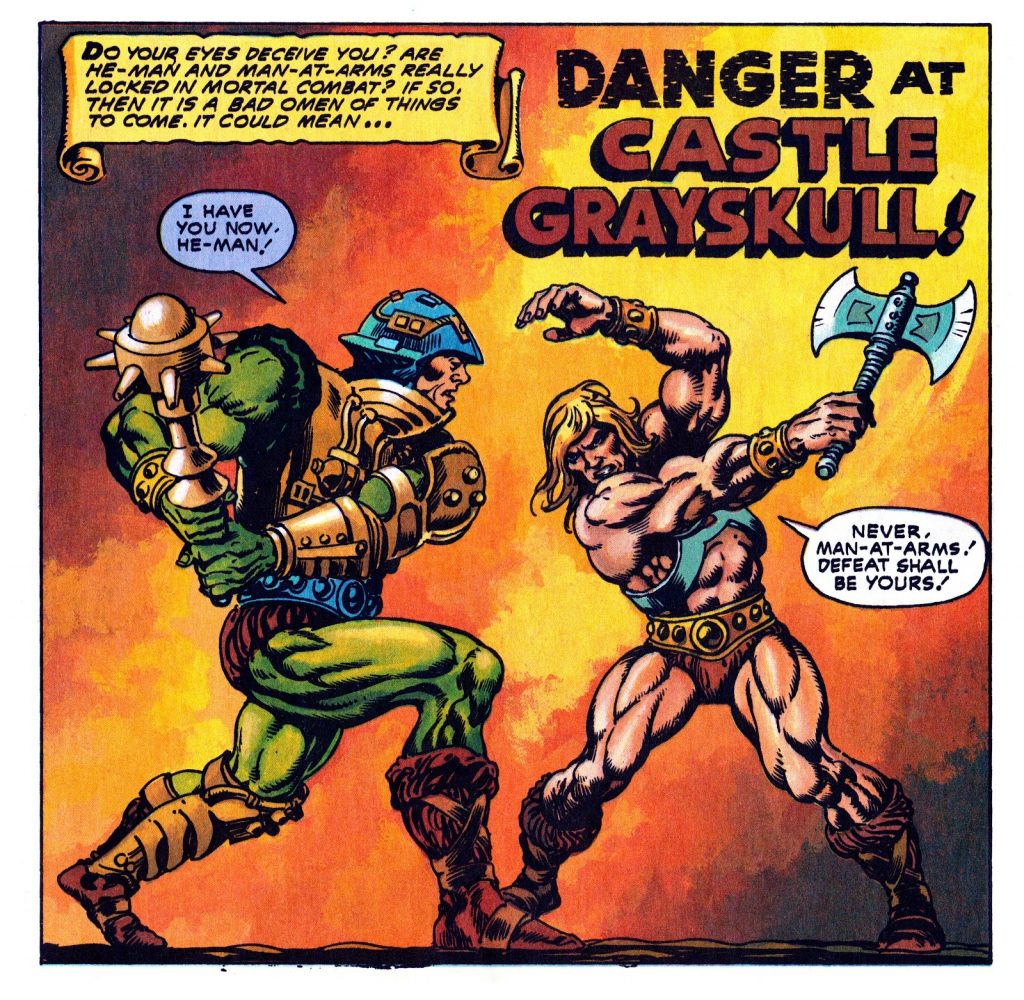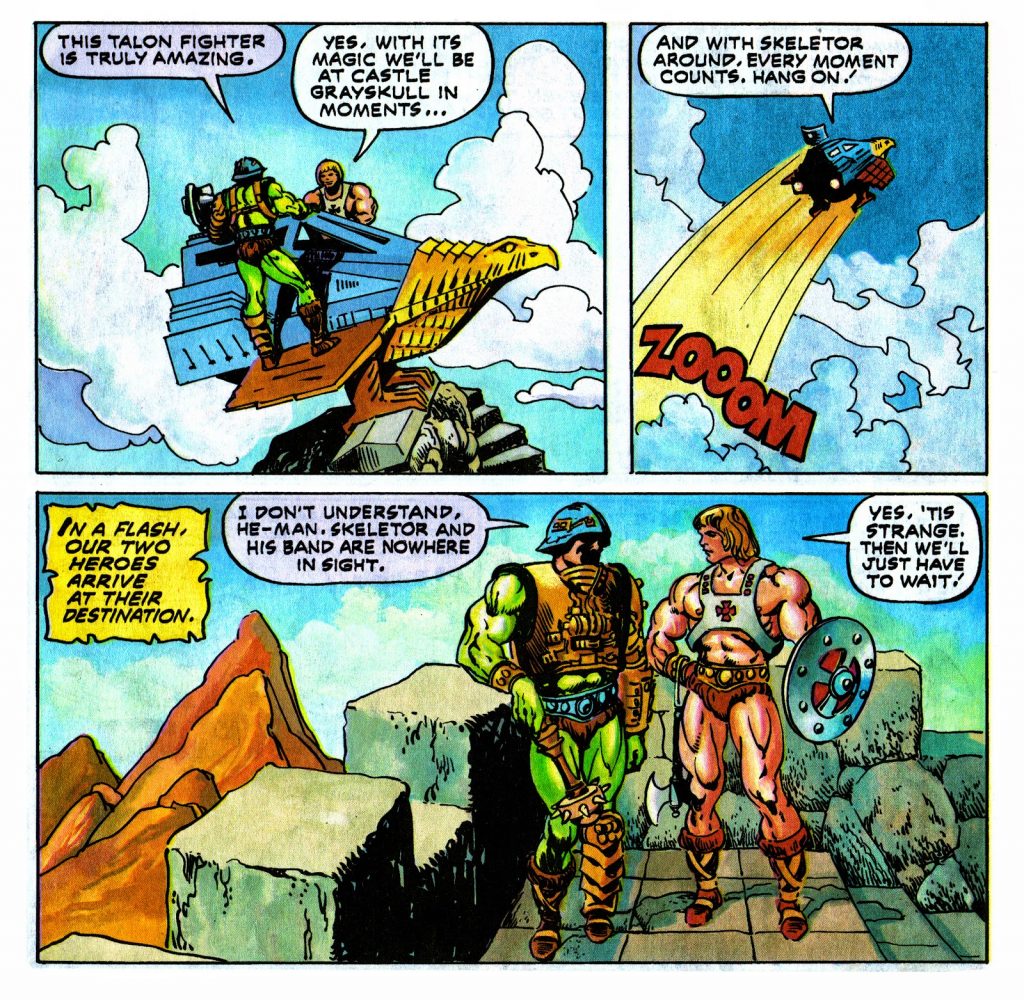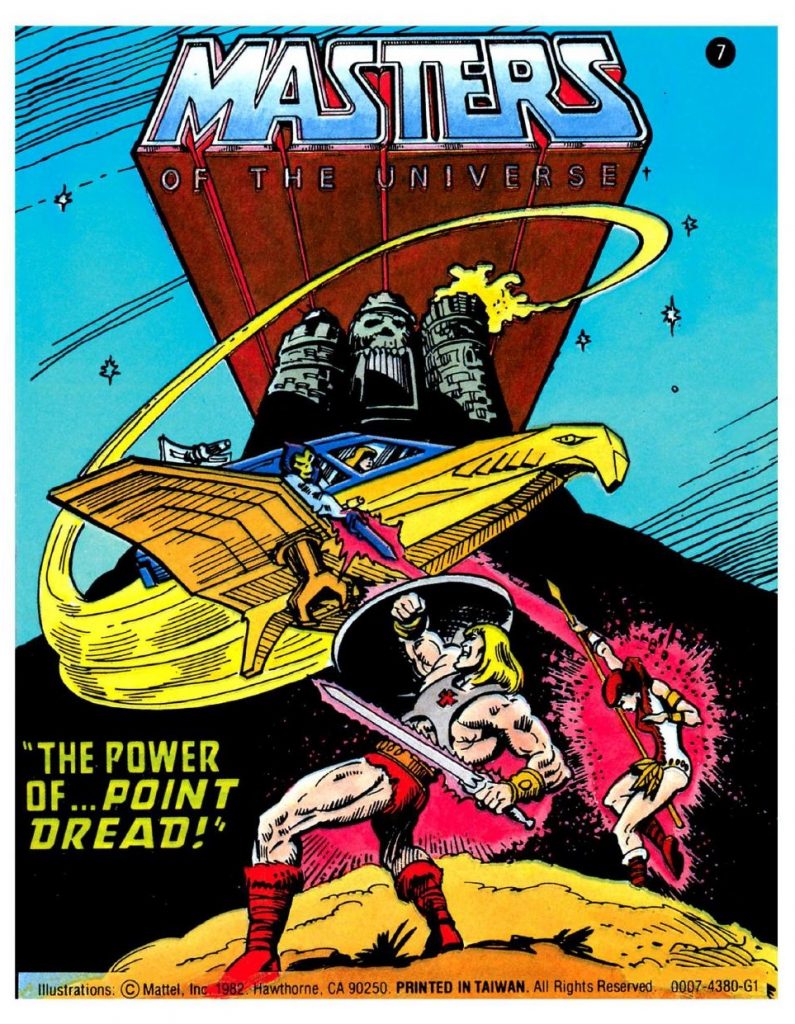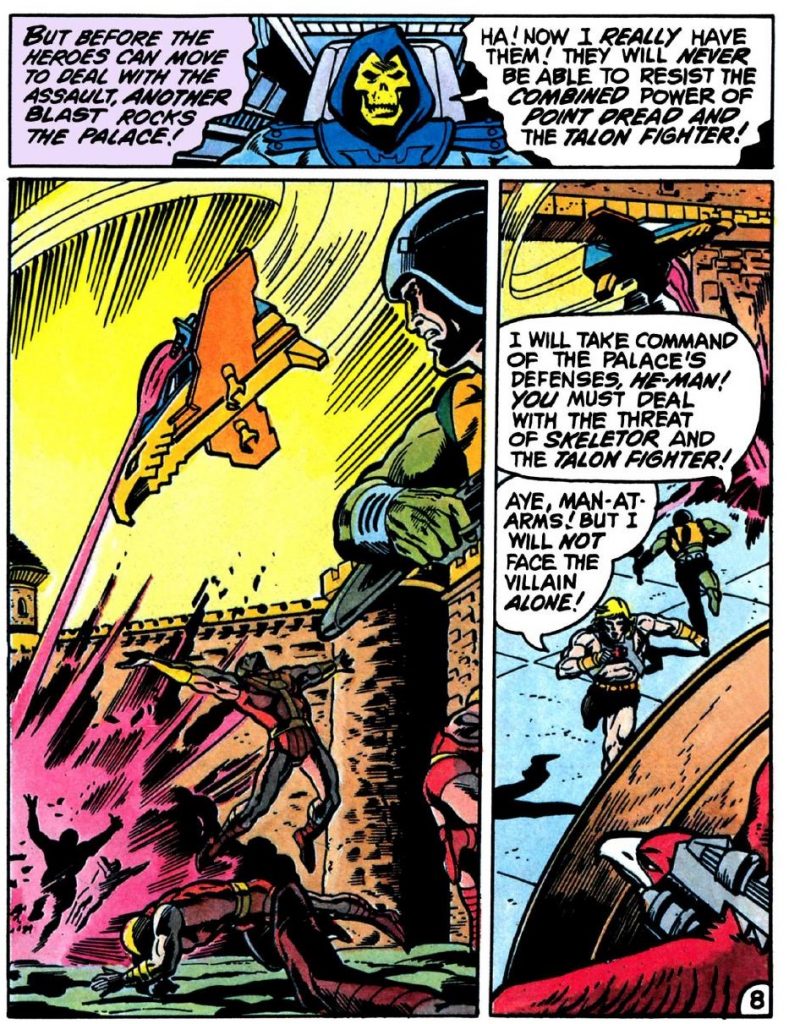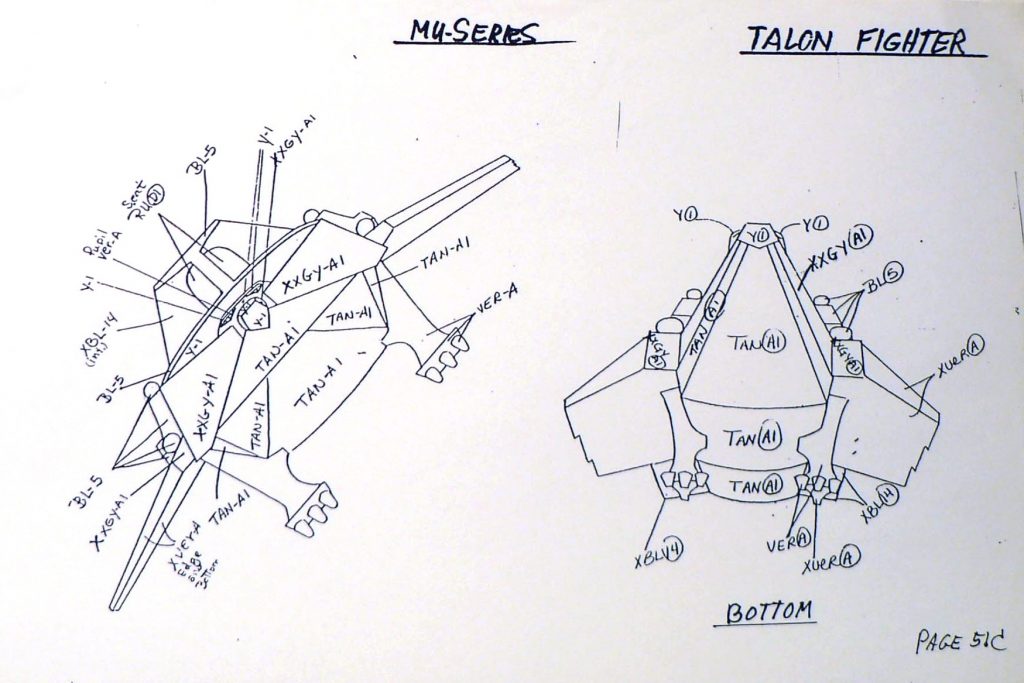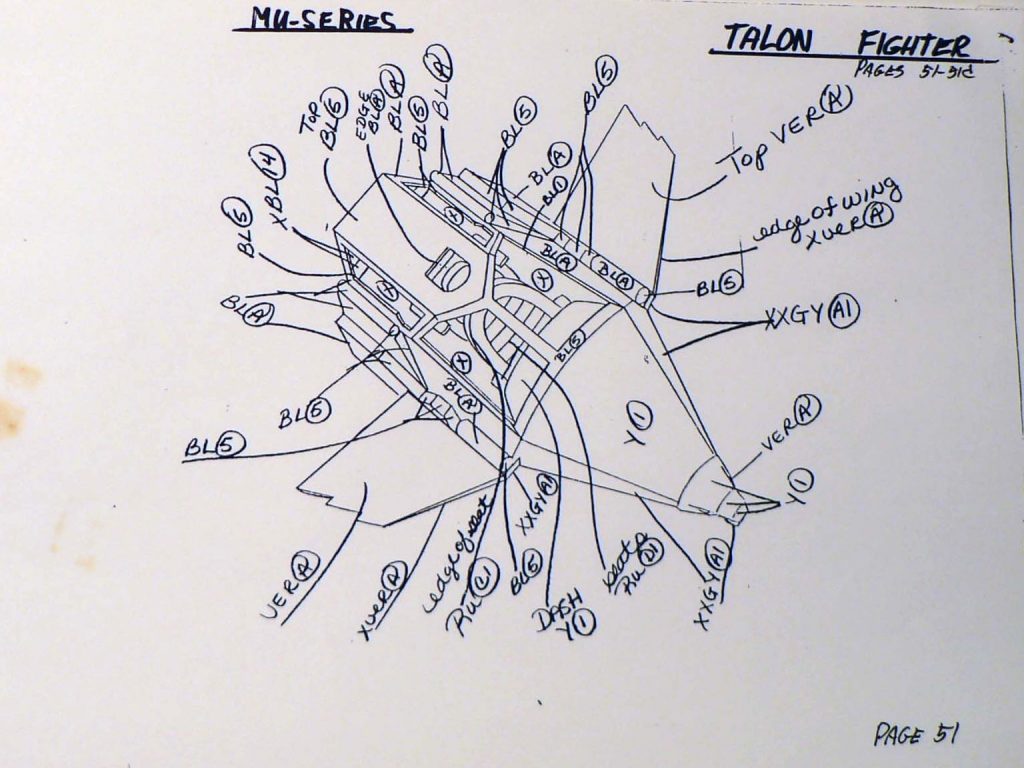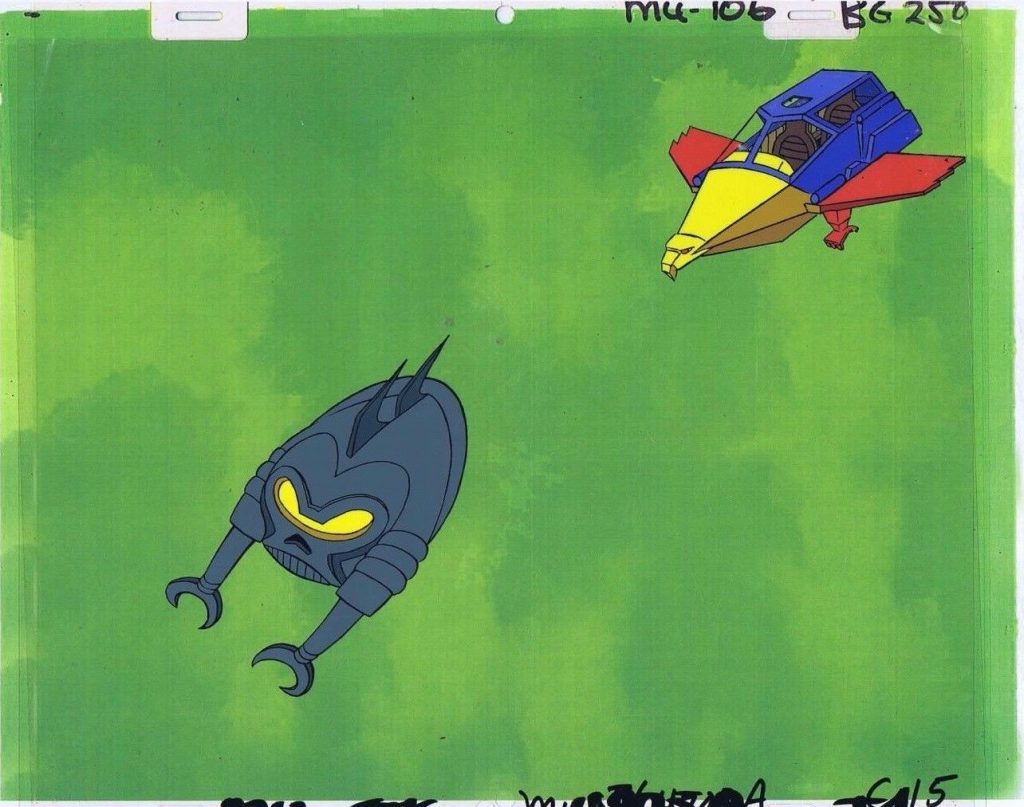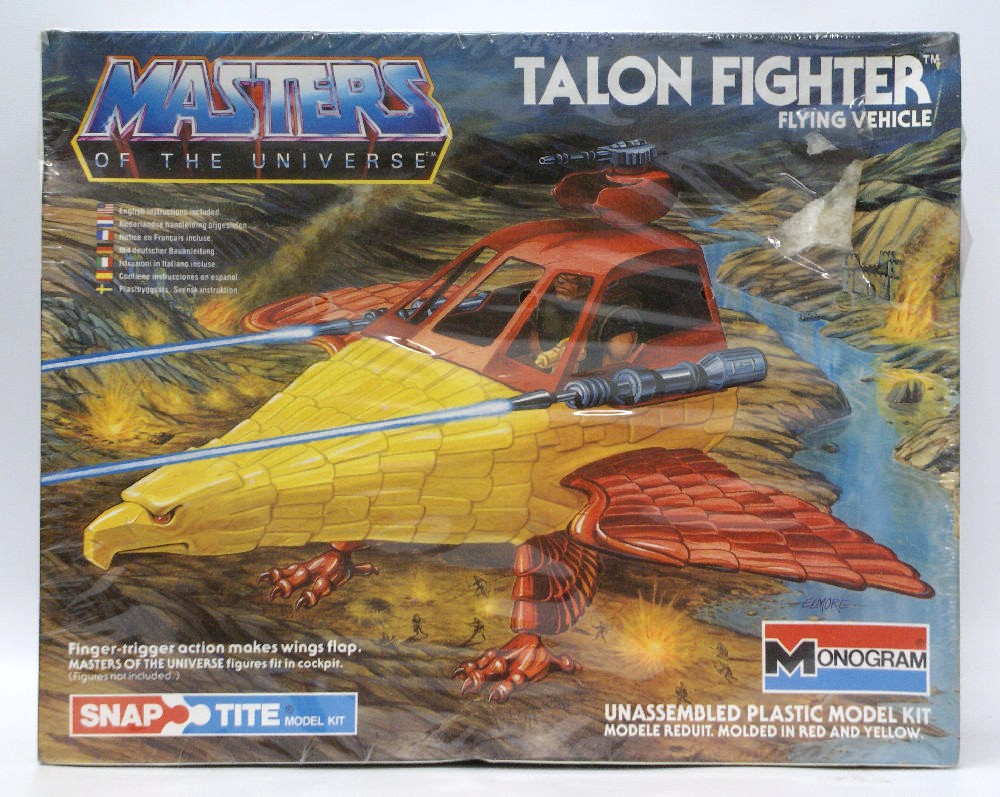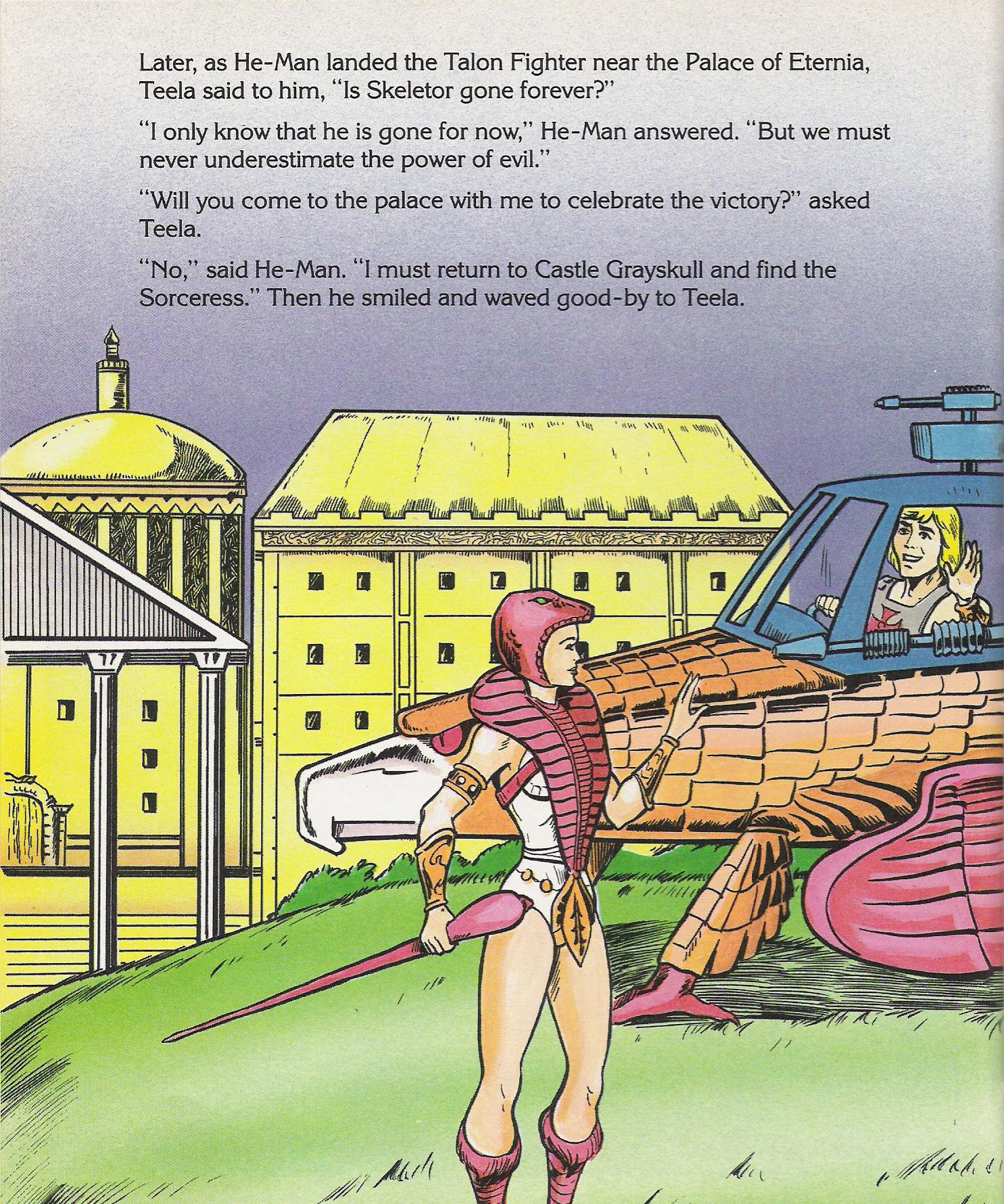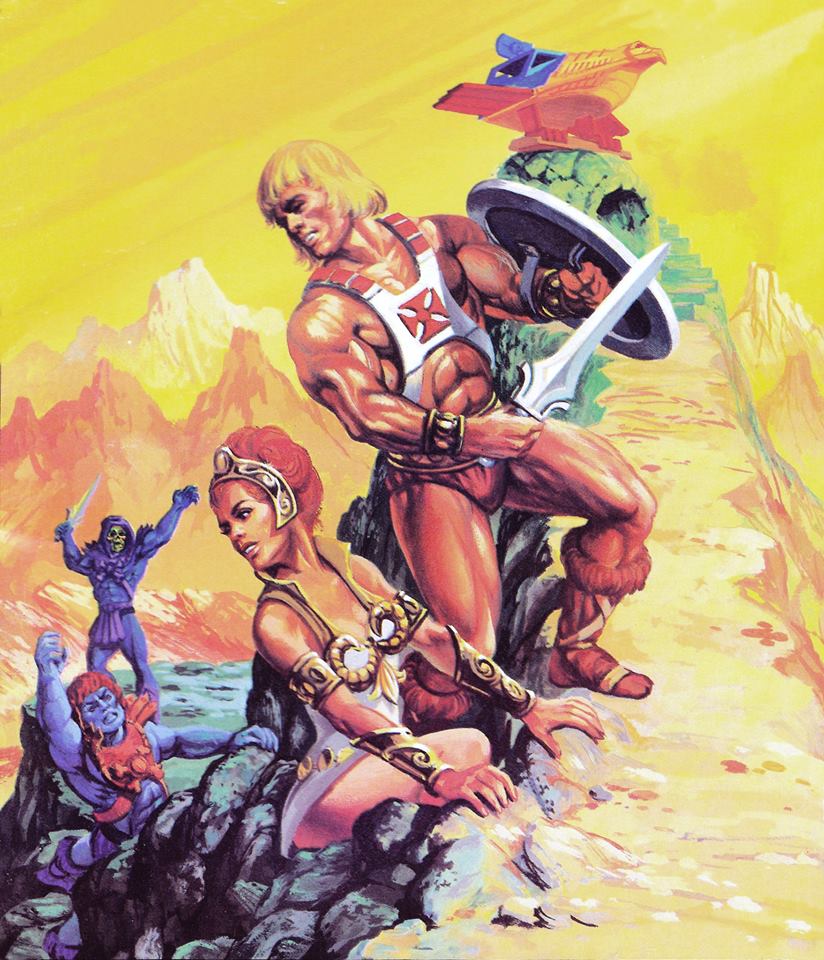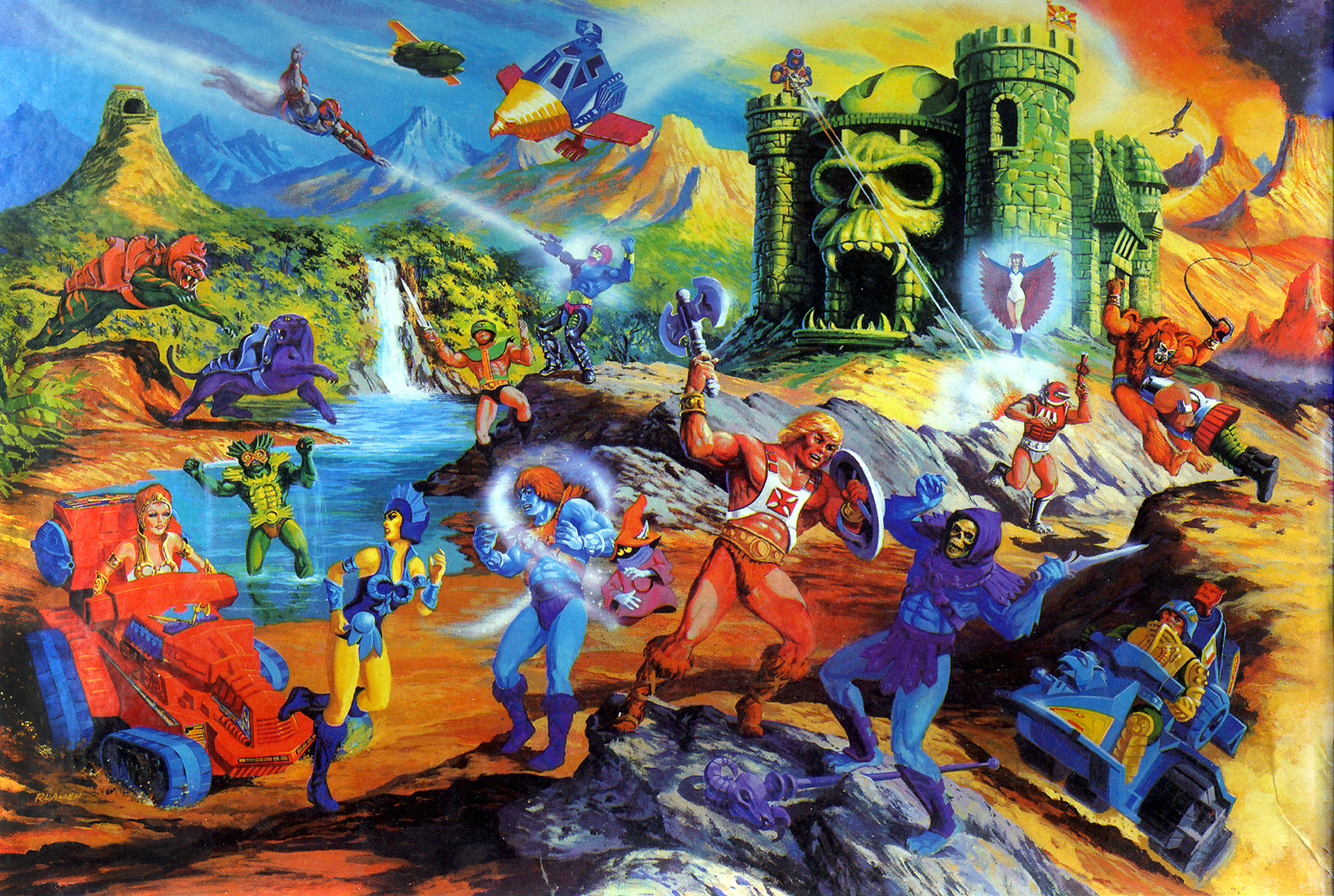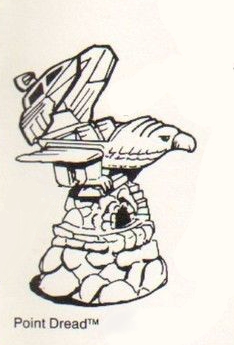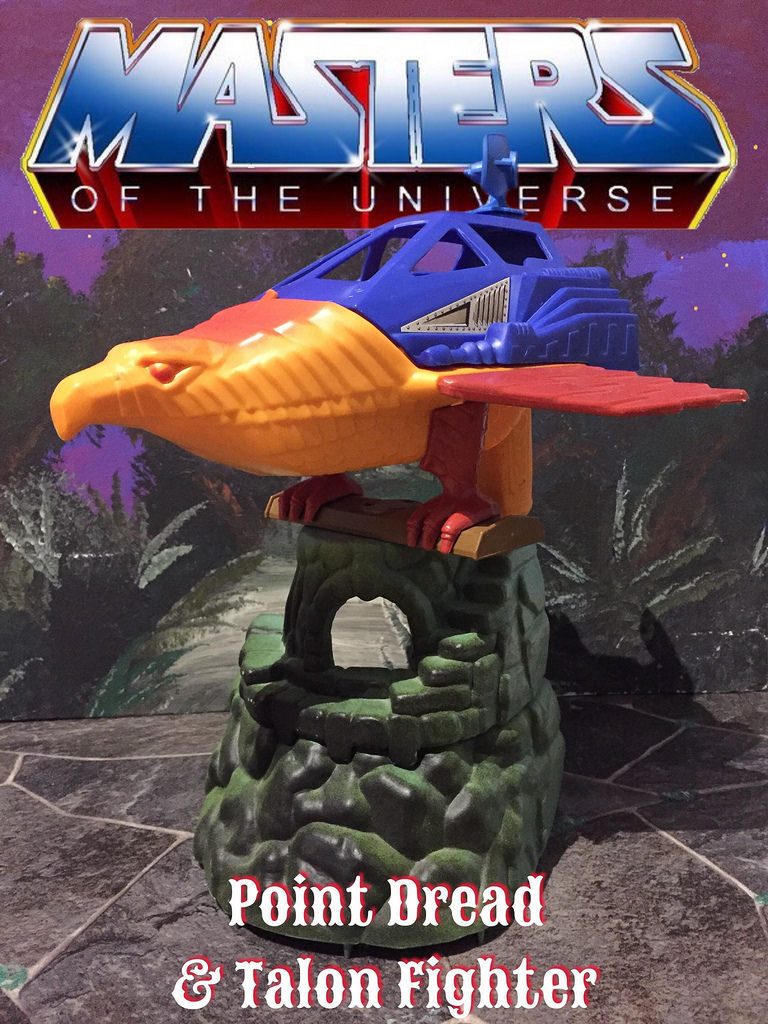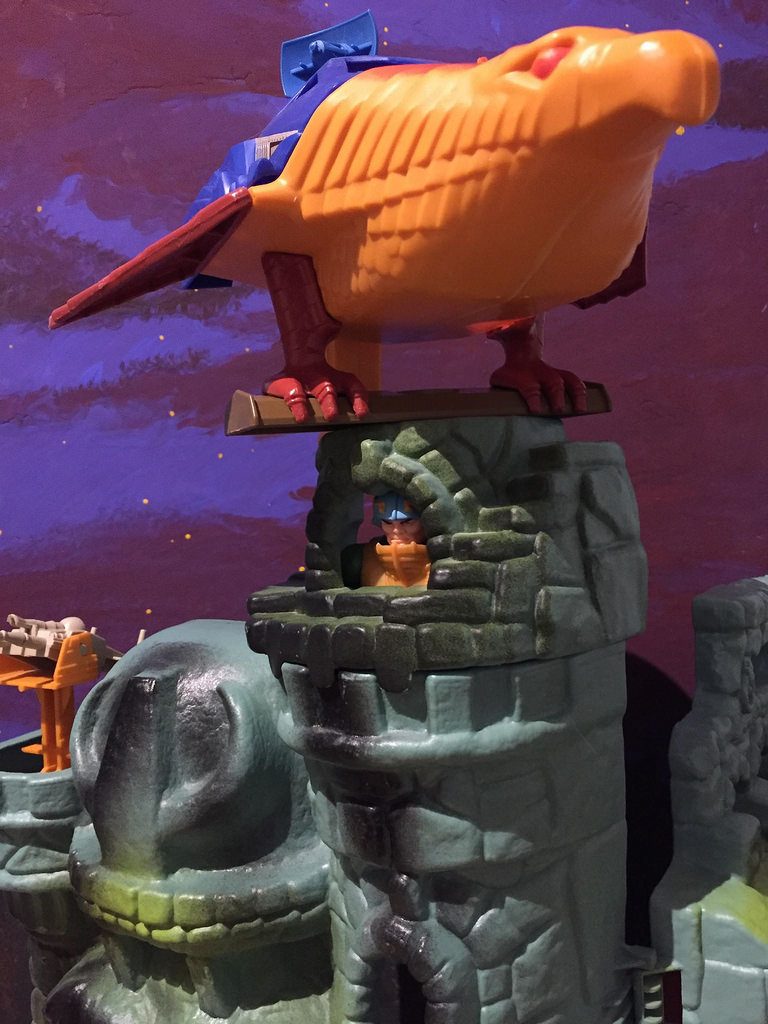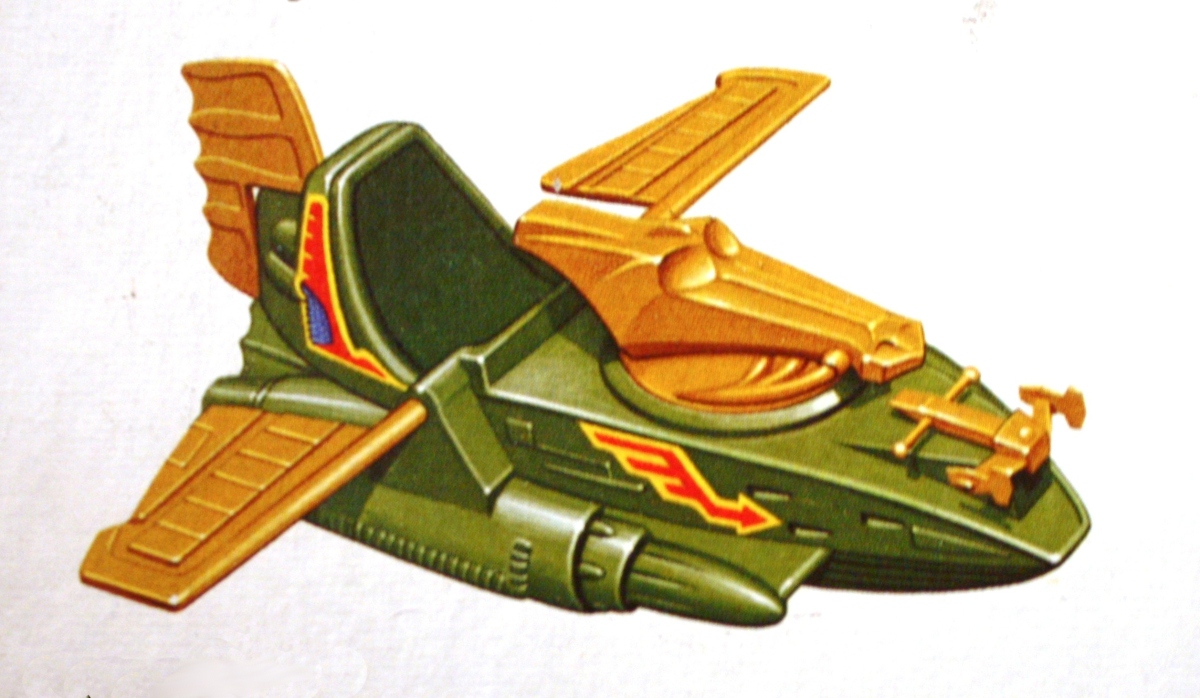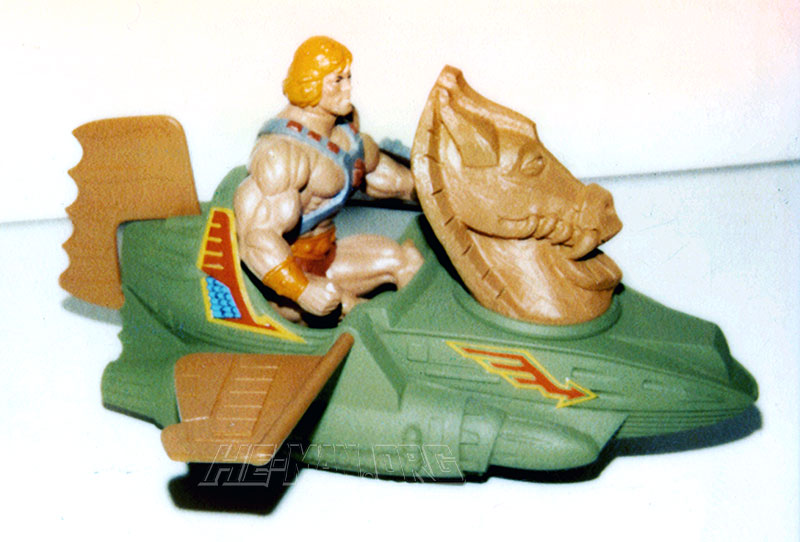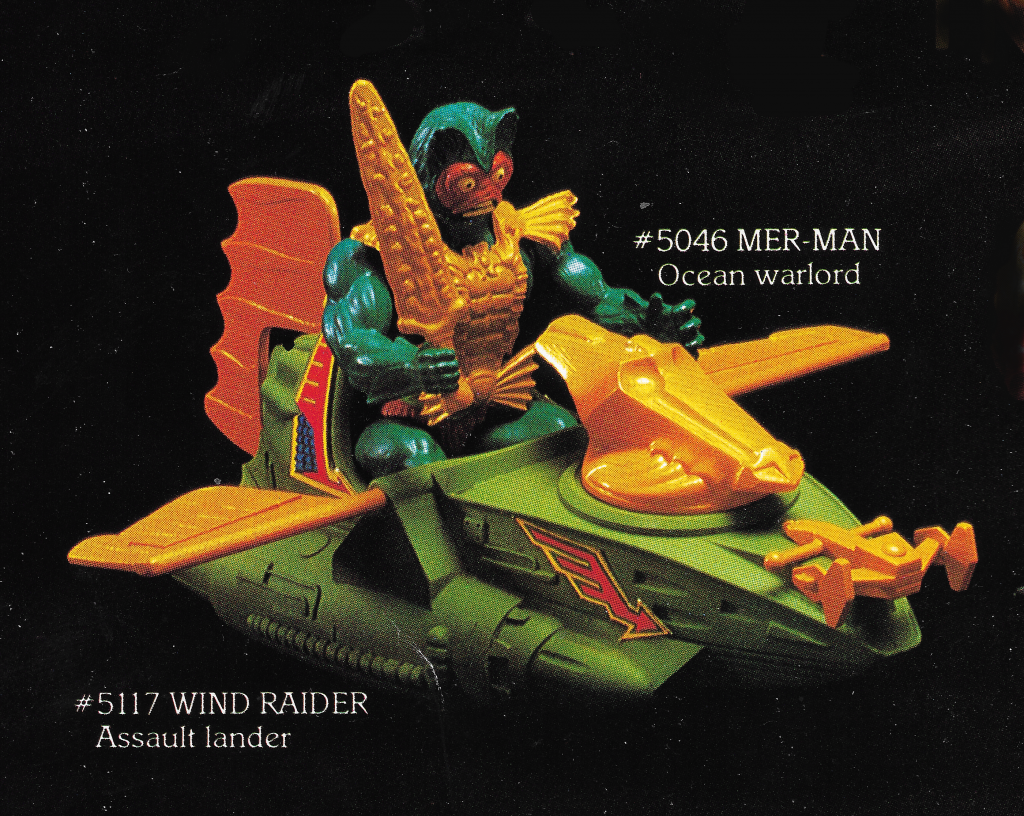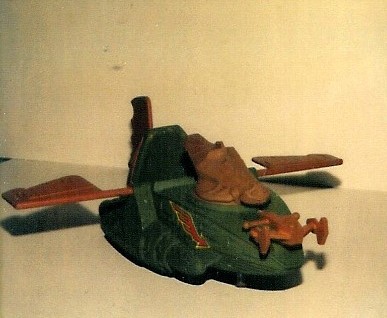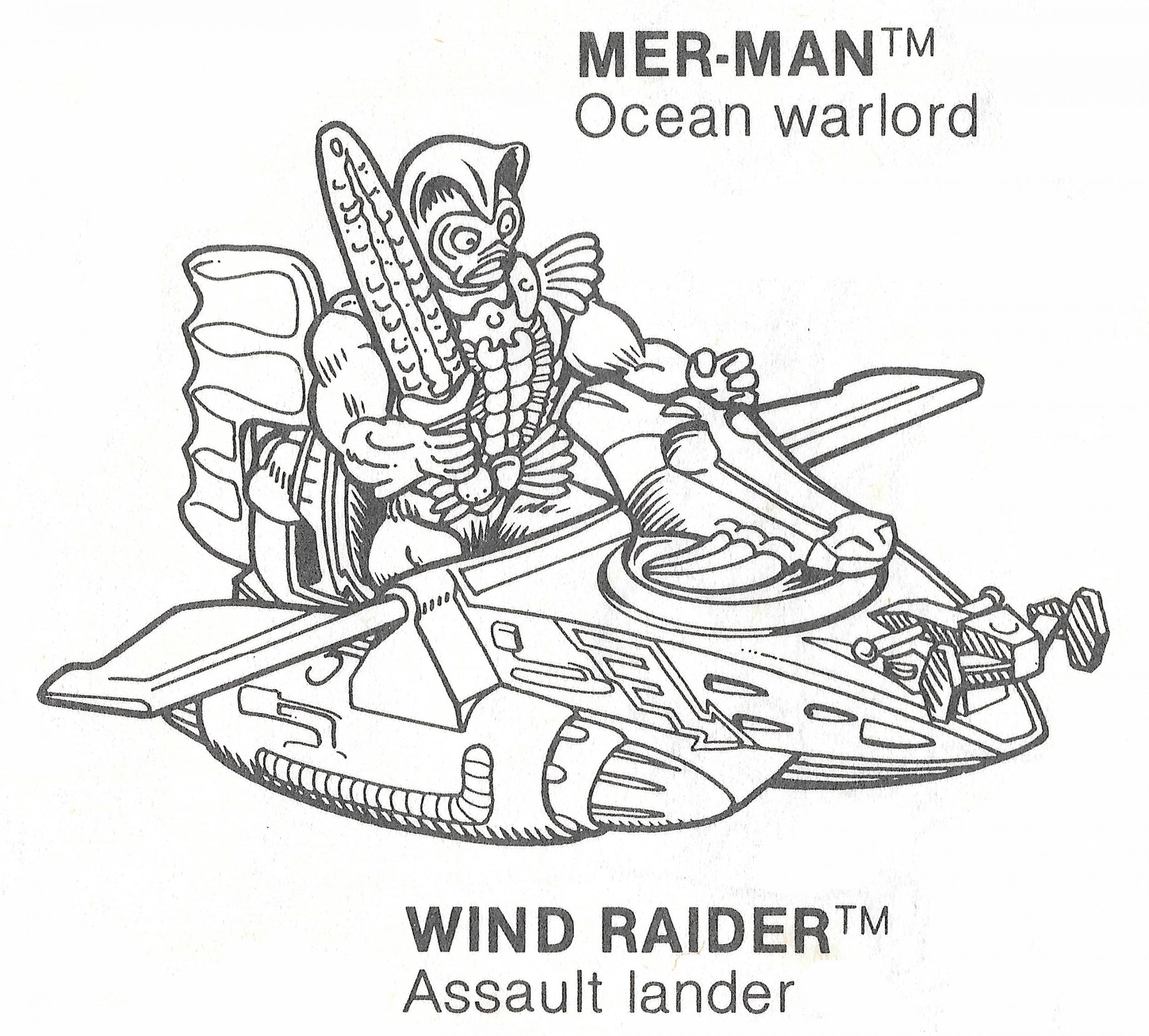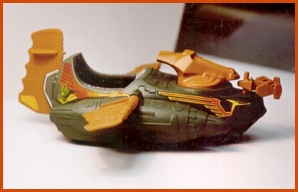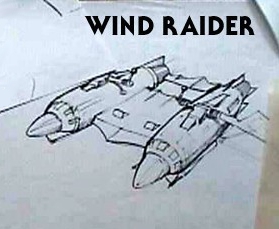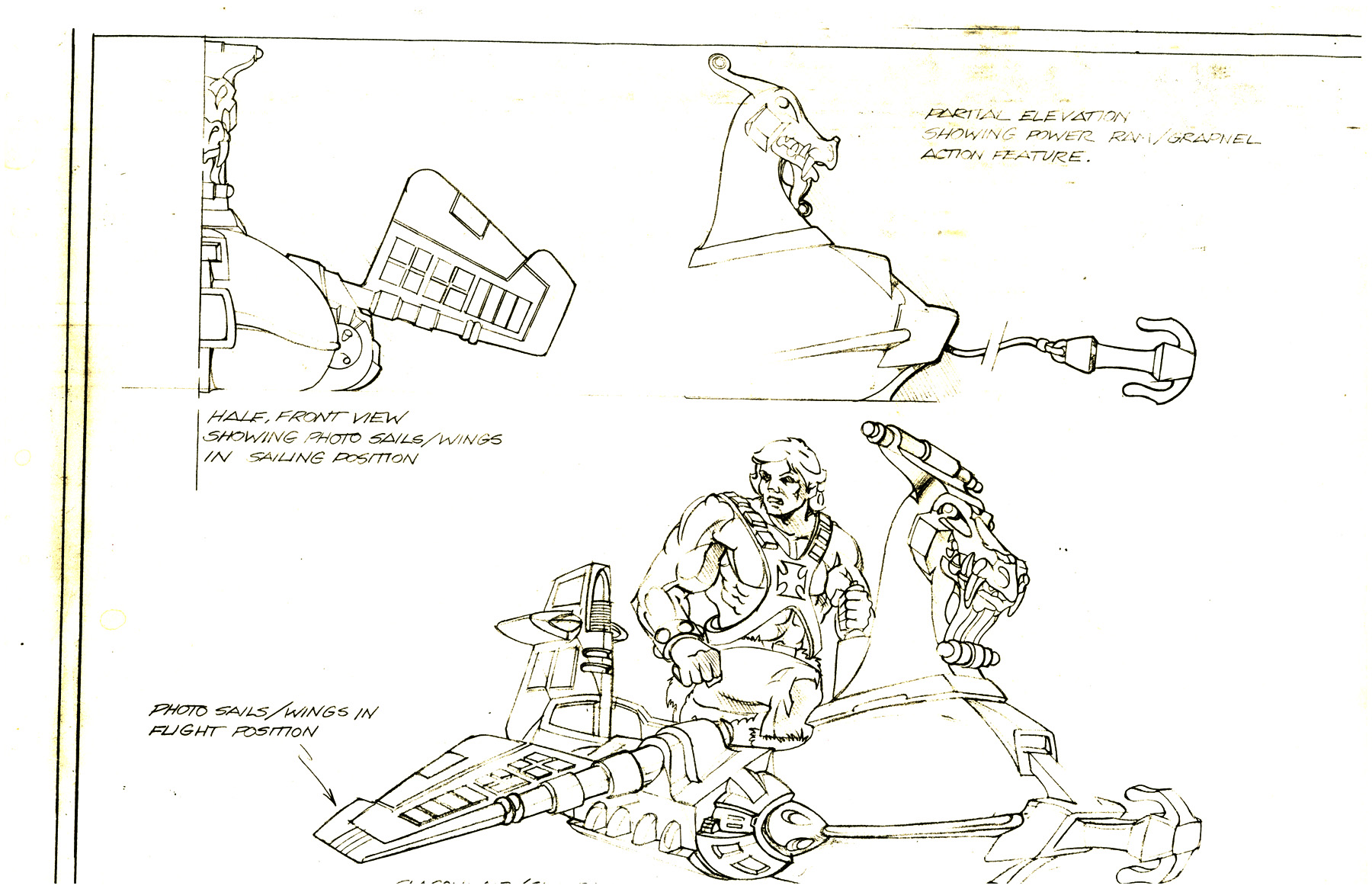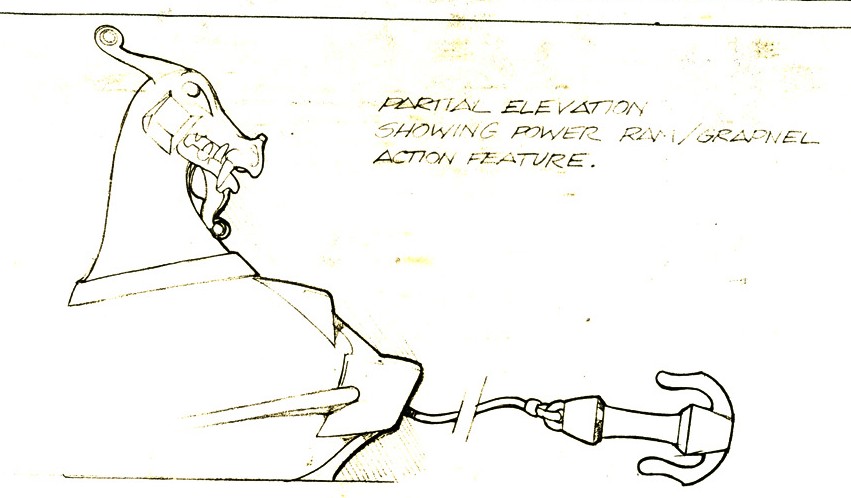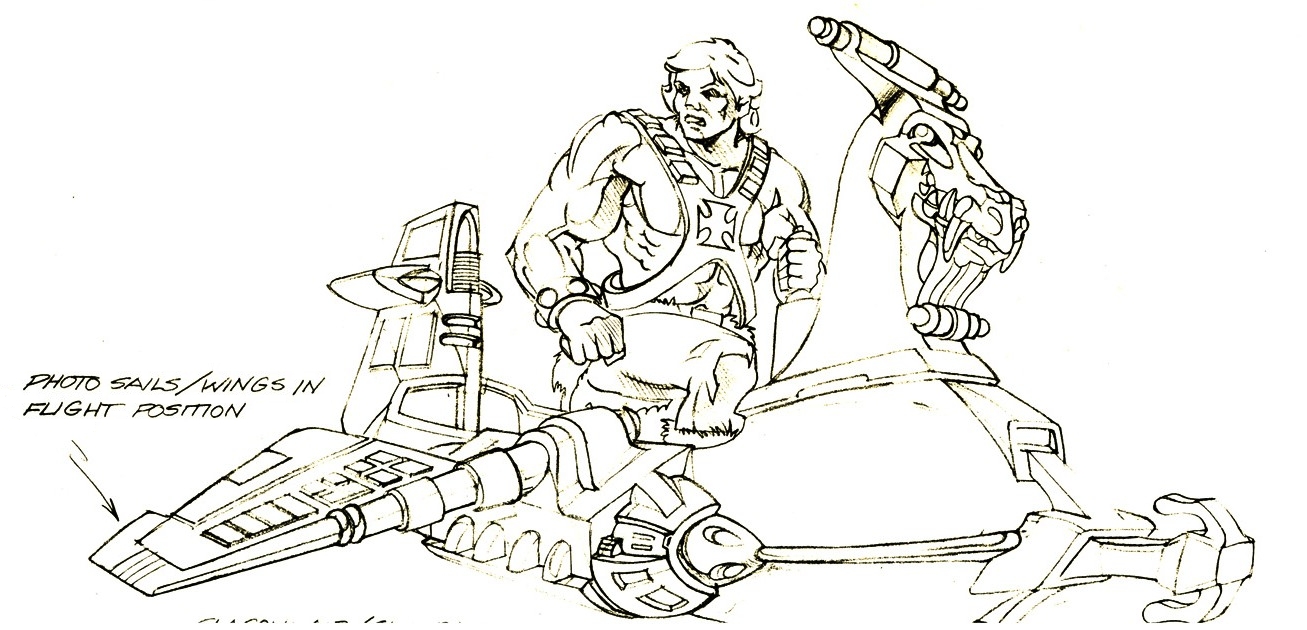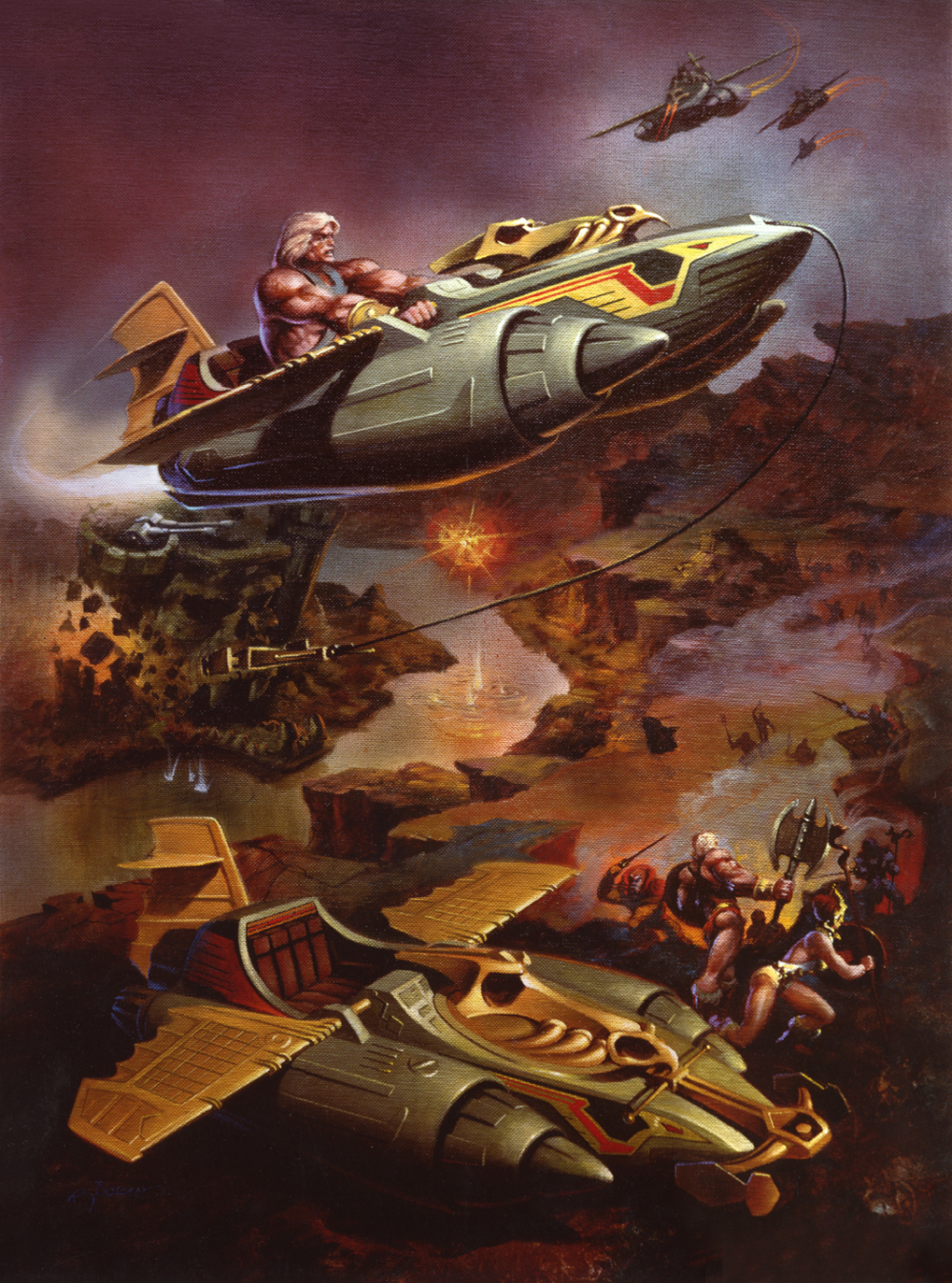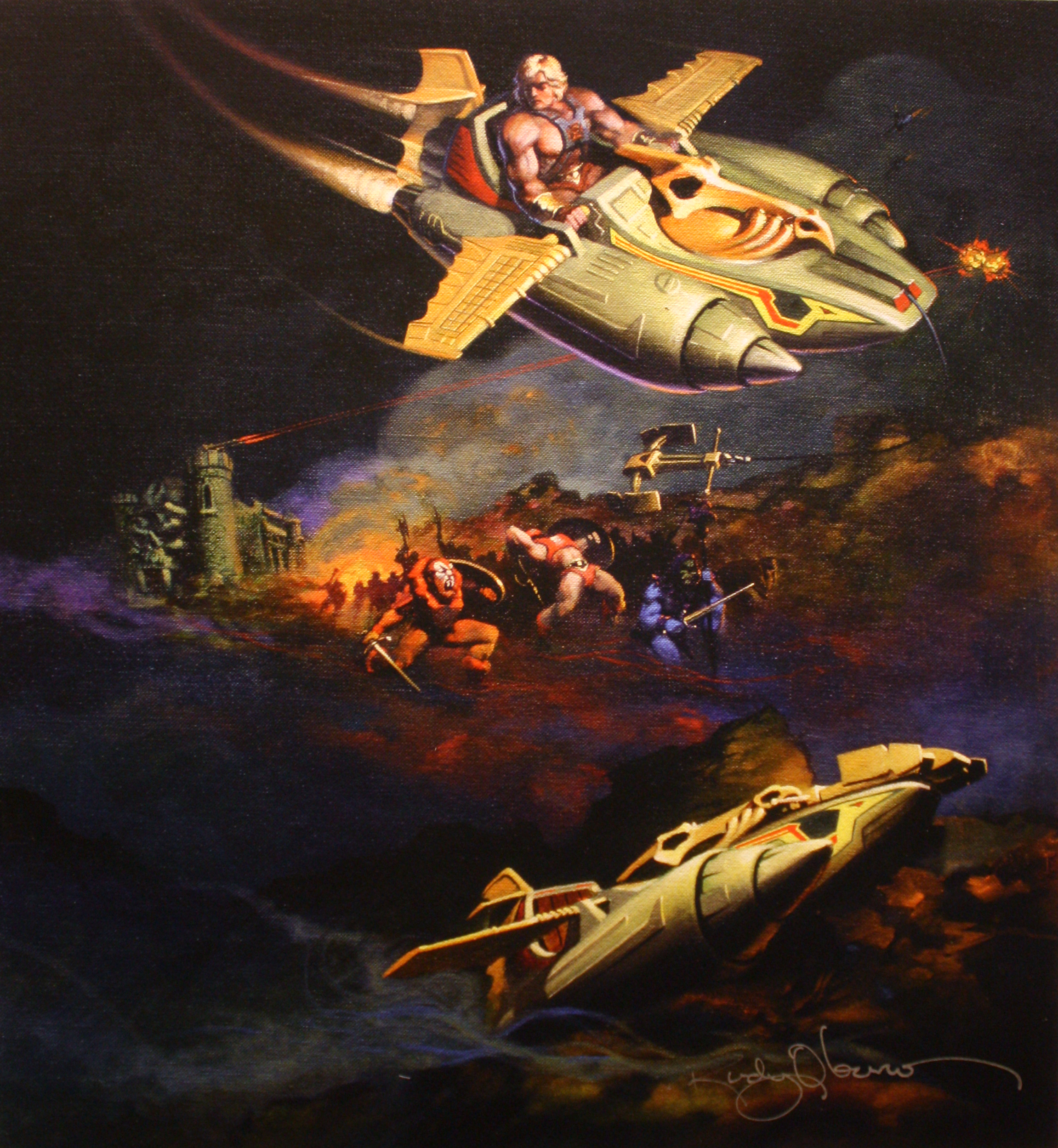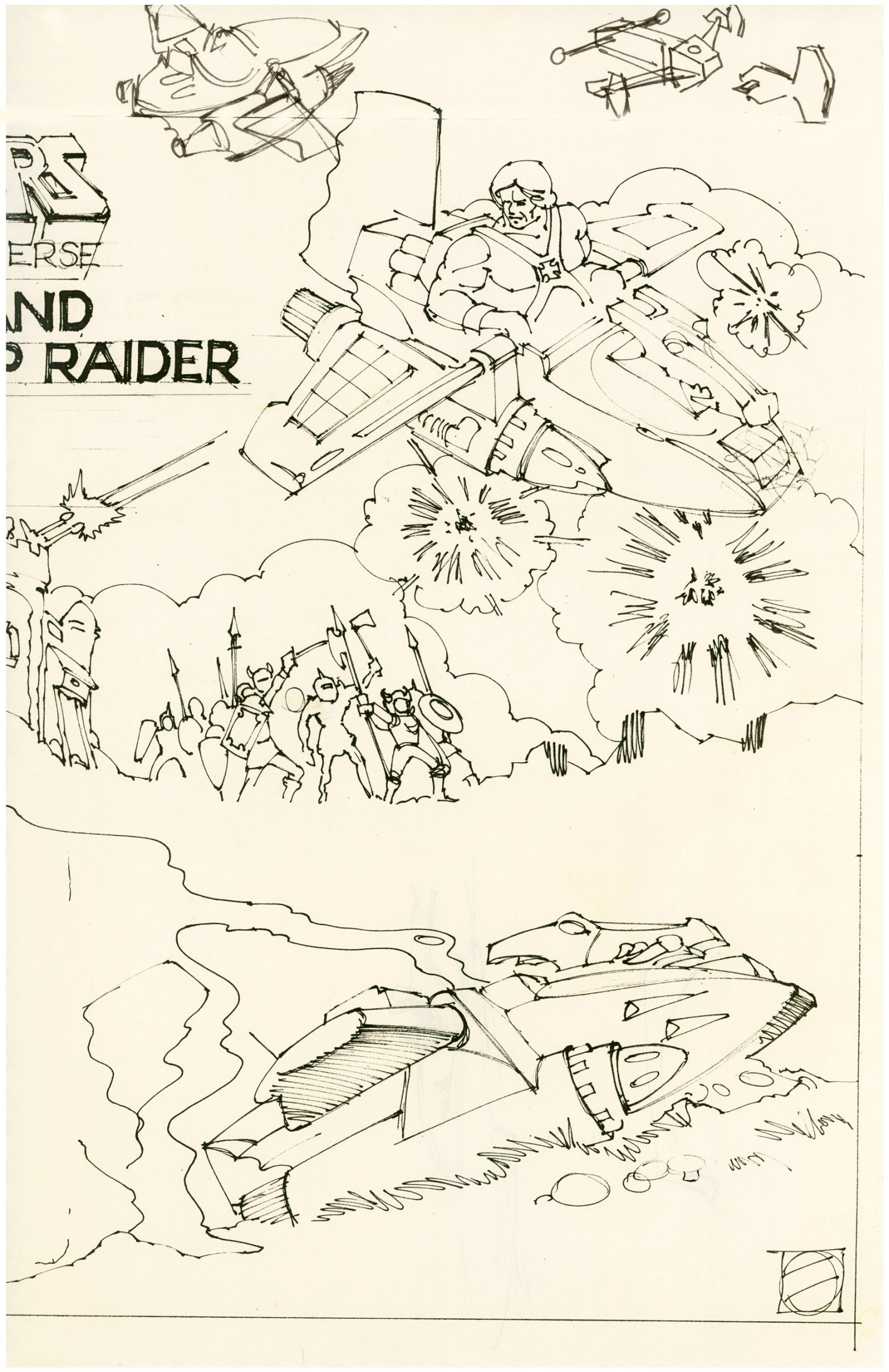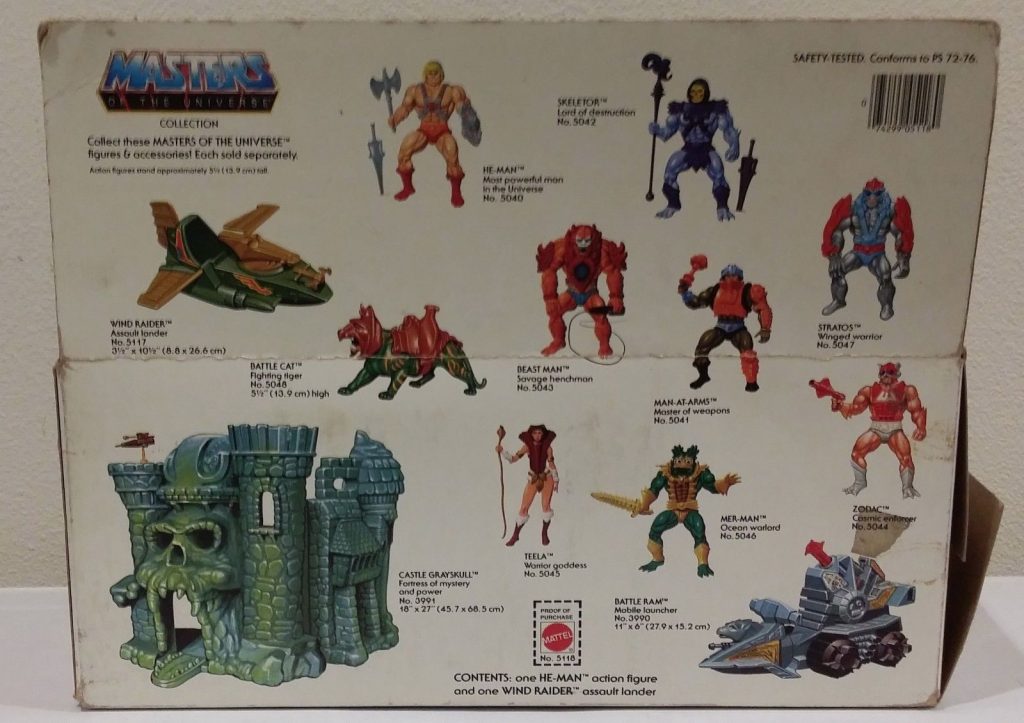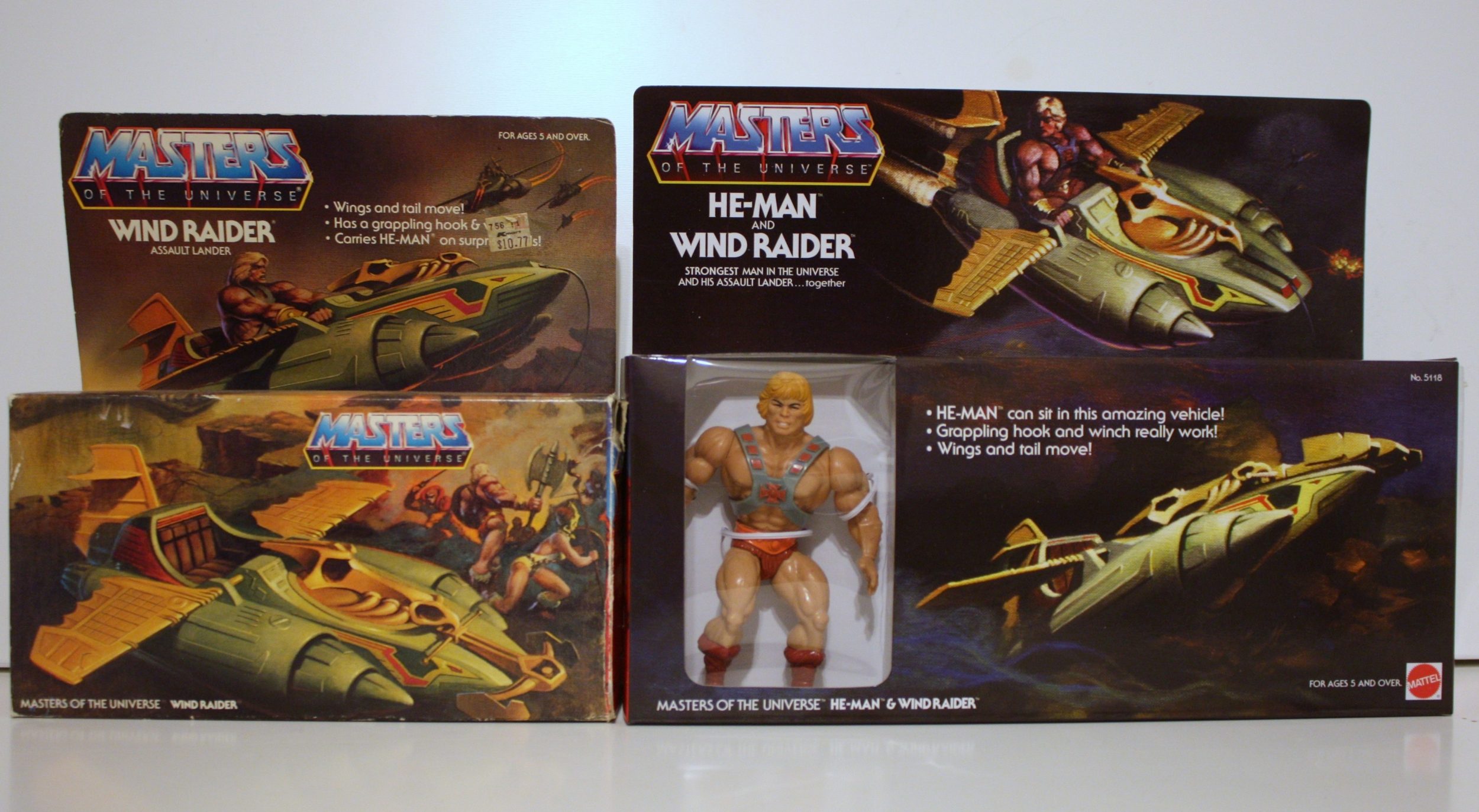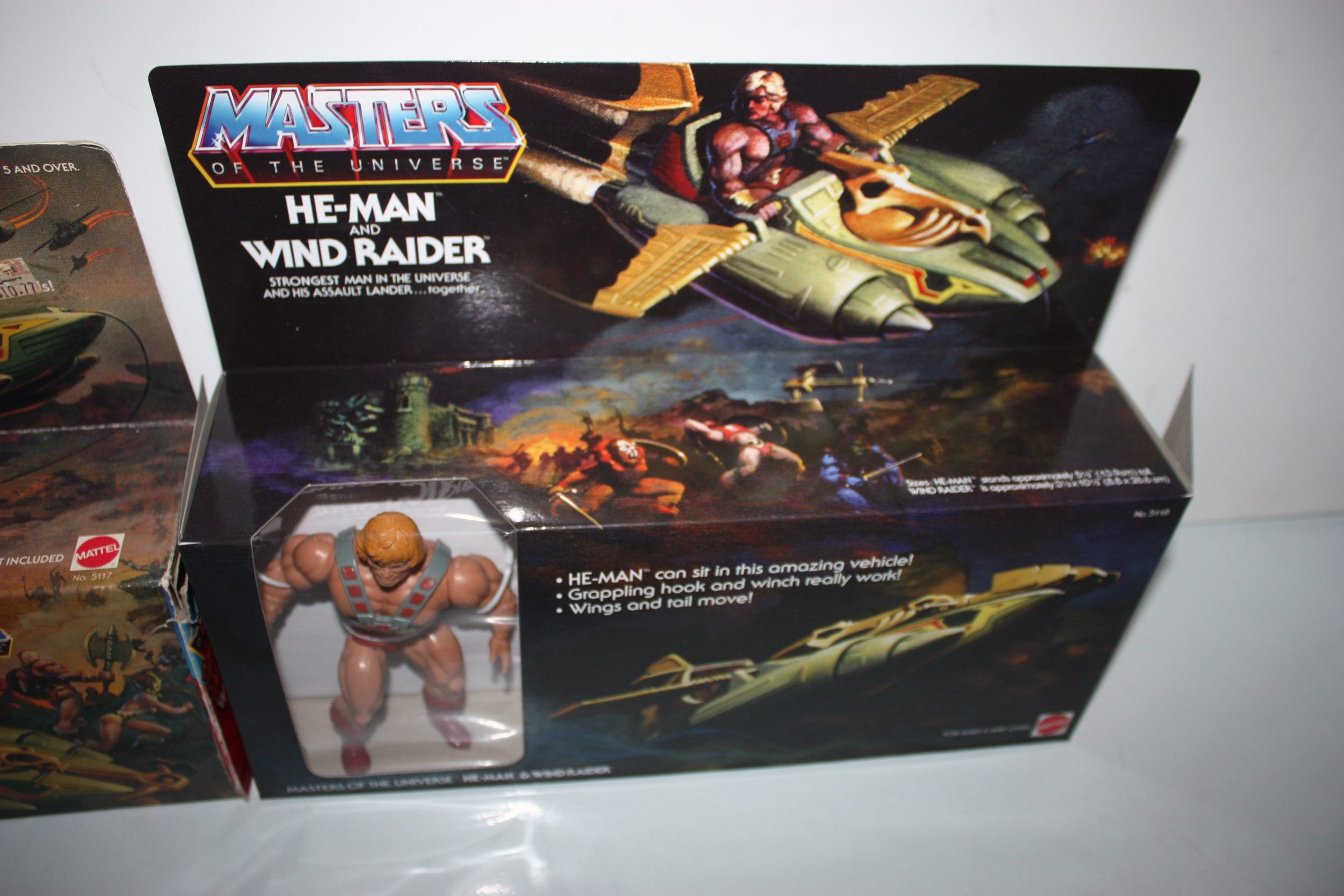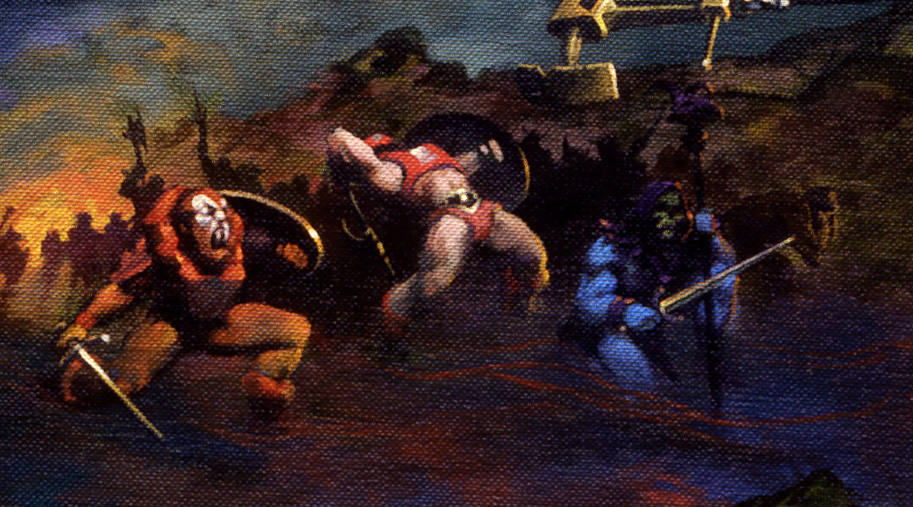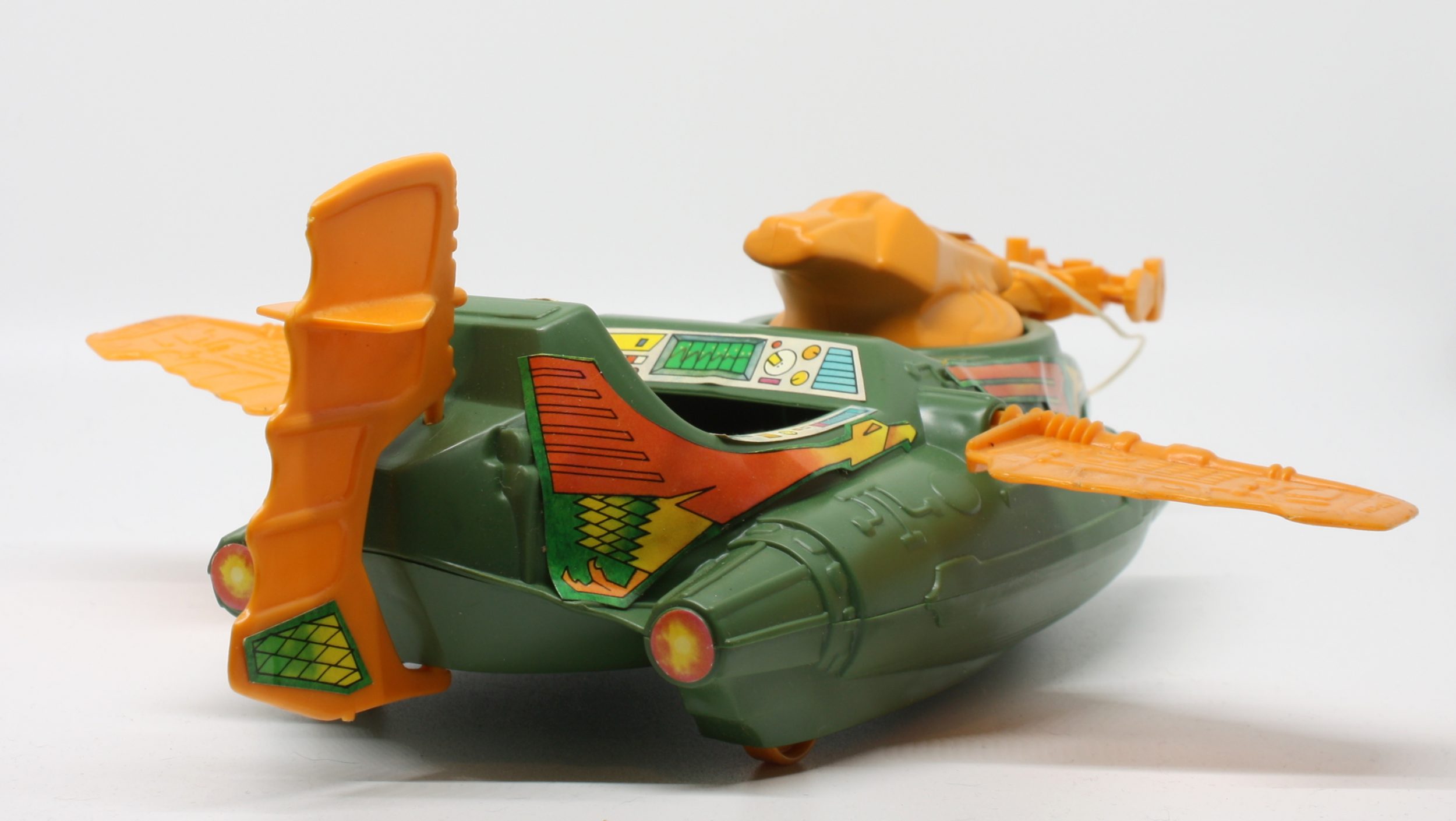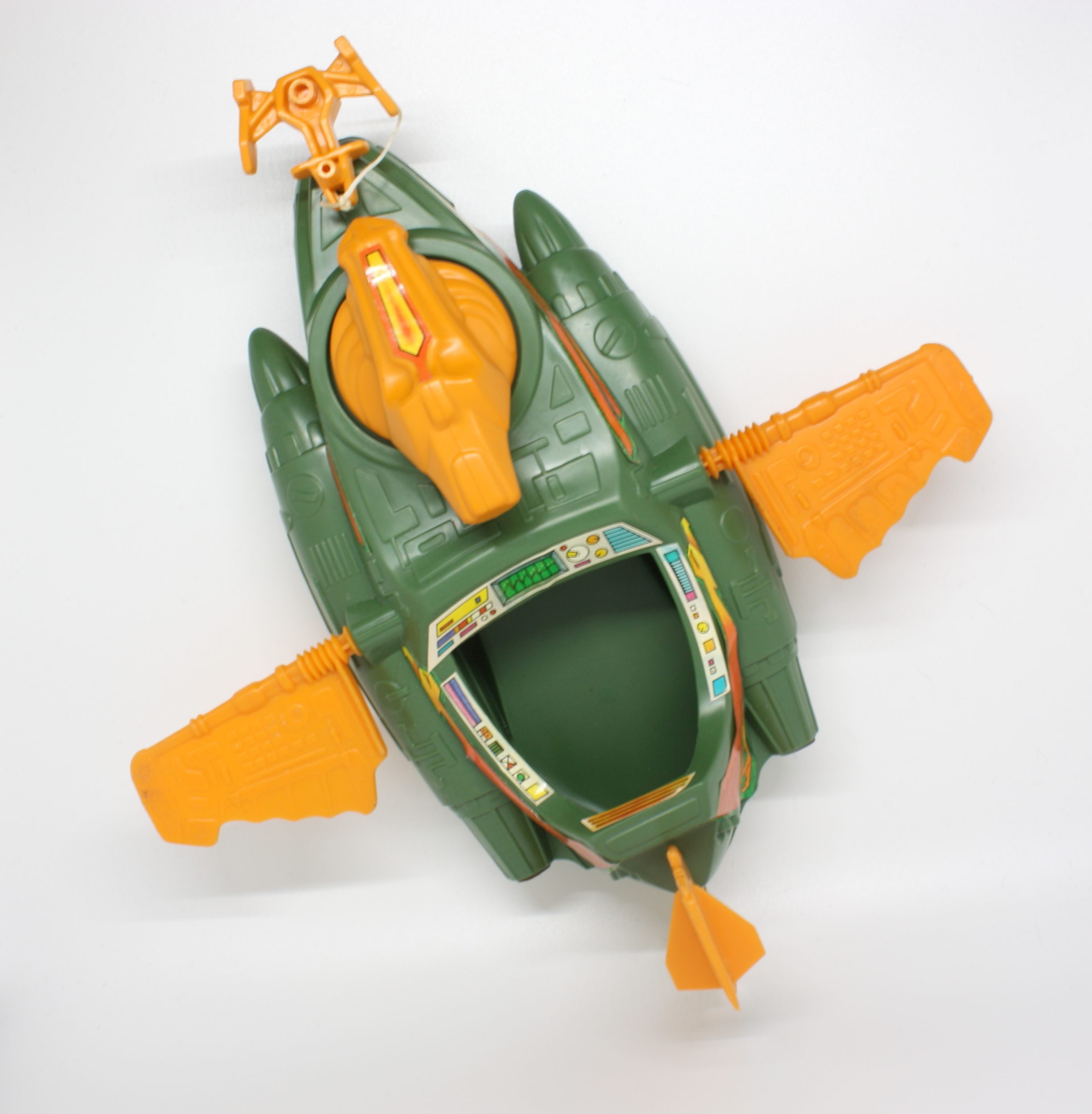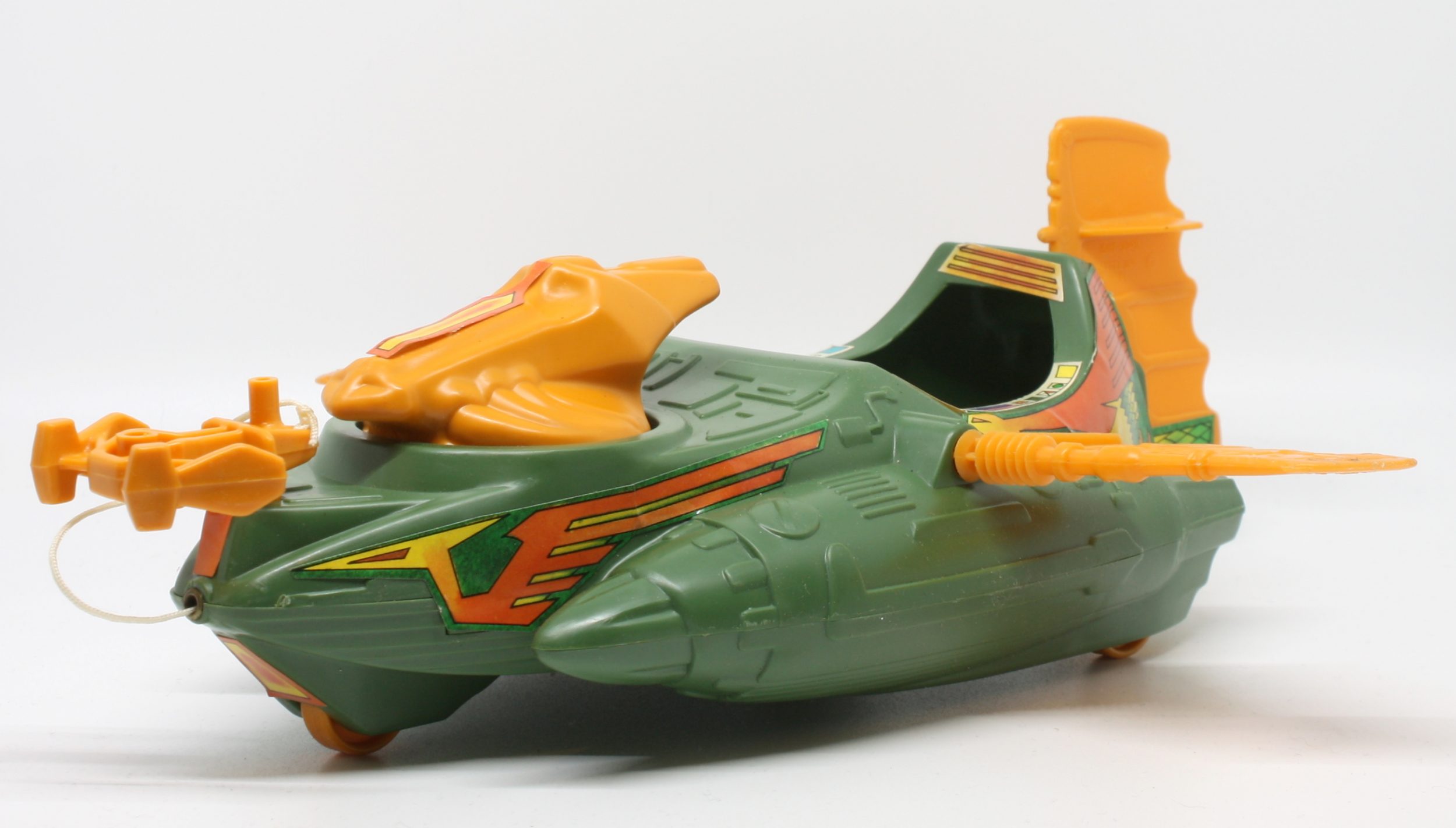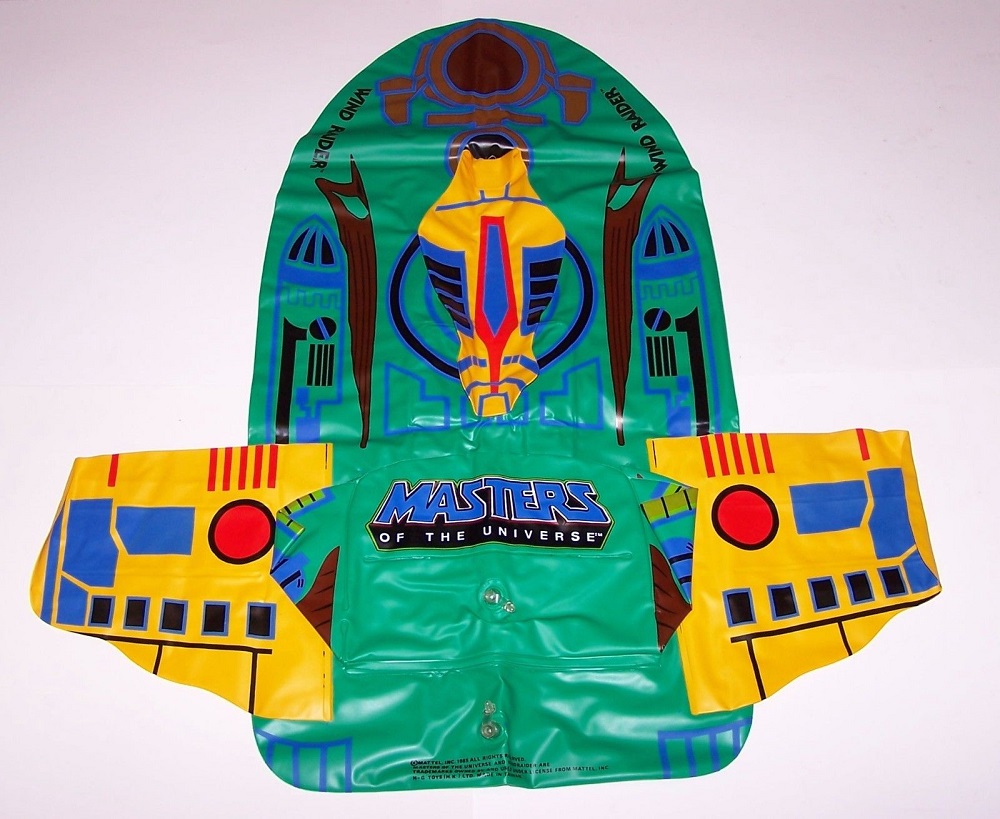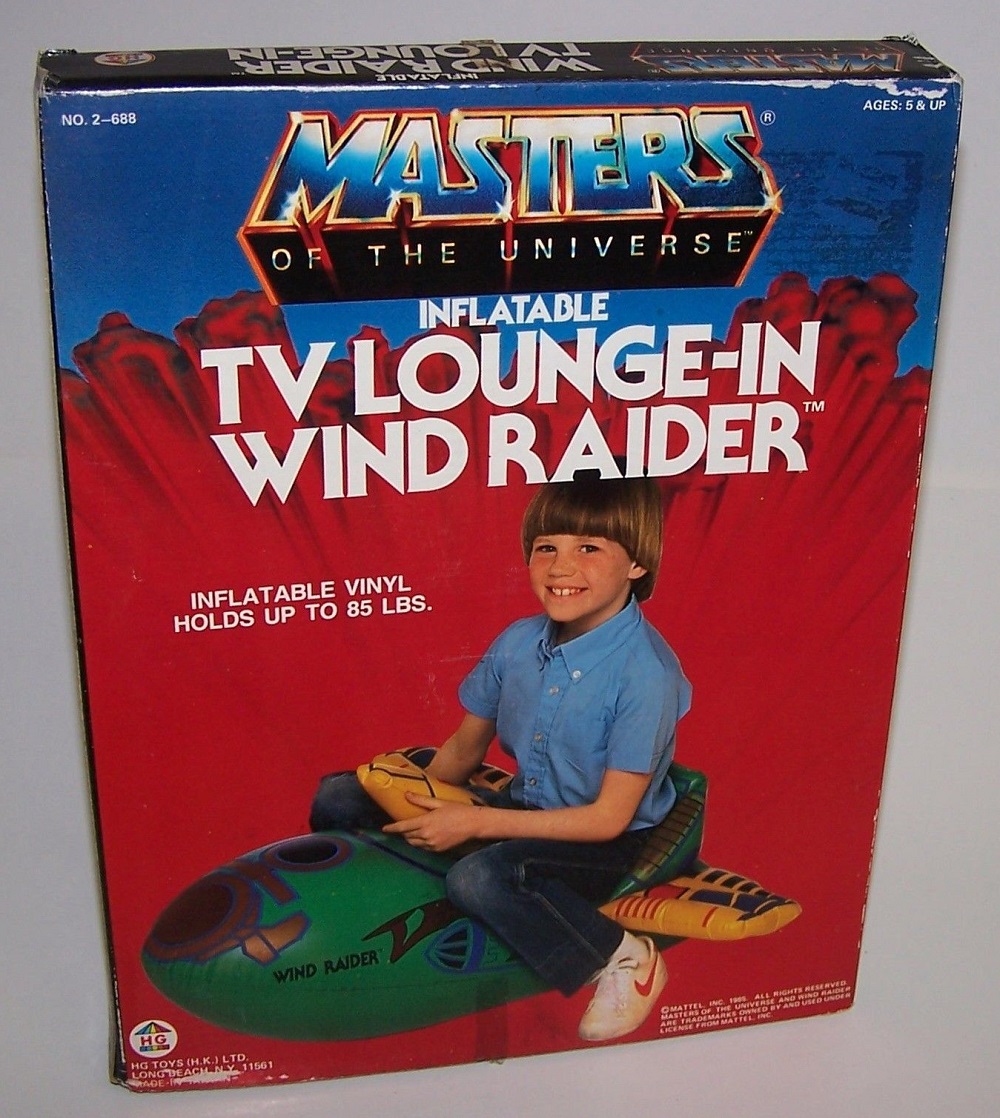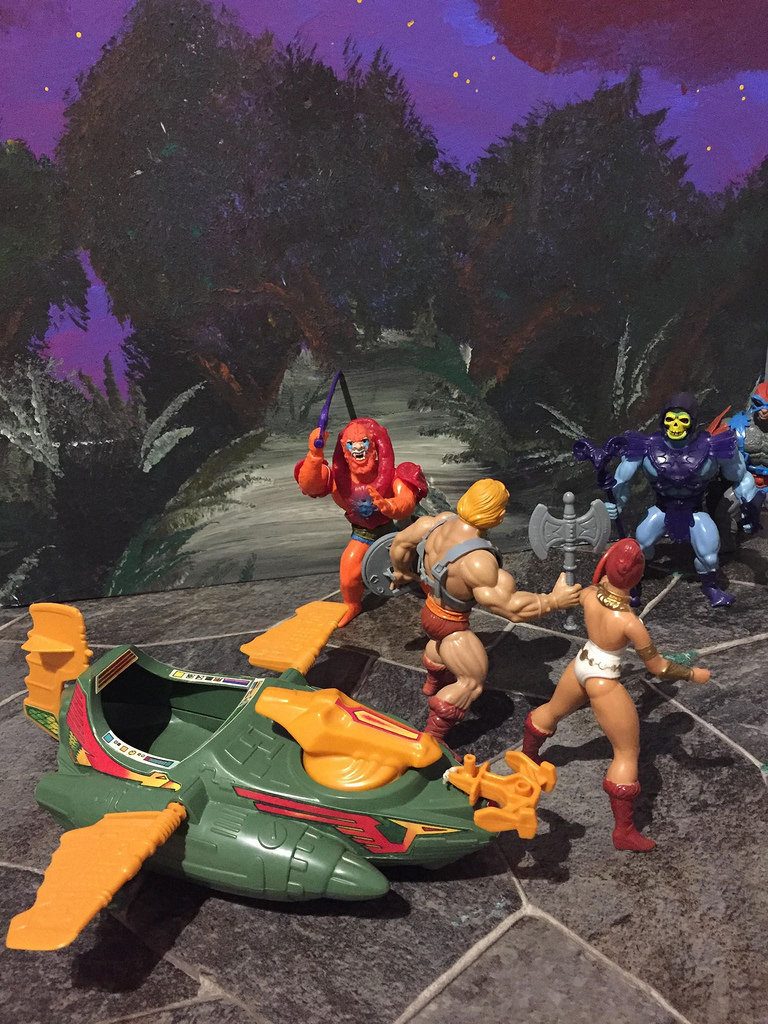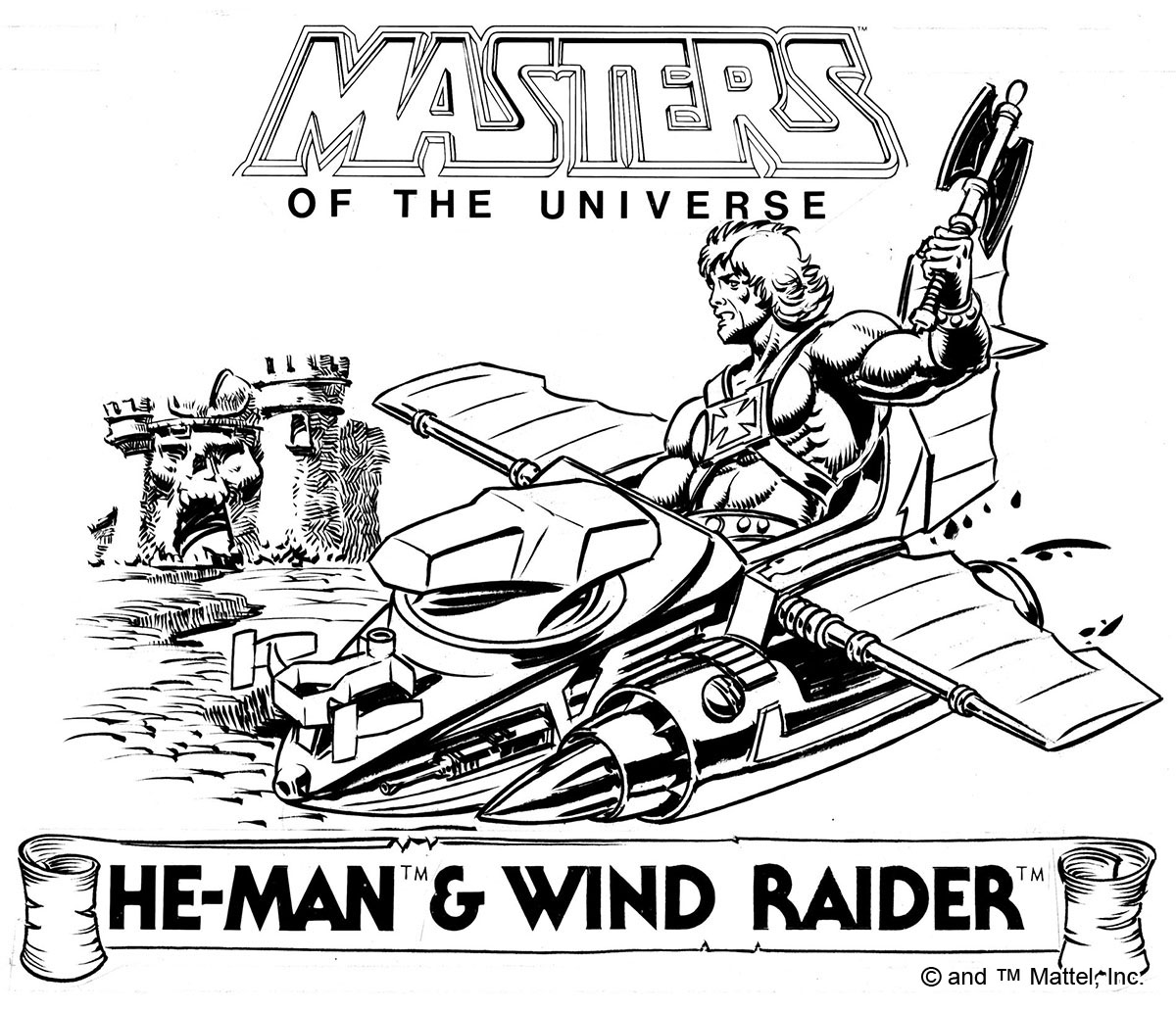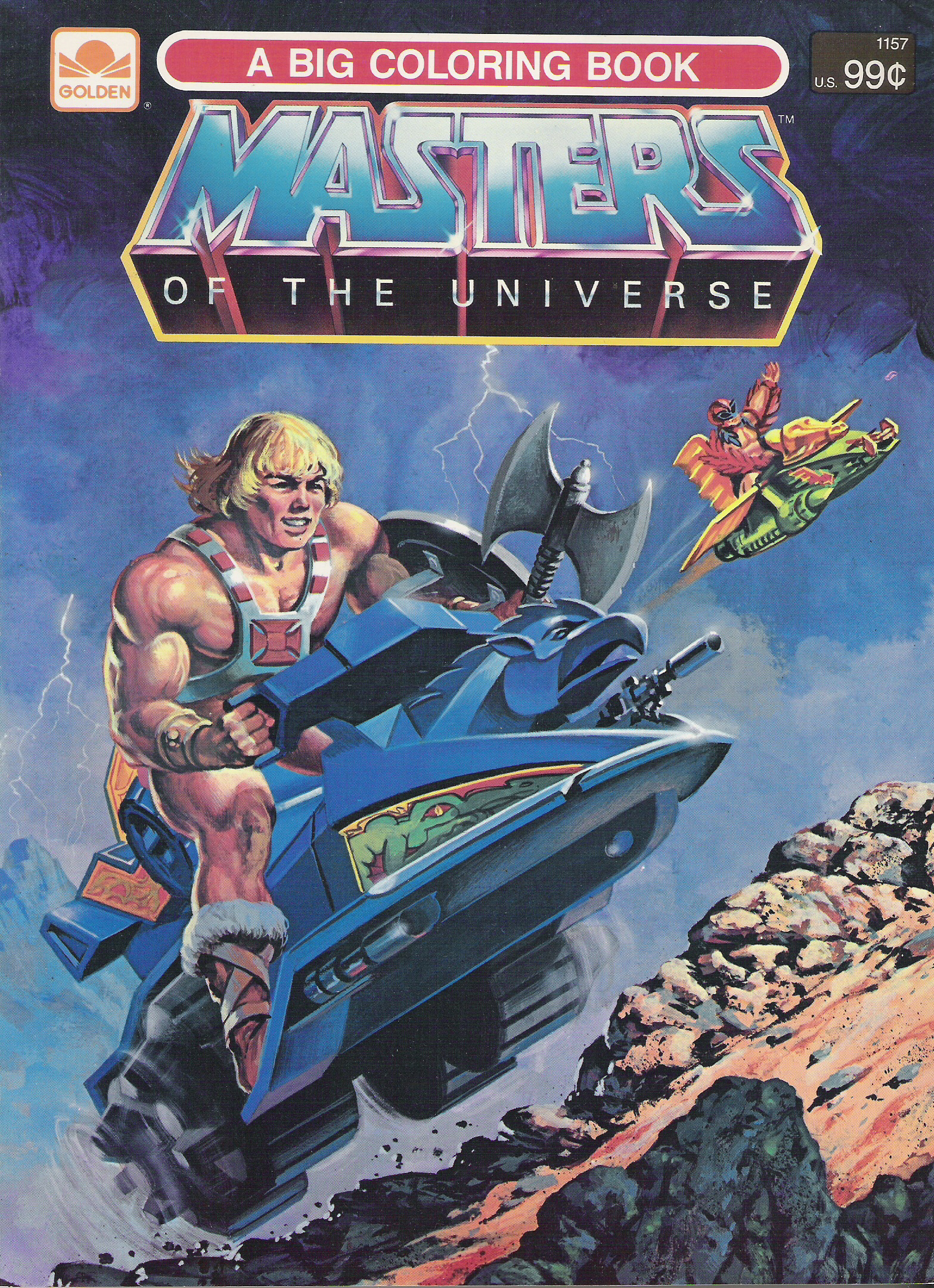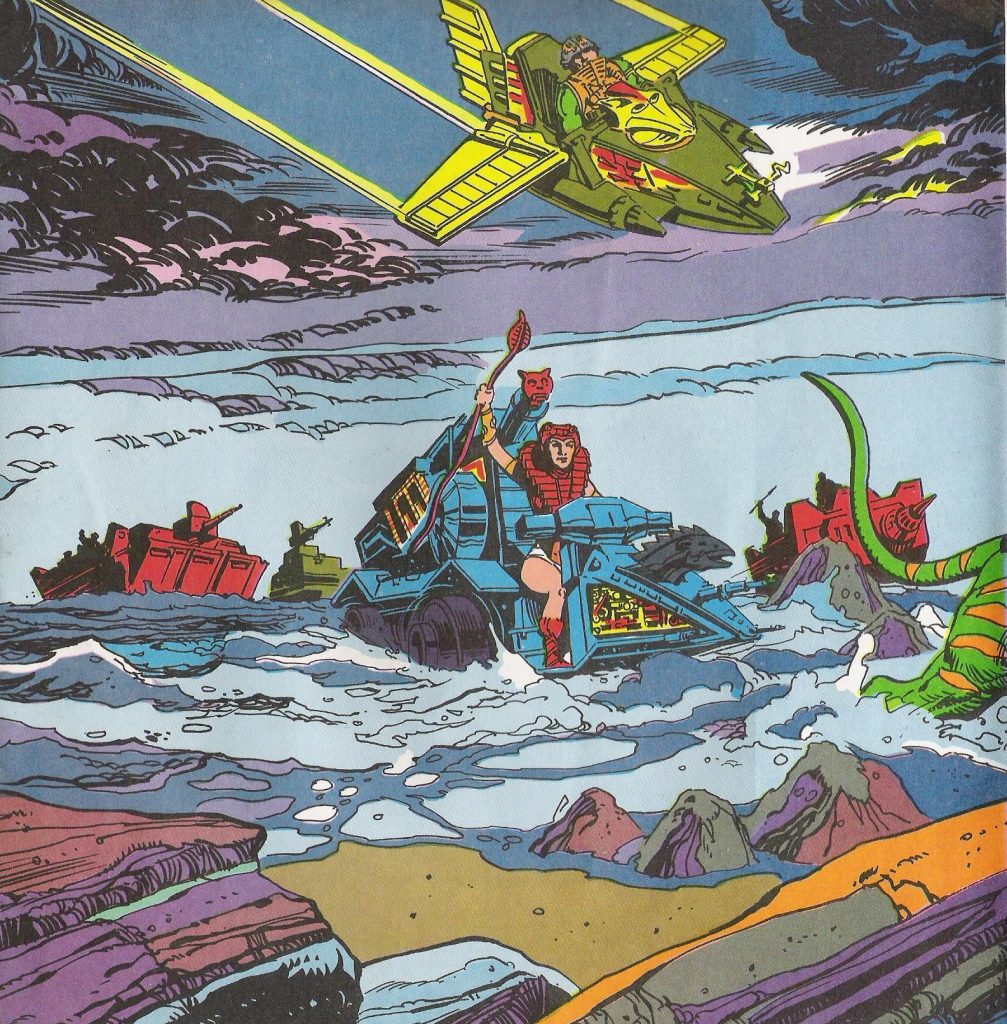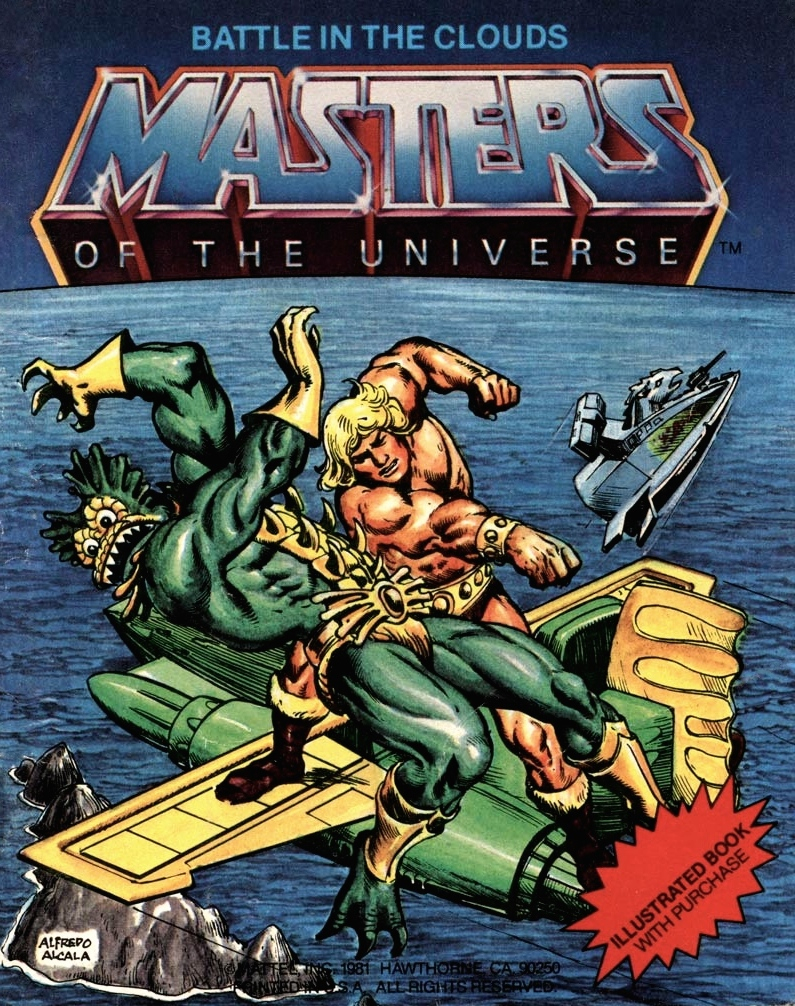
The Attak Trak, released in 1983, is a vehicle with a unique action feature and an interesting design history.
I saw the Attak Trak in the wild only once as a kid. I remember being at another kid’s house. I believe my mother was friends with his mother, and while they were visiting I spent some time getting to know her son. The first thing he did was show me his He-Man collection, and I remember distinctly being introduced to three toys I had never seen before: Evil-Lyn, Faker and Attak Trak. Unfortunately he had worn out the vehicle’s batteries, and I didn’t get to see it in action.
The Attak Trak was designed by Mattel visual designer Ted Mayer, who also designed the Battle Ram, Wind Raider, Eternia Playset, and many other MOTU toys.
In my interview with Ted, he had this to say about the Attak Trak:
[The Attak Trak] started out as a mechanical toy submission that Mattel bought from an outside inventor. It was given to me to make in to a He-Man vehicle. I did about four different design directions, of which they picked one.
Ted didn’t specify who the outside inventor was, but I believe it was Marvin Glass and Associates. They filed a patent for a four wheel drive toy on August 10, 1981, and it was published on April 19, 1983:
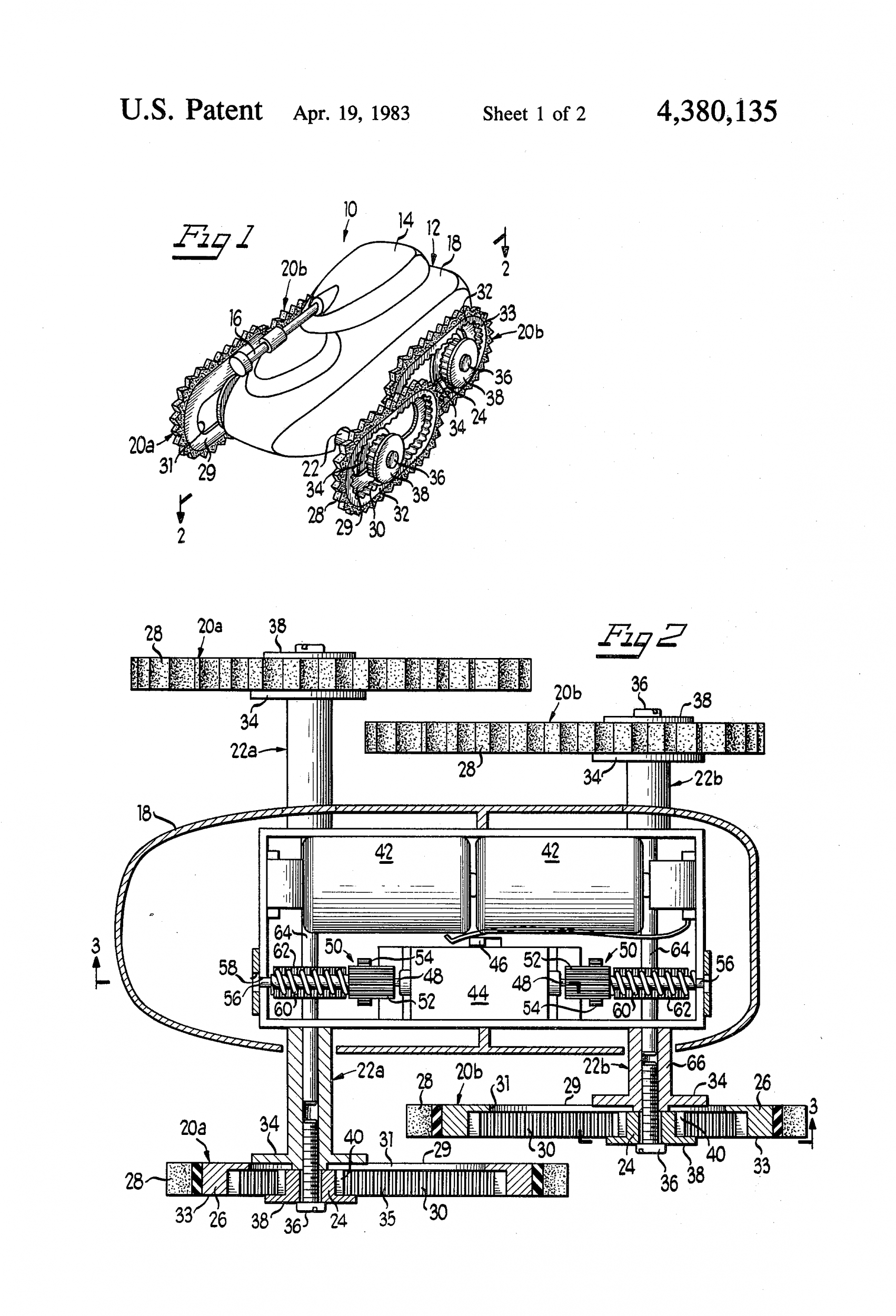
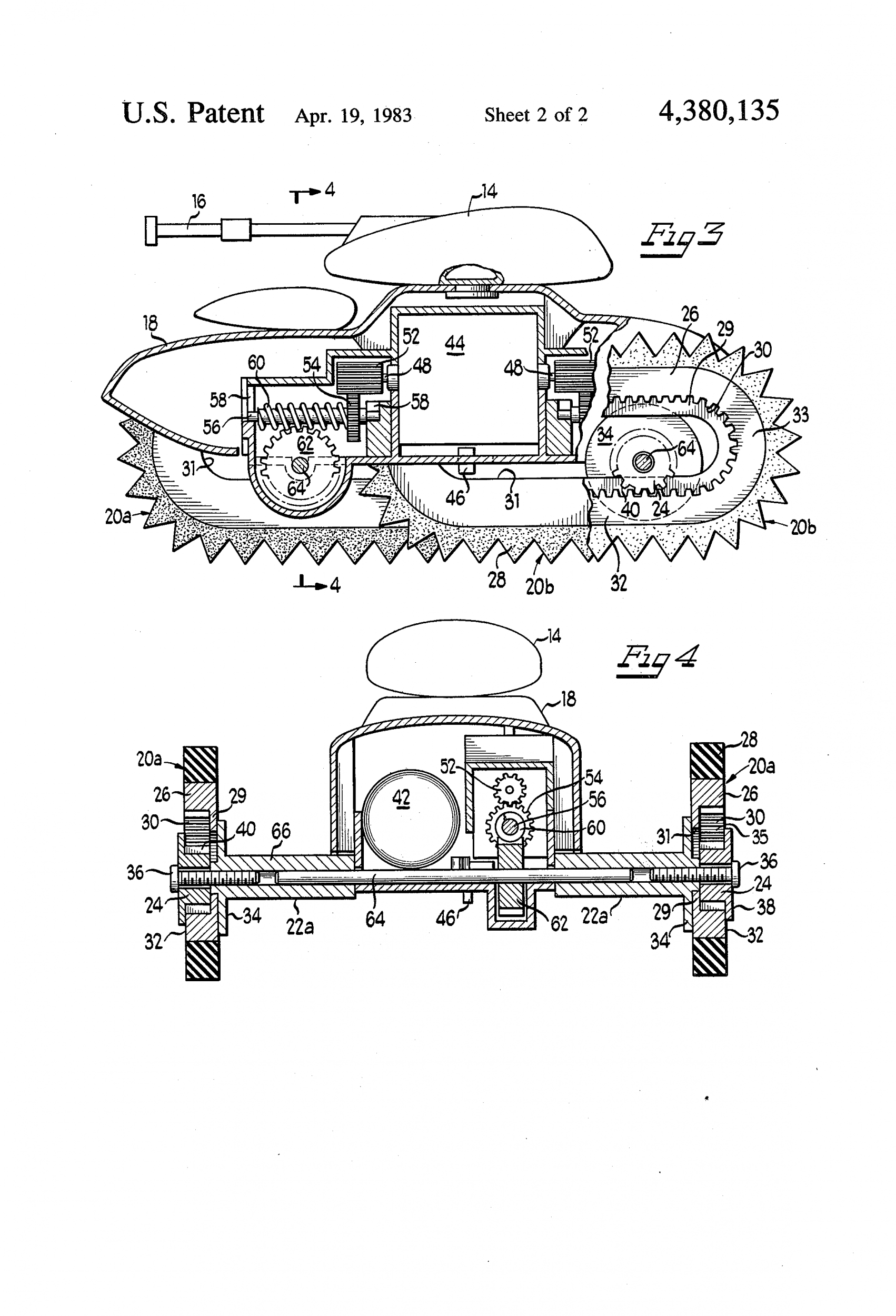
Notice the mechanical feature is identical to the Attak Trak’s. The visual design, however, is a fairly generic-looking toy tank.
Ted Mayer stepped in to give the vehicle a Masters of the Universe feel. He submitted the following drawings, which featured an elongated fantasy beast head on the front, and an option for a canopy on top:


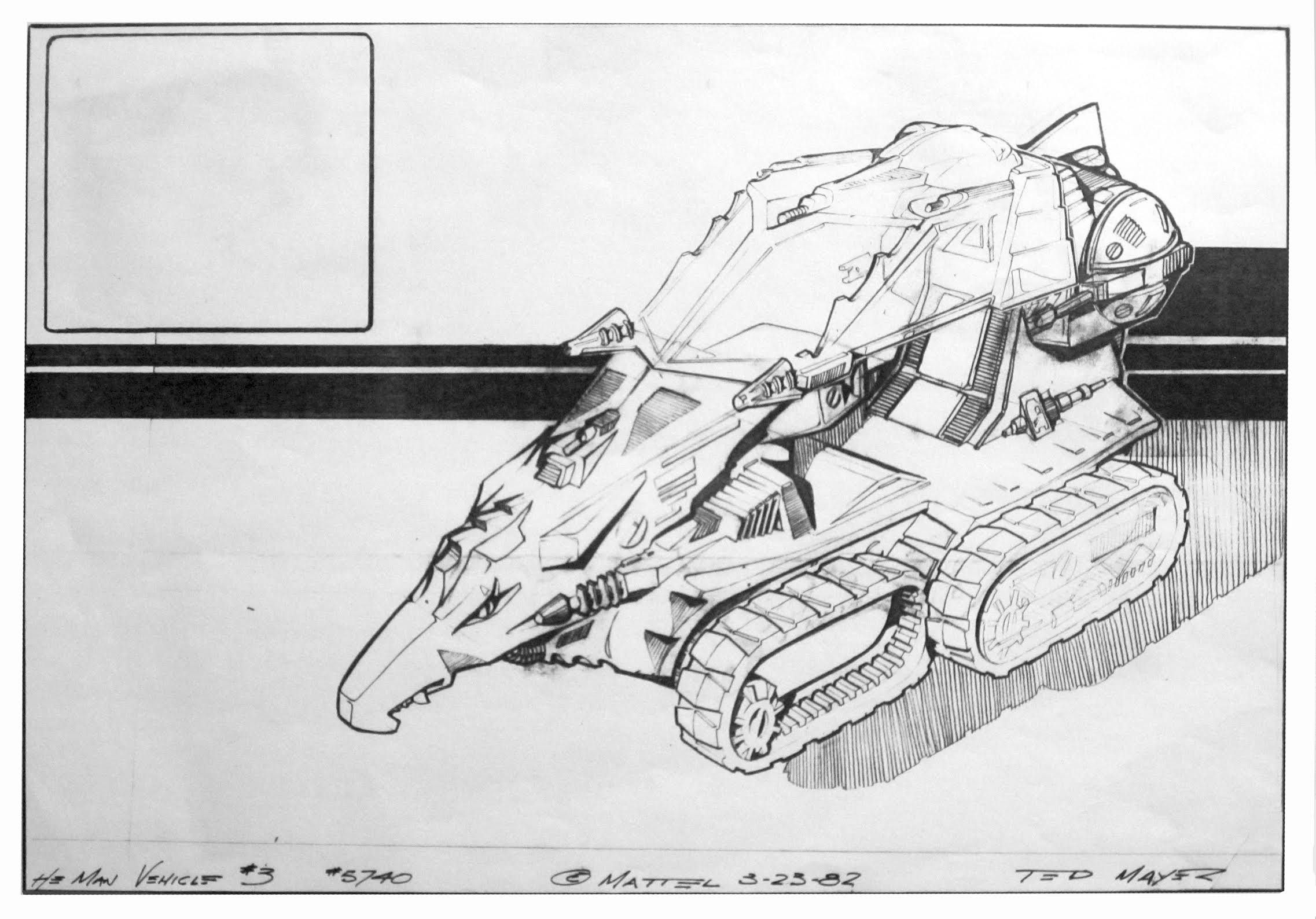
In my interview with Ted Mayer, he explained:
The canopy was dropped because it costed out quite high, so they looked at dropping as many extras as possible. By this time I was also doing all the control drawings, so when they went to the engineers, things were final.
Ted submitted the following control drawings for consideration. “For some reason marketing didn’t want the gargoyle type head,” he explained. So the second design was chosen for final production.
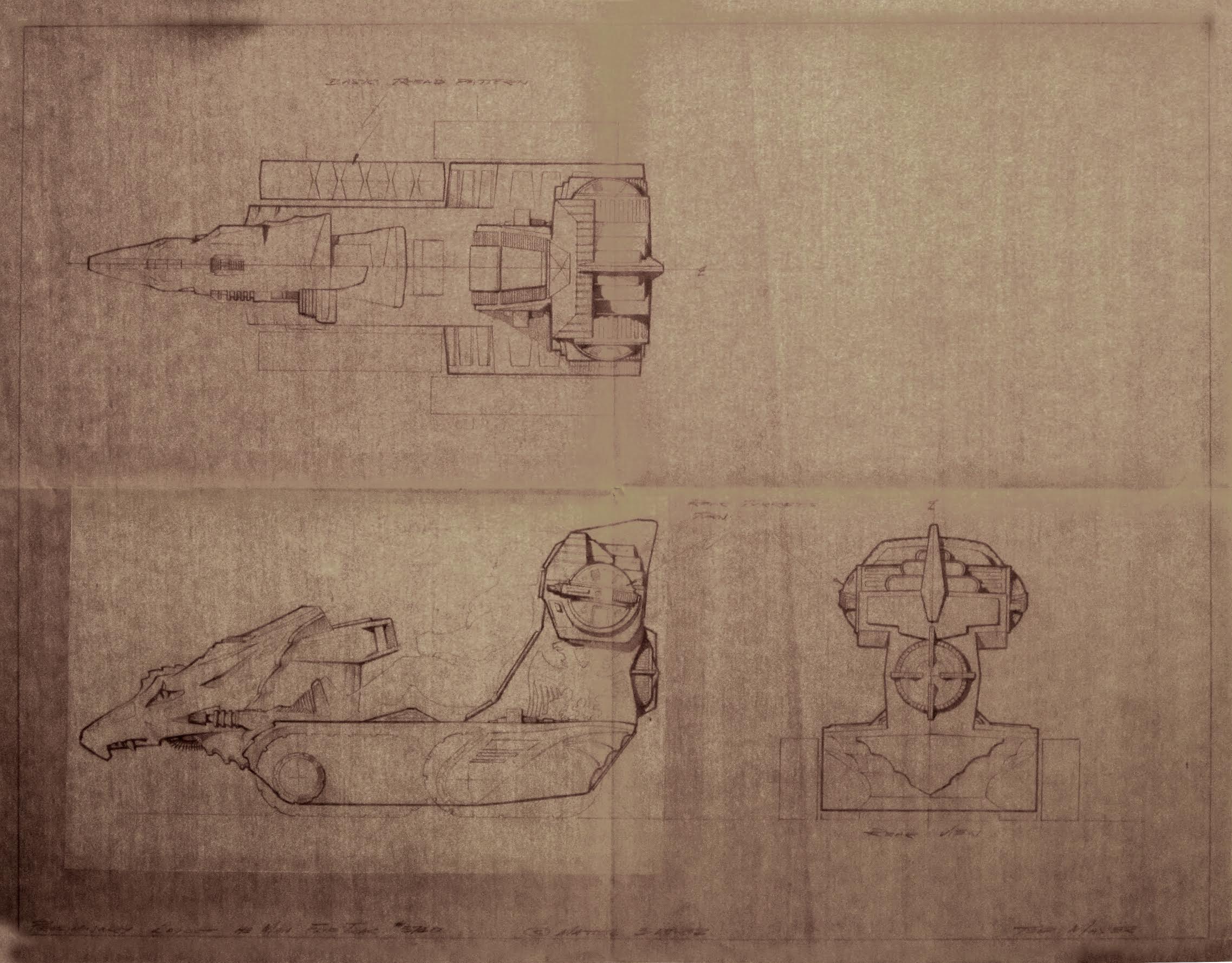
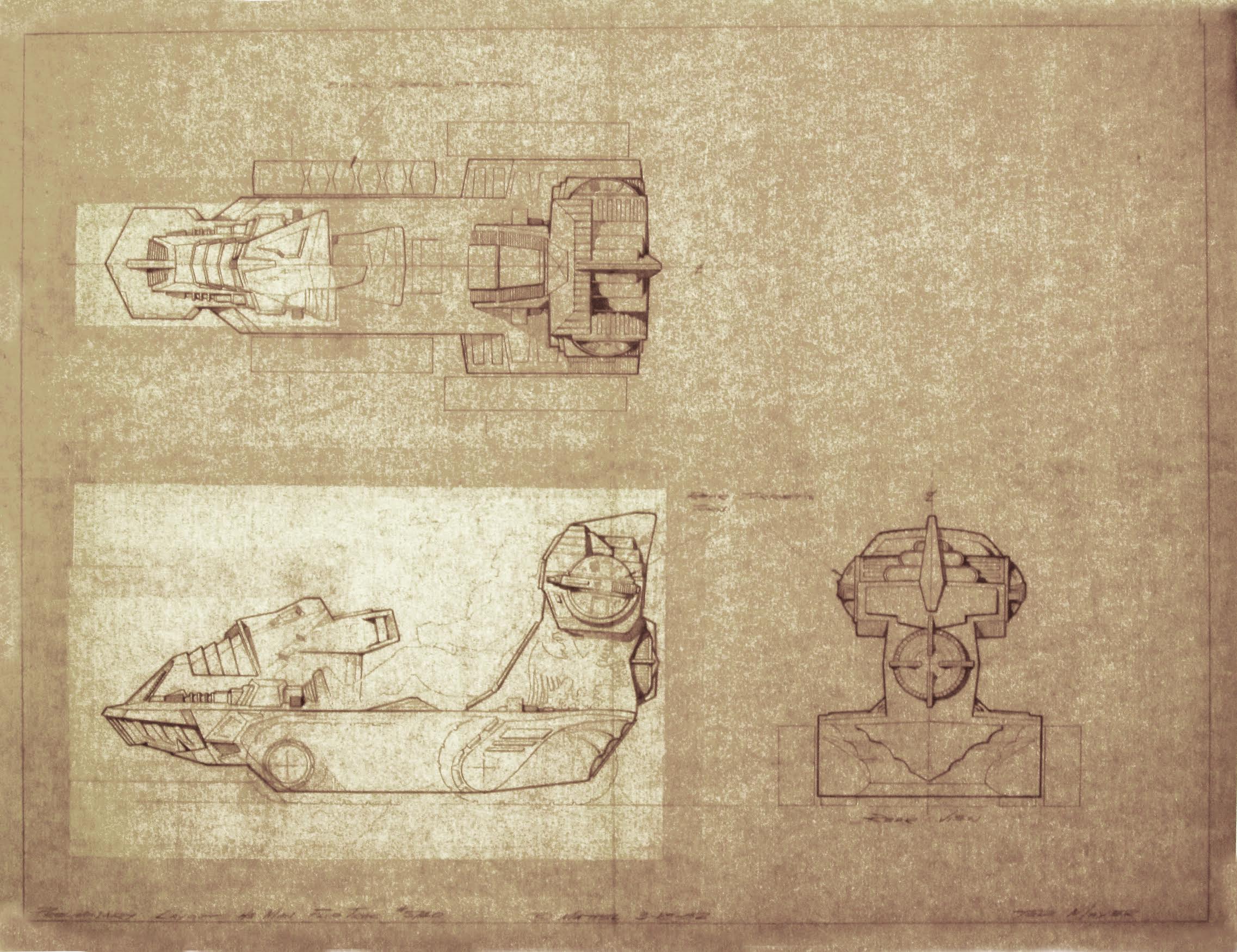
In a Tomart’s Action Figure Digest article on the origins of Masters of the Universe, another Ted Mayer concept drawing of the Attak Trak appears, along with a black or dark brown production sample that features sticker designs not used in the final version:

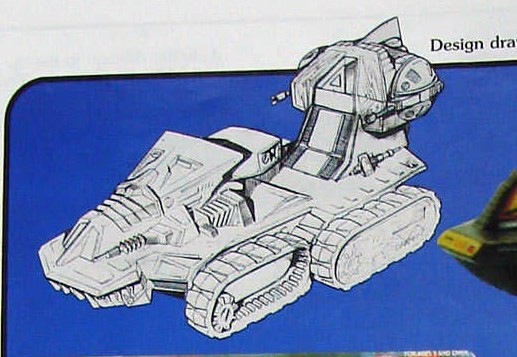


The final toy was produced in a bright red and blue color scheme:



Monogram produced a model kit version of the Attak Trak. It featured the canopy that Ted Mayer had originally designed (or something very close to it), as well as other unique details. The model was not motorized, but it was in scale with the vintage figures:

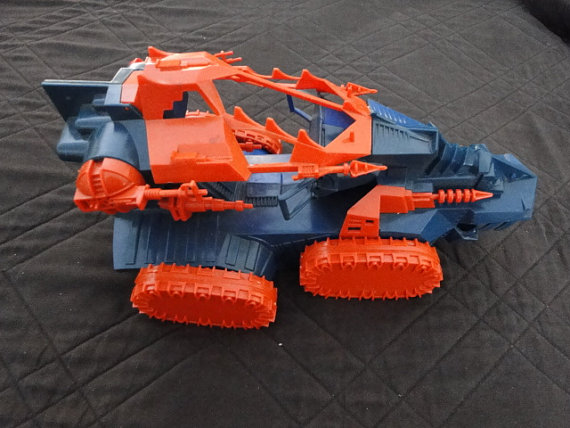
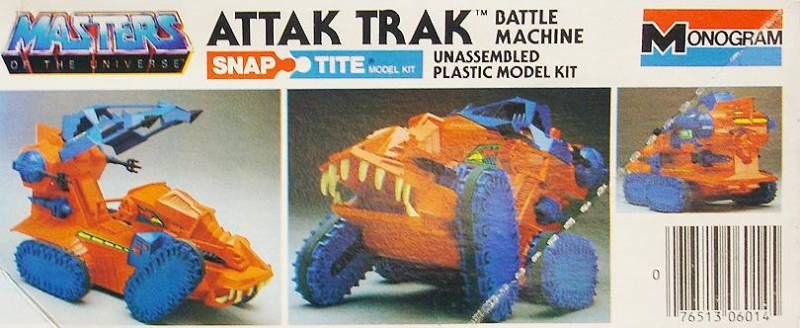


Rudy Obrero provided the artwork for the Mattel Attak Trak packaging. He has stated in interviews that it’s the least favorite piece he did for the vintage line. In the interview I conducted with him in March of this year, Rudy had this to say about the process:
It’s the last piece I did for Mattel. I started to think the art direction came from a committee, seemed as though everyone in Mattel wanted in on package art because of its success as a toy line. These pieces were done in oil paint so changes were a pain to do.
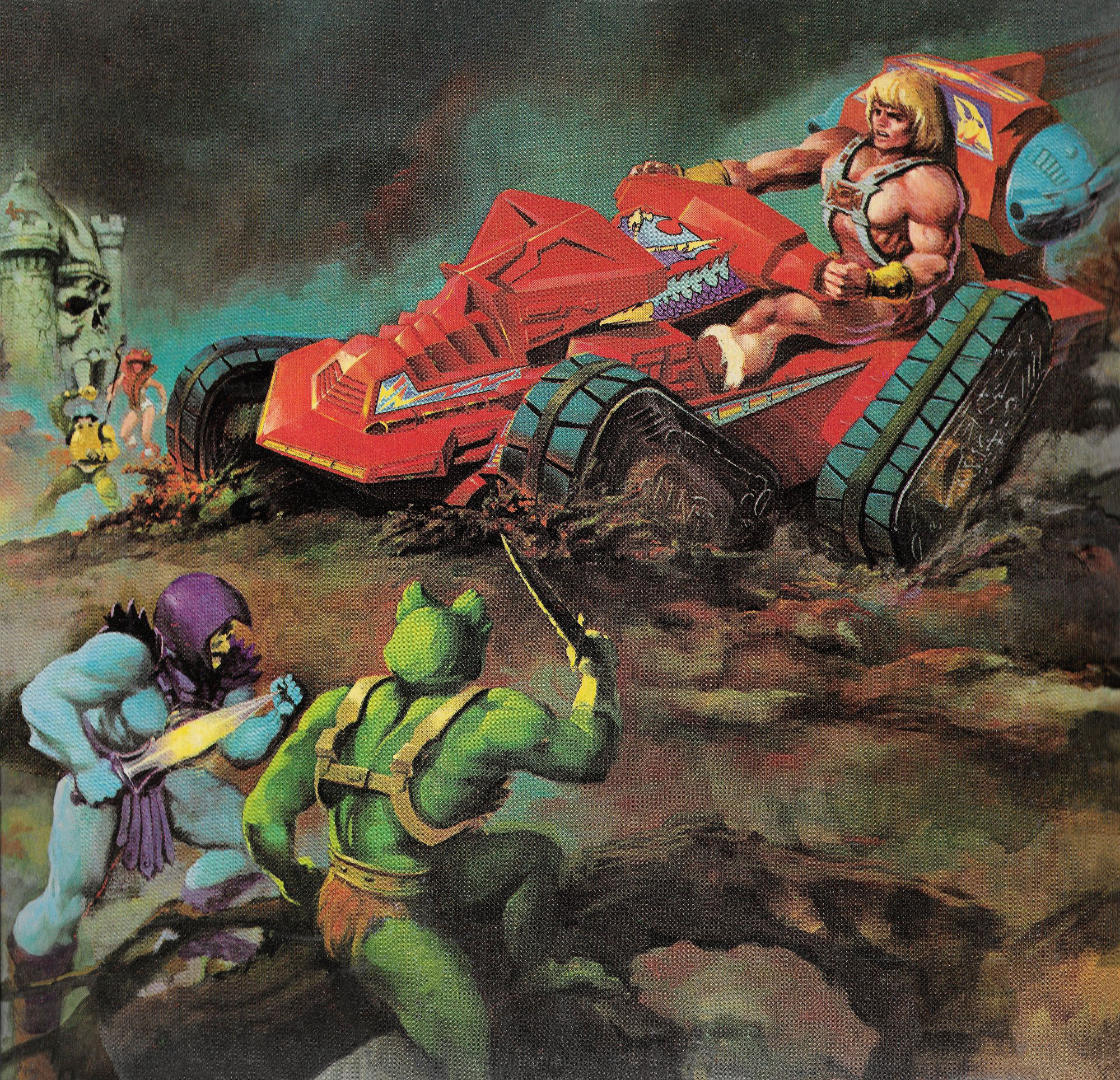
Rudy mentioned that various people at Mattel were constantly asking him to make small revisions on the Attak Trak artwork. It appears that two versions of his art made it to the packaging. The version below has the splash of mud removed from the front of the treads. I imagined they had it removed because the vehicle would probably stop working if run through real mud. The version without mud seems a bit easier to find, so it’s probably a version that came out shortly after the initial release.
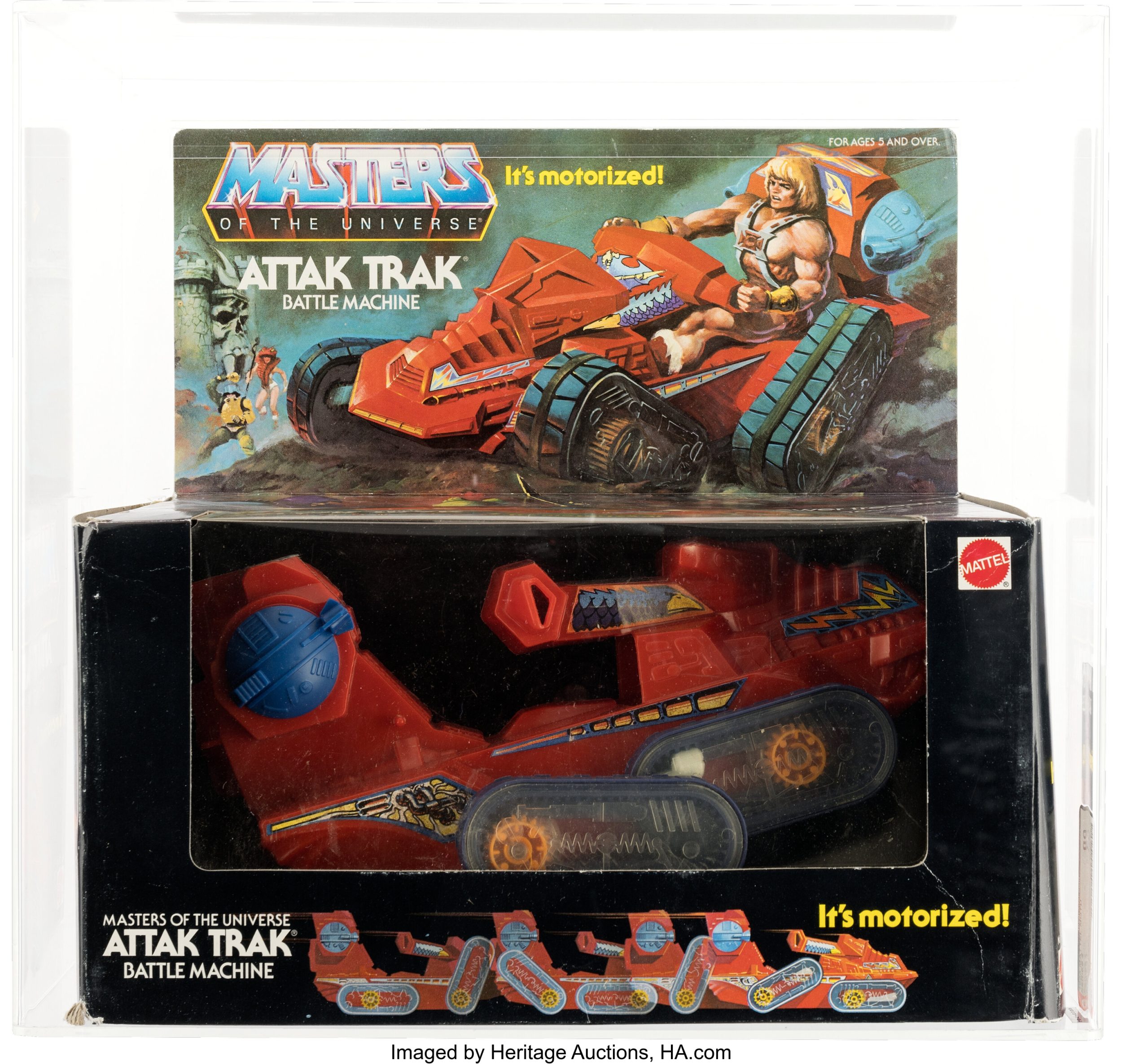

The artwork for the Estrela Toys Attak Trak was modified for unknown reasons. The Brazilian manufacturer and licensee did the same with their versions of Castle Grayskull, Battle Ram, and other toys:

There was also an orange version of the Attak Trak. This one was released in Europe – I don’t know if there were any orange versions released in the US market. This particular version has the muddy artwork:

Interestingly, the cross sell artwork for the Attak Trak was also orange, and the vehicle was colored orange or sometimes brown in early mini comics:
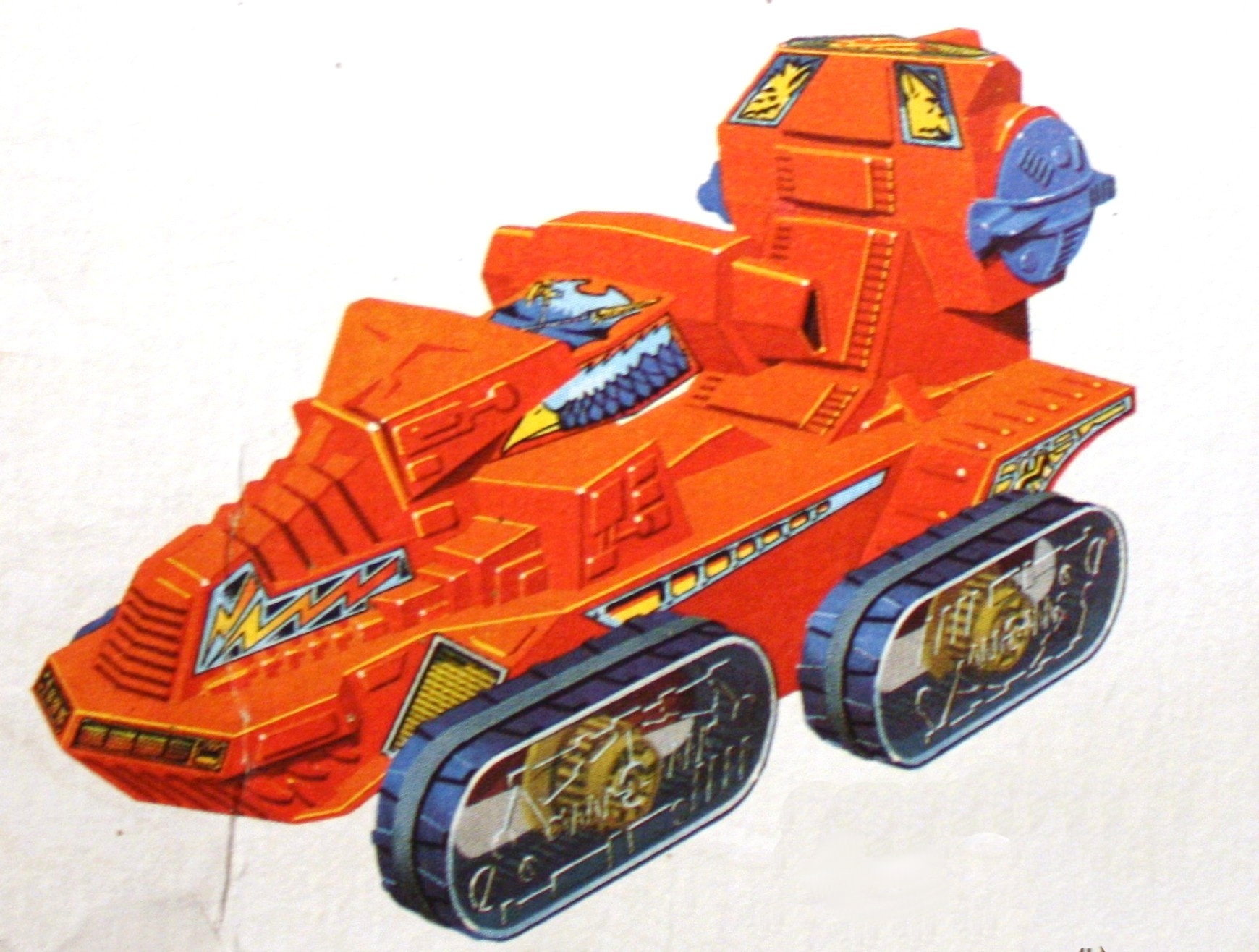
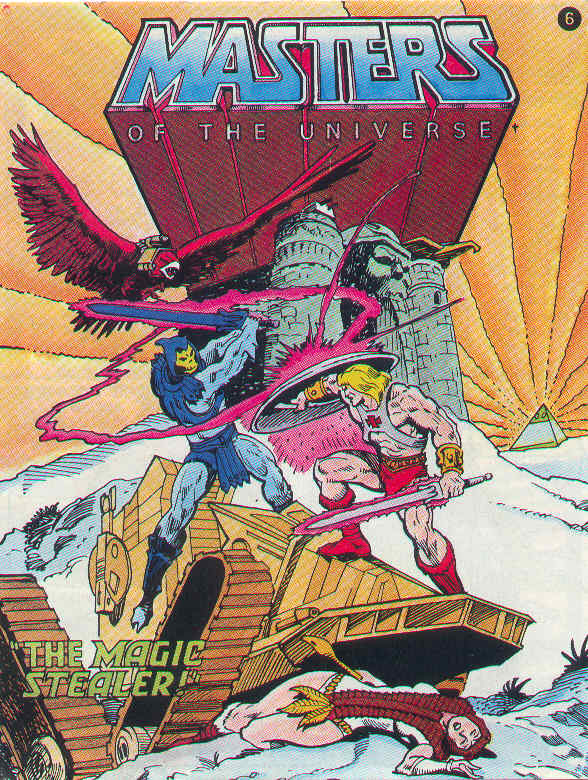

Artist Errol McCarthy produced several pieces of artwork featuring the Attak Trak:
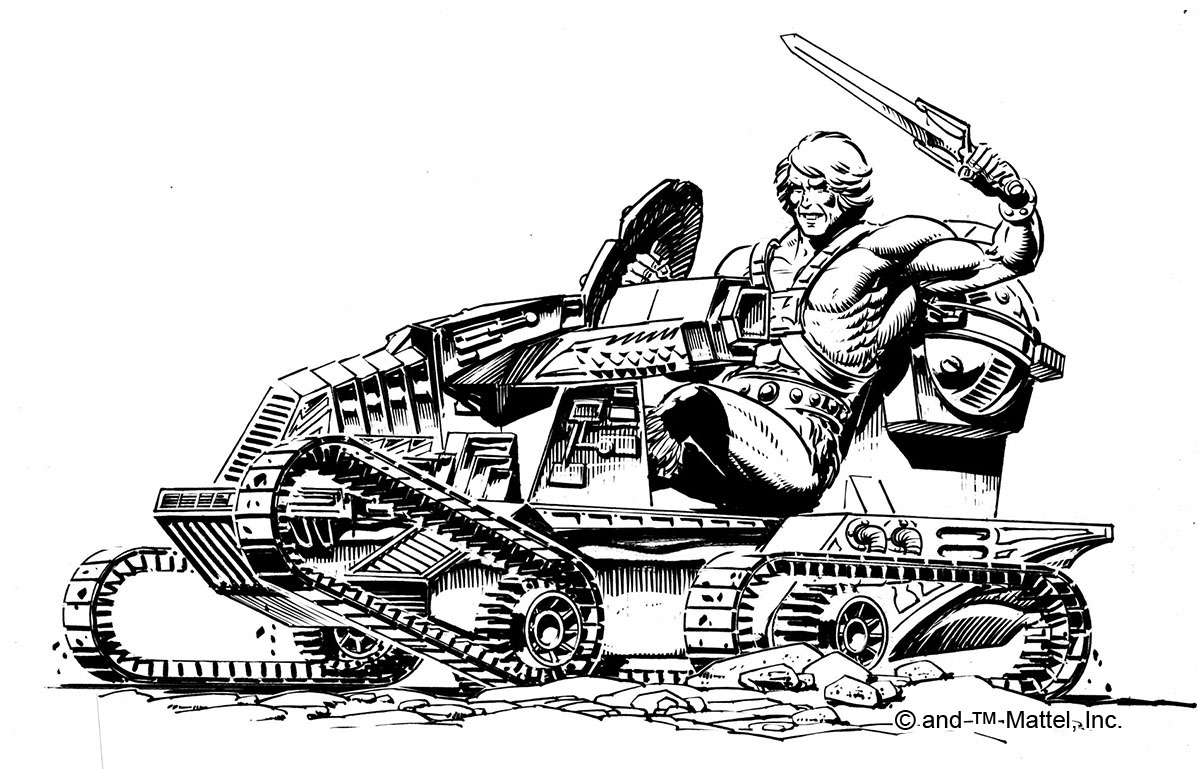
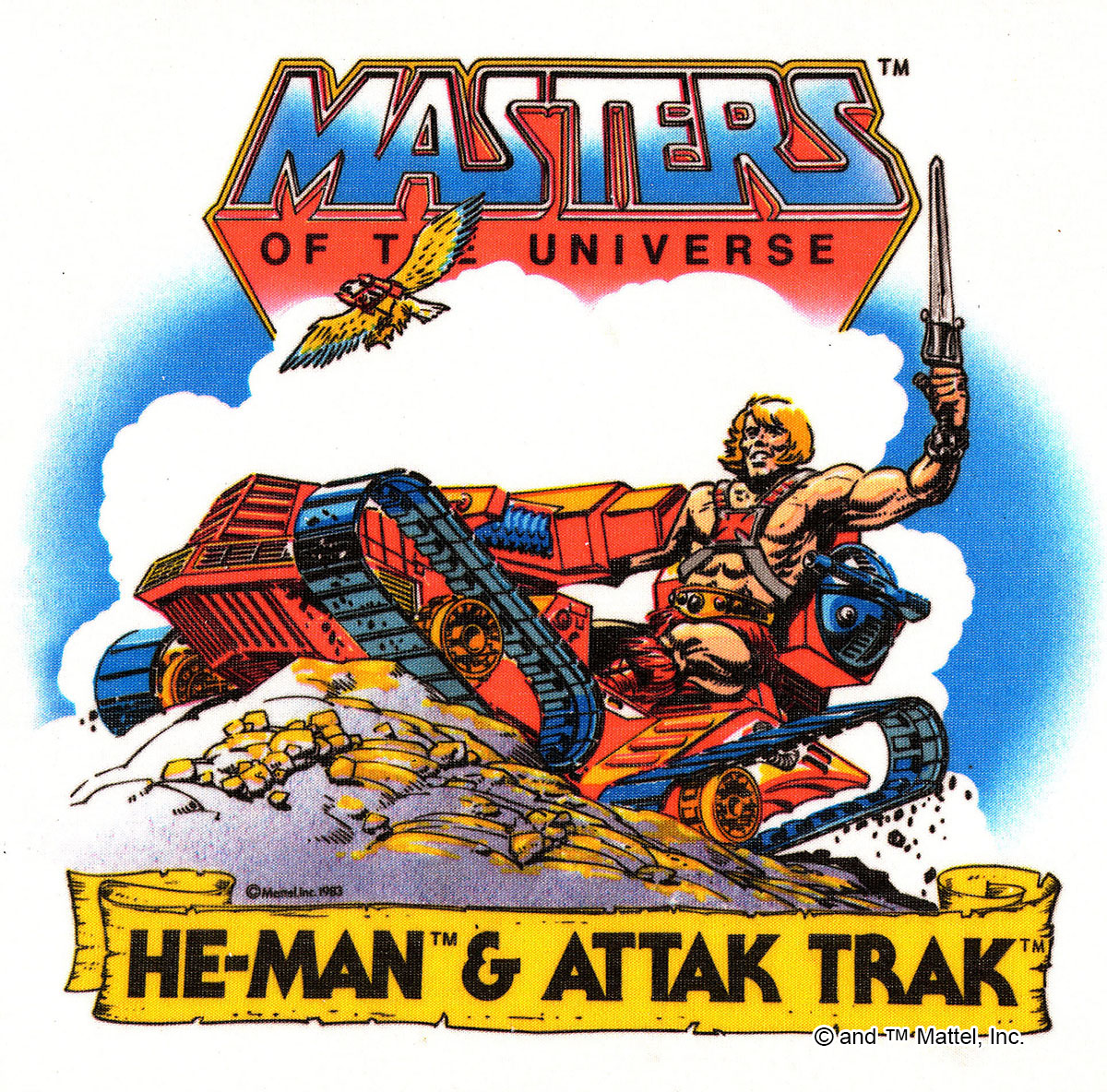

Early on in the mini comics, the Attak Trak was represented as having a “mind of its own.” That was expanded upon in the Filmation cartoon series. The vehicle could undertake complex tasks on its own and had a voice and personality. The Attak Trak also underwent a radical redesign:
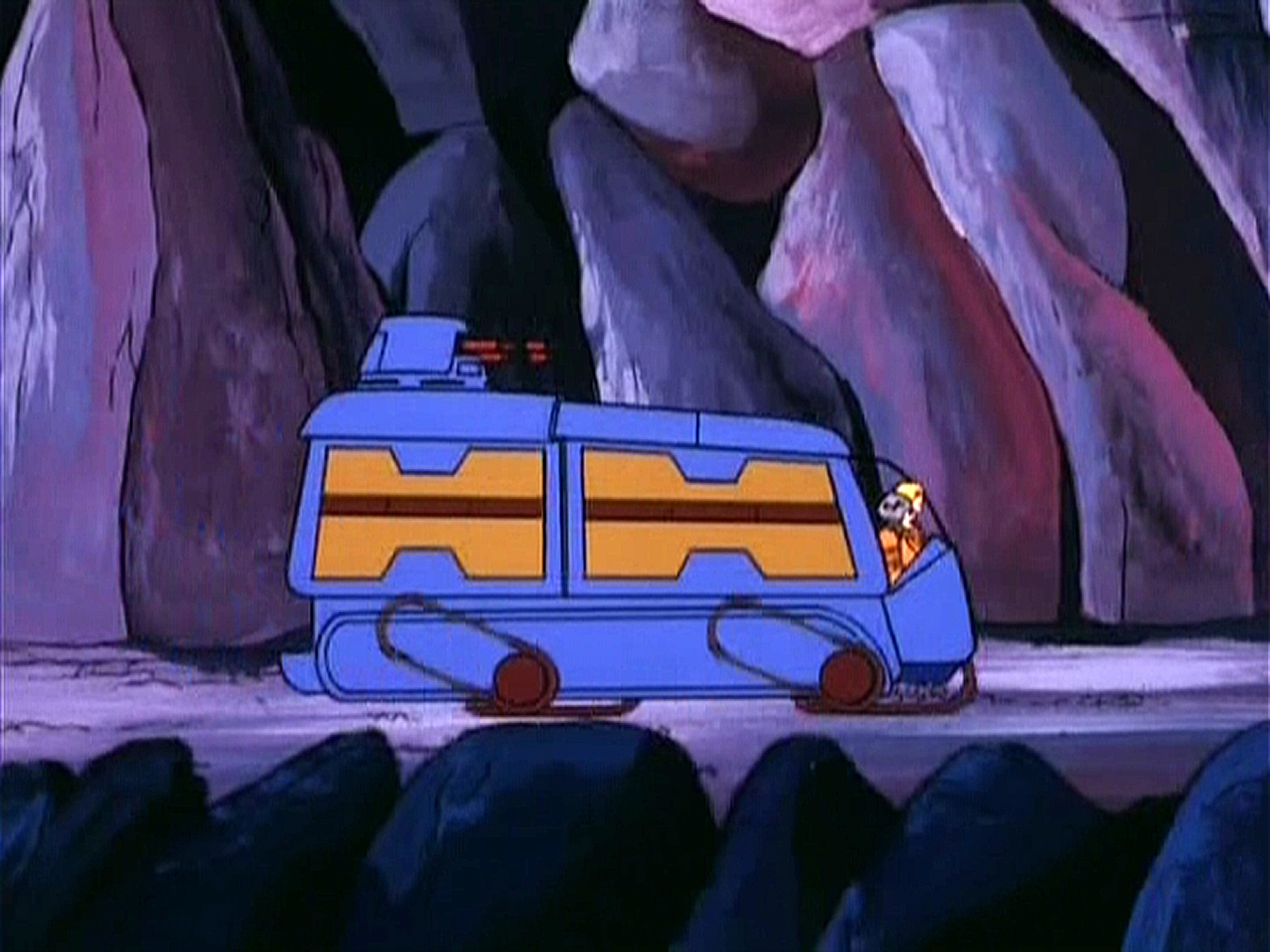

There was, however, a more toy accurate version called the Small Trak that made an appearance in the Evilseed episode:
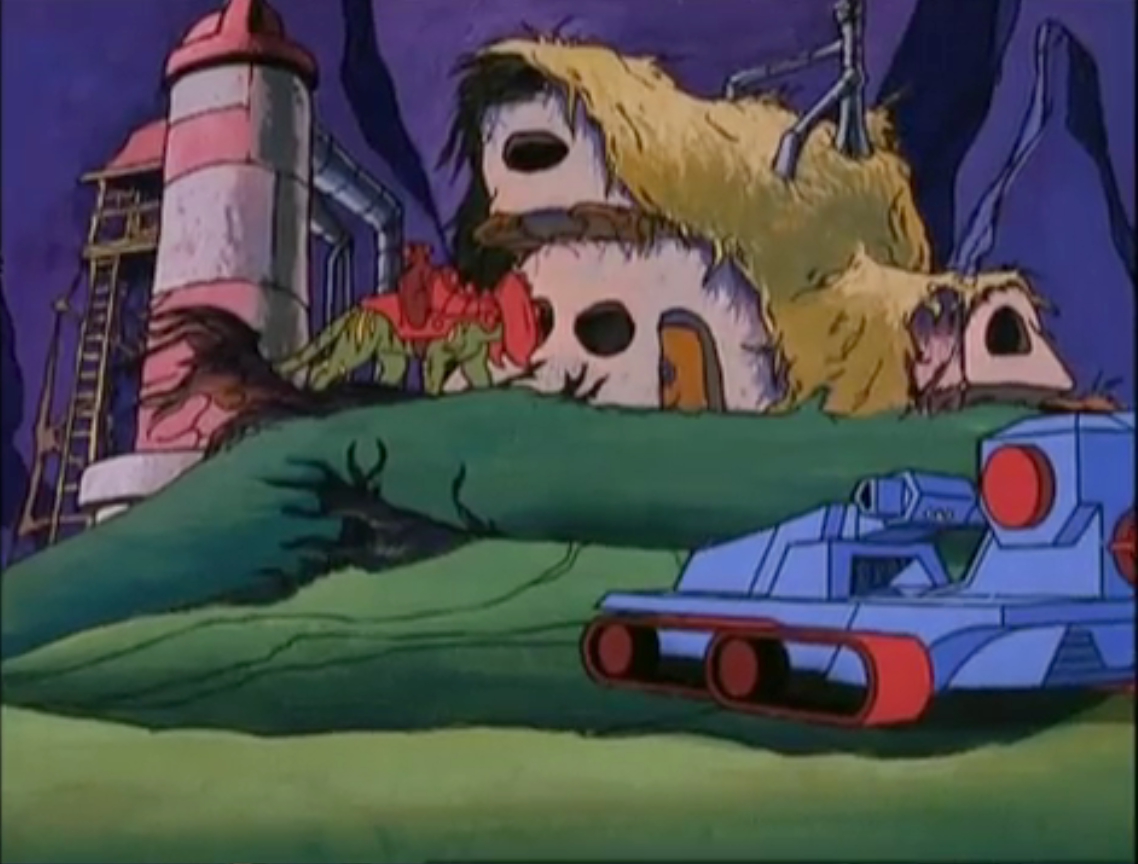
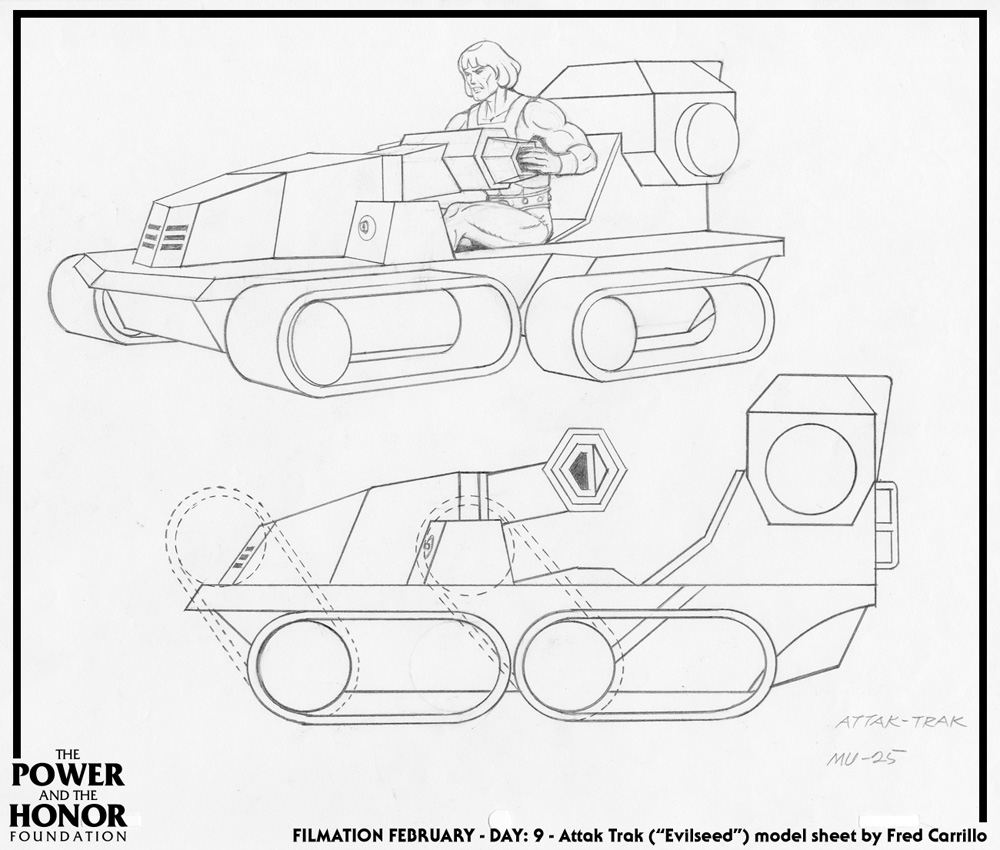
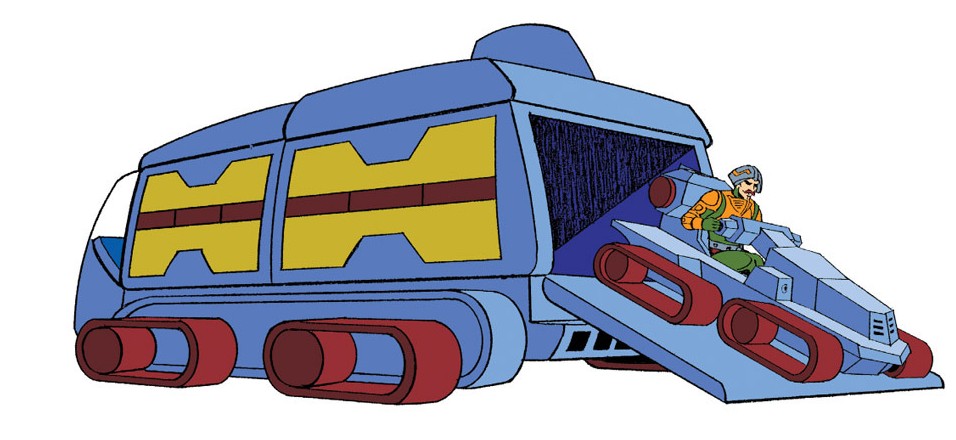
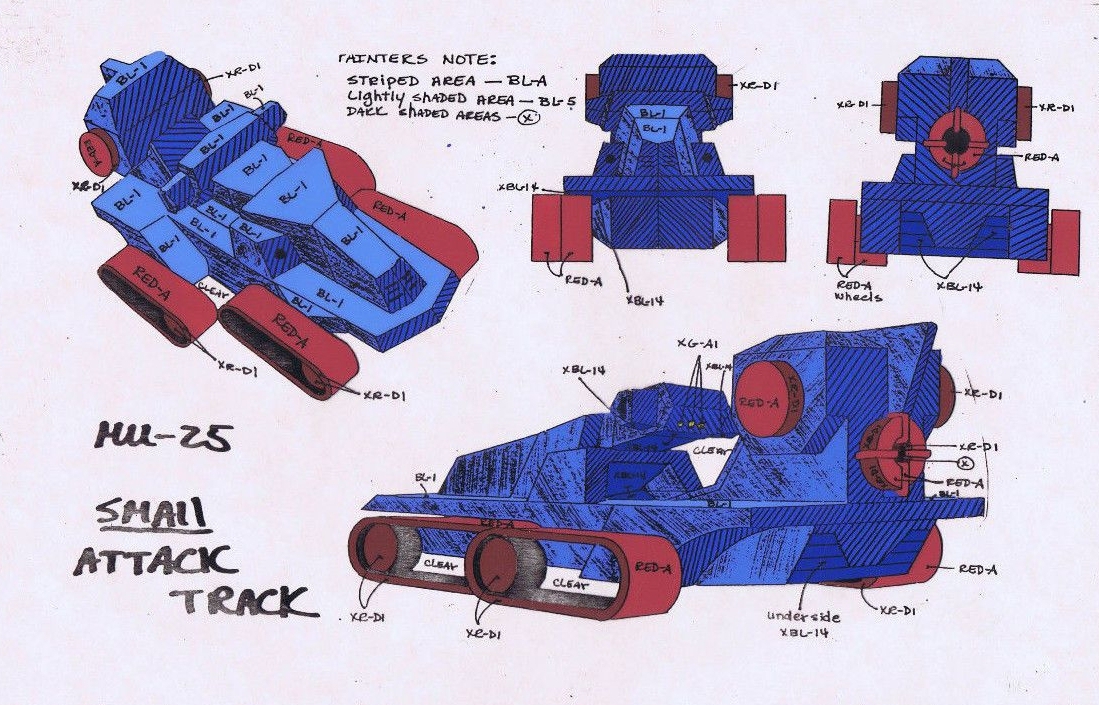
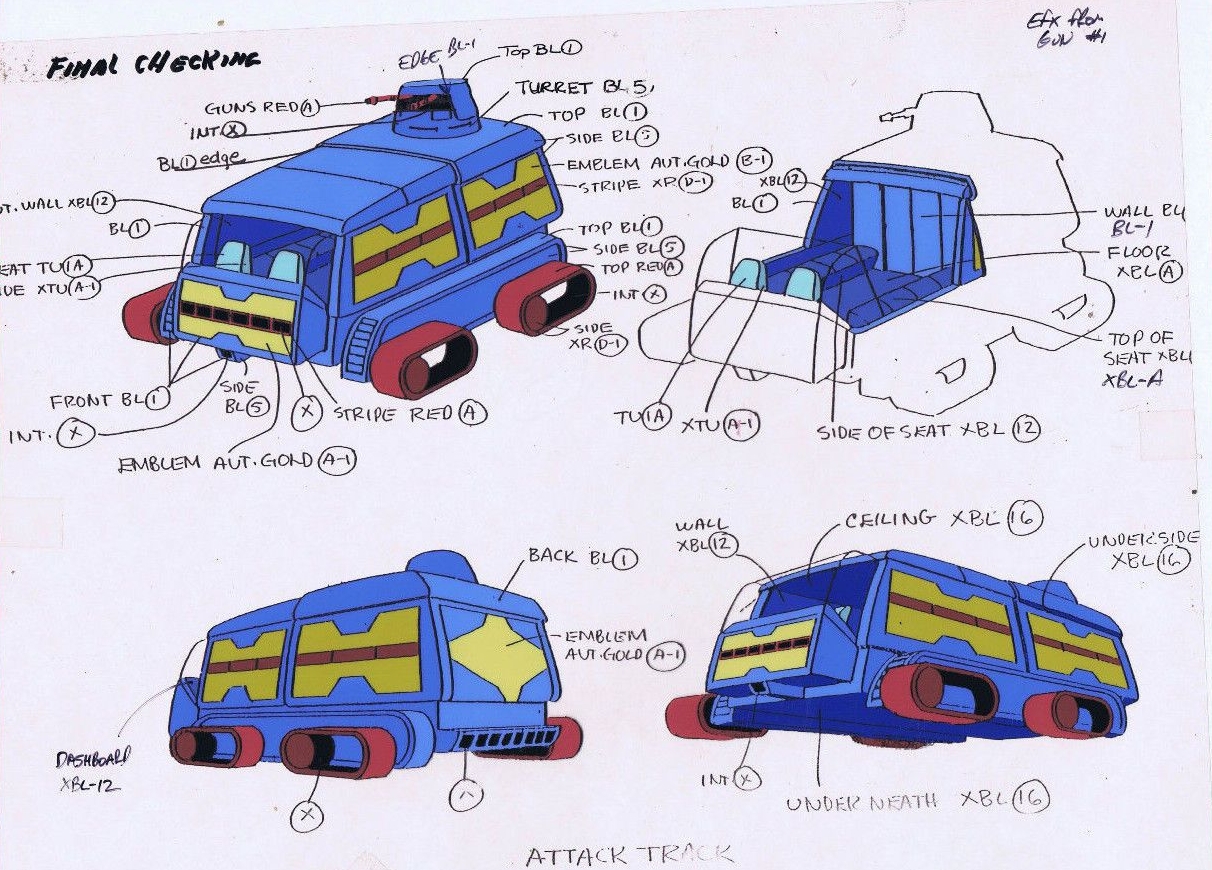
Also released in 1983 was the Big Jim Spy Series All-Terrain Vehicle. The body shape was completely different from the Attak Trak, but it used the same track-flipping concept, and even shared the exact same tread design:
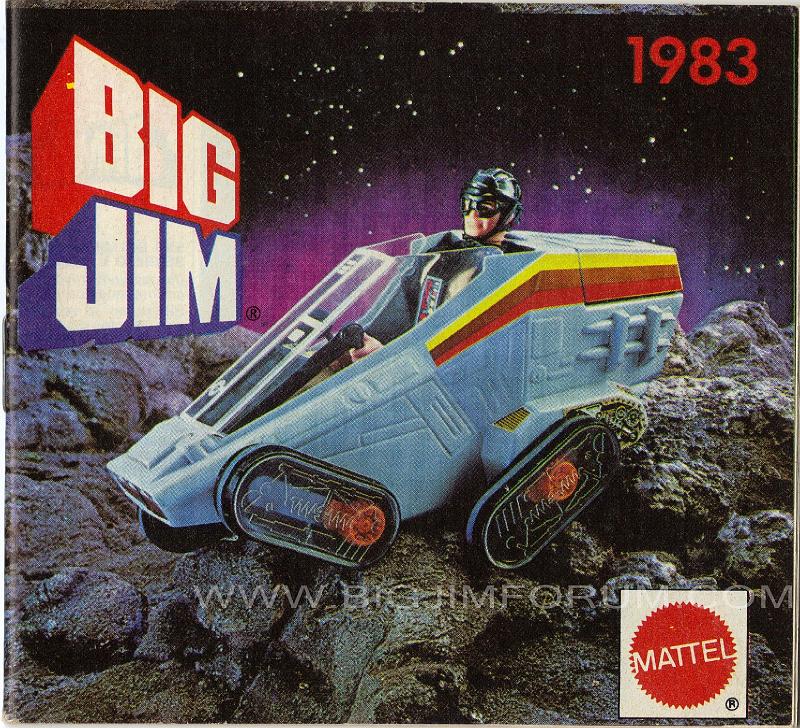
Some of my favorite Attak Trak-related artwork comes from MOTU artist R.L Allen:
